
Chair Programs
Treasurer Membership
Editor Communications
Meetup Instagram Outings Outings


Chair Programs
Treasurer Membership
Editor Communications
Meetup Instagram Outings Outings
Joe Doherty
Susan Manley
Ed Ogawa
Joan Schipper
Joe Doherty
Velda Ruddock
Ed Ogawa
Joan Schipper
Joan Schipper
Alison Boyle
joedohertyphotography@gmail.com
SSNManley@yahoo.com
Ed5ogawa@angeles.sierraclub.org
JoanSchipper@ix.netcom.com
joedohertyphotography@gmail.com
vruddock.sccc@gmail.com
Ed5ogawa@angeles.sierraclub.org
JoanSchipper@ix.netcom.com
JoanSchipper@ix.netcom.com
AlisoniBoyle@icloud.com
Focal Points Magazine is a publication of the Sierra Club Camera Committee, Angeles Chapter. The Camera Committee is an activity group within the Angeles Chapter, which we support through the medium of photography. Our membership is not just from Southern California but is increasingly international.
Our goal is to show the natural beauty of our world, as well as areas of conservation concerns and social justice. We do this through sharing and promoting our photography and by helping and inspiring our members through presentations, demonstration, discussion, and outings.
We have members across the United States and overseas. For information about membership and/or to contribute to the magazine, please contact the editors or the membership chair listed above. Membership dues are $15 per year, and checks (payable to SCCC) can be mailed to: SCCC-Joan Schipper, 6100 Cashio Street, Los Angeles, CA 90035, or Venmo @CashioStreet, and be sure to include your name and contact info so Joan can reach you.
The magazine is published every other month. A call for submissions will be made one-month in advance via email, although submissions and proposals are welcome at any time. Member photographs should be resized to 3300 pixels, at a high export quality. They should also be jpg, in the sRGB color space.
Cover articles and features should be between 1000-2500 words, with 4-10 accompanying photographs. Reviews of shows, workshops, books, etc., should be between 500-1500 words.
Copyright: All photographs and writings in this magazine are owned by the photographers and writers who created them. They hold the copyrights and control all rights of reproduction and use. If you desire to license one, or to have a print made, contact the editor at joedohertyphotography@gmail.com, who will pass on your request, or see the author’s contact information in the Contributors section at the back of this issue.
https://angeles.sierraclub.org/camera_committee
https://www.instagram.com/sccameracommittee/
2
September/October 2023
4 Finding Fall Color
One doesn’t have to endure the Instagrammification of our favorite spots in order to shoot fall colors. Finding your own places, and making something new of the old ones, keeps you outside and engaged.
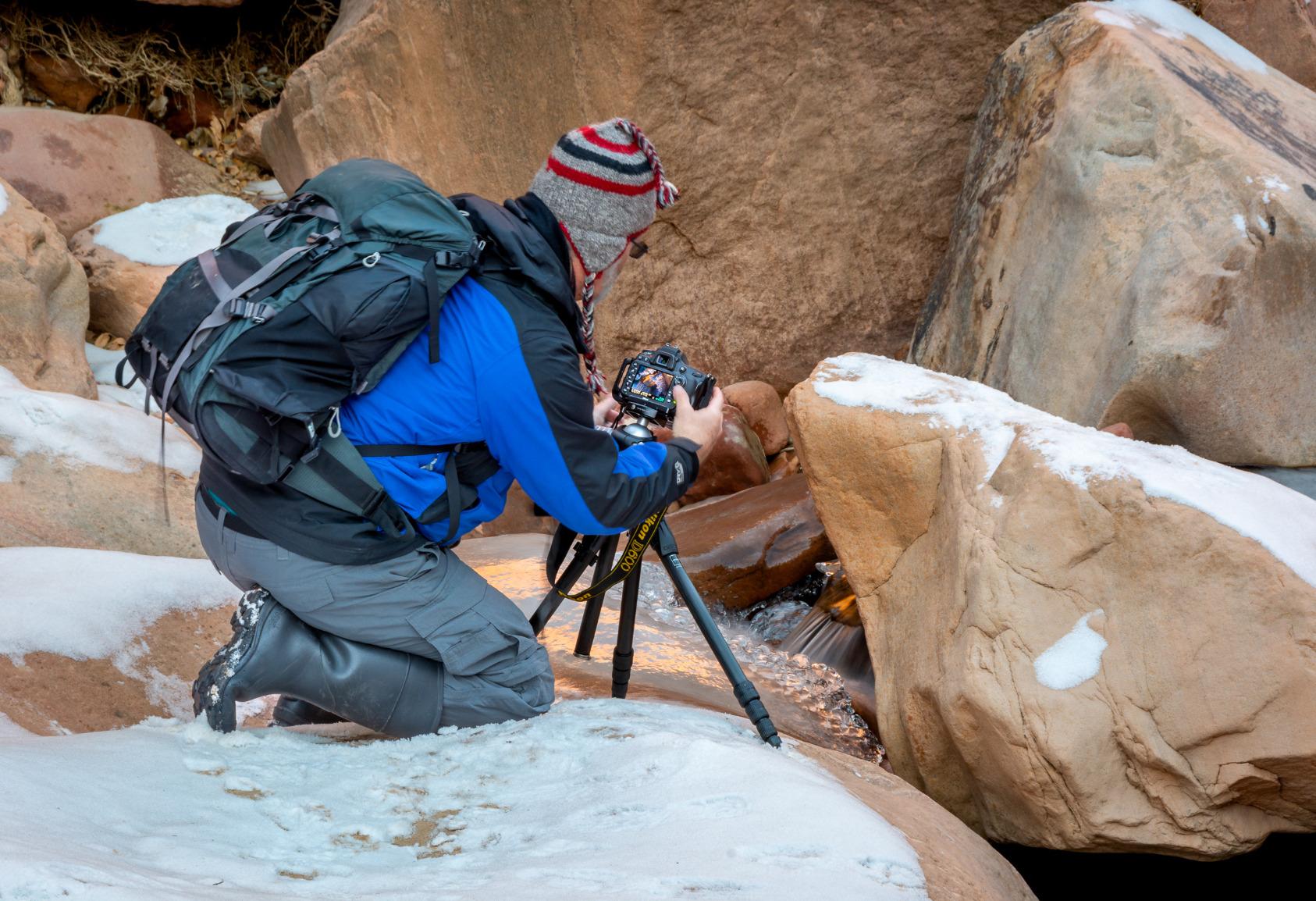 By Joe Doherty
By Joe Doherty
COLUMNS
16 Trip Report: A Different View of Bodie State Historic Park
By John Fisanotti24 On Location:
Hurling Your Camera Into the Air
By Rebecca WilksWe all fall in love with photography in different ways, and if we’re lucky it happens more than once.
My first time was when I was 13 or 14. I shot with a Minolta Hi-Matic 7S that I permanently borrowed from my sister. My friend George had a darkroom, and he showed me how to process black and white film. The first time I saw the roll come out, developed and fixed, I was hooked. Just looking at the negatives brought back the memory of shooting the picture, which saved a lot on printing.
With the camera I observed more, and became more aware of my family and friends. It also gave me a reason to show up, and to have access to places and events from which I would otherwise have been excluded. I still have those negatives. I scan and share them, and they still bond me tightly to the people in them.
Life intervened, and photography fell by the wayside until about 2010. That’s when I started to get interested in landscape and nature photography. As I mention in the cover story this issue, the fall color photography trip that Velda and I took in 2011 changed everything. I became more observant of the
world around me, more adventurous. Through my camera I have found ways to share what I see with my friends, family, and now many others. It changed my perspective.
In this issue we have two other articles about gaining a new perspective on the world through photography.
John Fisanotti gained access to a special place. He photographed Bodie at night with a small photography workshop, a rare event that allowed him to produce images that show his care for his craft and for his subjects.
Rebecca Wilks changed her perspective, literally. She did what many of us have sworn to never do, and she got a drone. It was a gift from her husband. She’s written that “hurling her camera into the air” has changed her photography. With that change has come additional responsibility, and she details for us how to be a drone photographer and a good citizen at the same time.
And of course in this issue we have all of the obsession/fascination/love expressed by our members through their photographs on the Members Pages.
Joe Doherty Chair, Sierra Club Camera CommitteeOctober 12, 2023 @ 7pm PDT
My photographic journey has taken me through many stages over the years. Early on I didn’t know what I was doing but I was filled with enthusiasm. Then I realized I needed some help if I was going to grow as a photographer, so I started attending workshops. As my skills grew, I found myself looking over my shoulder wondering if ‘they’ would approve of my photographs. But I finally had the confidence to realize that it is ‘I’ who has the last word. Now I’m focused on the expressive qualities of my photographs, wishing to share the emotions I felt in the field with my viewers. This has led to authoring a book titled “Creating Expressive Landscape Photographs.” I’m currently looking for a publisher.
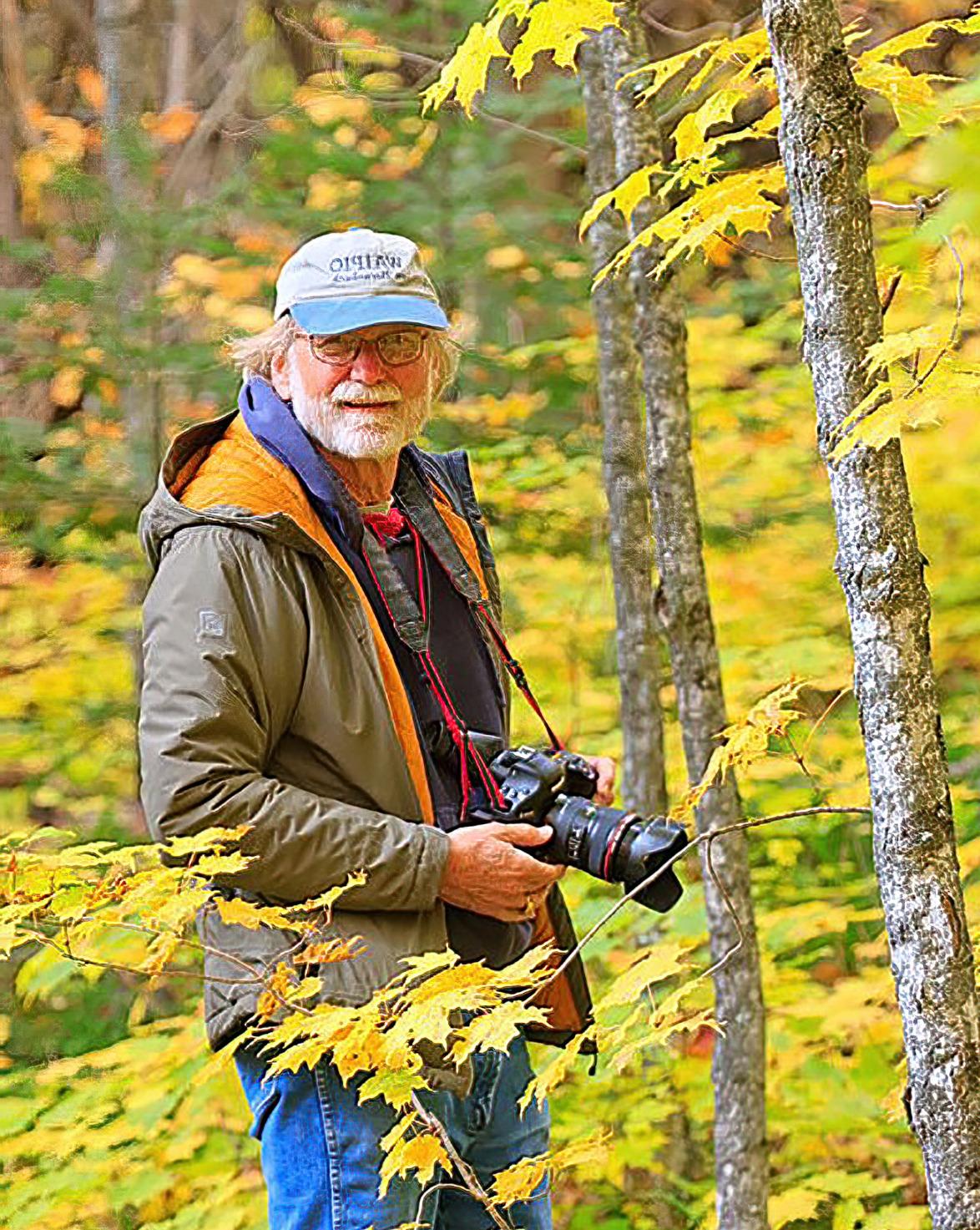
Some of the best way I can think of to give back to the photography community is to speak to photo organizations such as yours and lead photography workshops. I invite you to check out my work and workshops at https://ralphnordstromphotography.com/
The meeting will be at 7pm on October 12.
Register for the meeting at this link: https://shorturl.at/jqvAR
(Registering makes it difficult to Zoom-bomb us.)

One doesn’t have to endure the Instagrammification of our favorite spots in order to shoot fall colors. Finding your own places, and making something new of the old ones, keeps you outside and engaged.
By Joe DohertyWhen it comes to fall color, aspens are gateway trees.
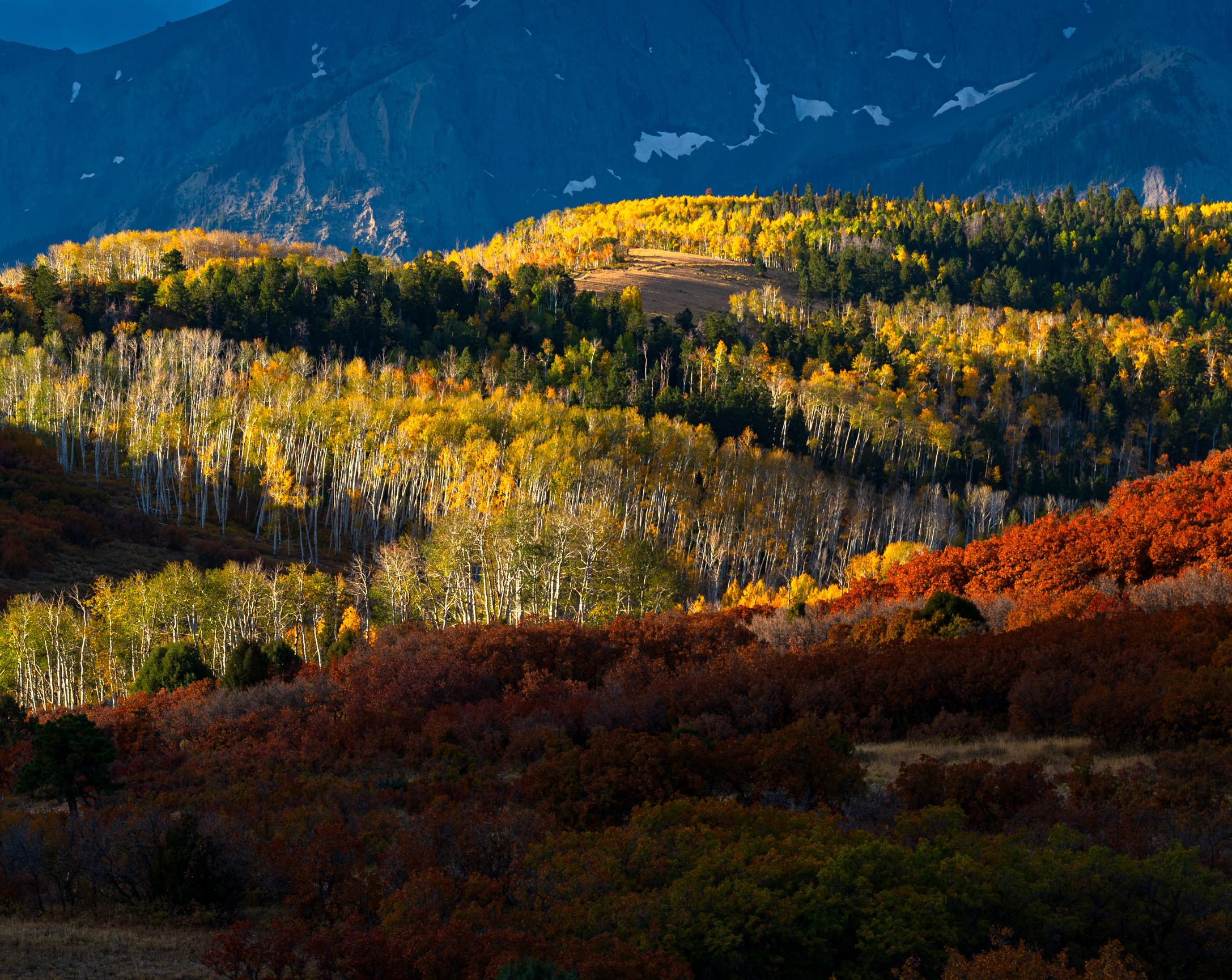
You notice a few around town that turn yellow in October, and one year you get your camera out and shoot them. Then you see an article about a place where lots of aspens change colors, big groves of them, waiting to be photographed . . . by you. And it's only 280 miles away!
So you go there for a long weekend. And then you go for a week. Pretty soon you're giving advice to other people about the best places to shoot fall colors. Then you start noticing other plants that turn colors, and read about places
far away with smaller crowds. Now in the deepest throes of addiction, you're driving for days to park before dawn on the side of a dirt road, with bear spray clipped to your hip, waiting for sunrise.
You know you've got a problem. But there is no twelve-step group for fall colors.
Nor should there be. We should all be so hooked by a subject that we look forward to photographing it.
Once upon a time I was not hooked. As a child of Los Angeles few things seemed more alien to me than glossy magazines celebrating
fall color. Images of New England highways lined with orange and red maples contrasted sharply with the dun-colored mountains of Southern California, where the only place one could be photographed in front of changing leaves was the Sears Portrait Studio. Thus it was not a subject or a time of year that held any particular meaning for me as a photographer.
That changed in 2011. My wife Velda and I drove to Bishop in mid-October with a vague plan to photograph aspens, carrying a few printouts and no expectations. The first sunrise, at Lake Sabrina, grabbed Velda and never let go. Within two days at Silver Lake I took a photograph that made me re-
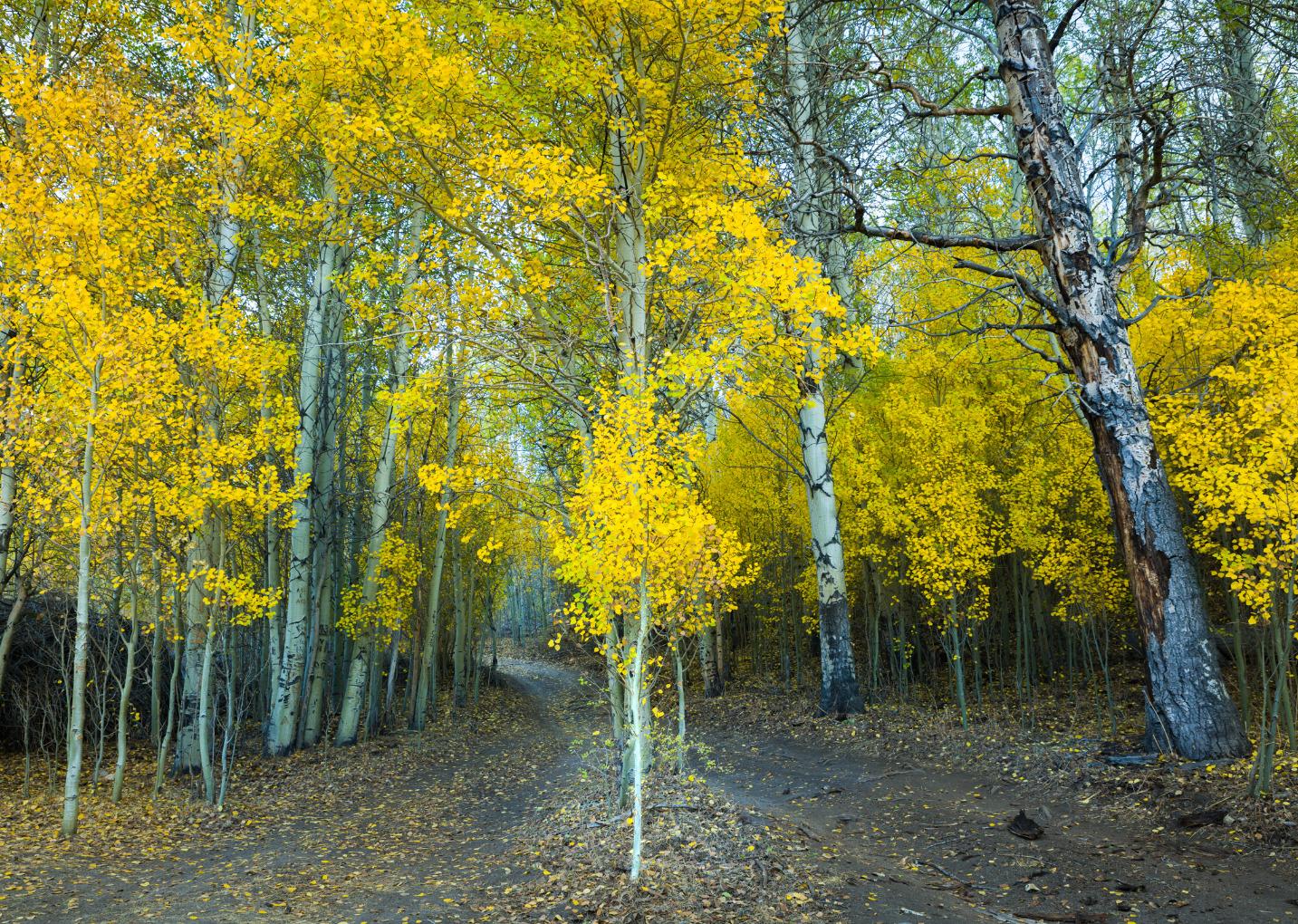
Trips on BLM roads brought us to this isolated aspen grove near Bodie
evaluate my career. Five years later we took up photography full-time.
We’ve been somewhere in the U.S. for fall color every year since. These trips have been surprising, awe-inspiring, disappointing, gratifying, and humbling. Places that we once
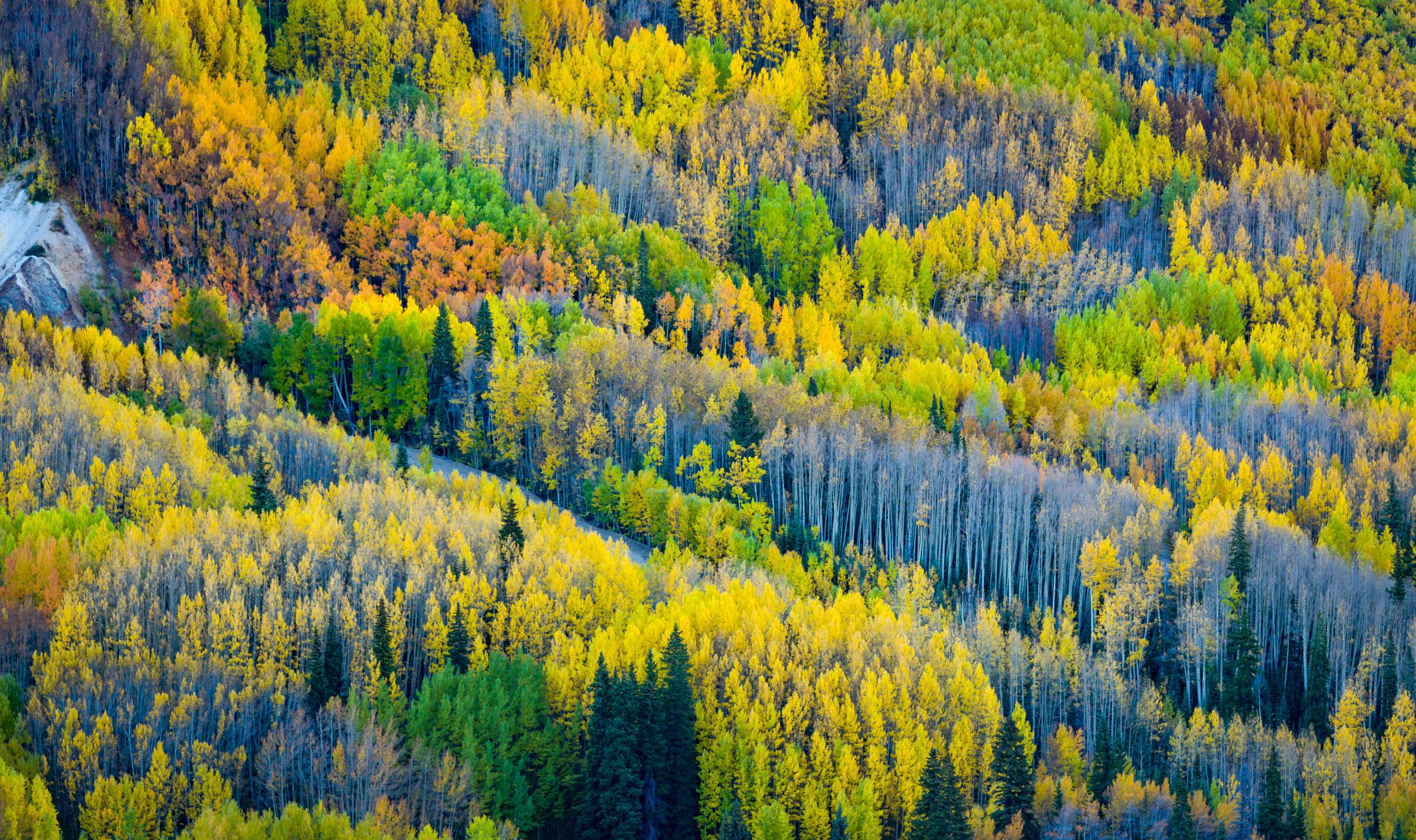
enjoyed in near-solitude have been hugged-todeath by social media, and places that we expected to be crowded turned out to be quite peaceful. We’ve signed up for workshops twice, but mostly we go our own way, using online resources, local tips, four-wheel-drive, and sheer dumb luck to find and photograph fall color.
Why do we do it? Because it’s beautiful. Because it requires us to make trips away from Los Angeles. And because fall colors can be found in a great variety of locations, altitudes, climates, and plants, which means that we will always encounter something new. In that spirit this article is meant to inspire you to find your own way into fall colors. While some of the locations I describe are wellknown, none of what follows should be considered a guidebook to famous tripod holes.
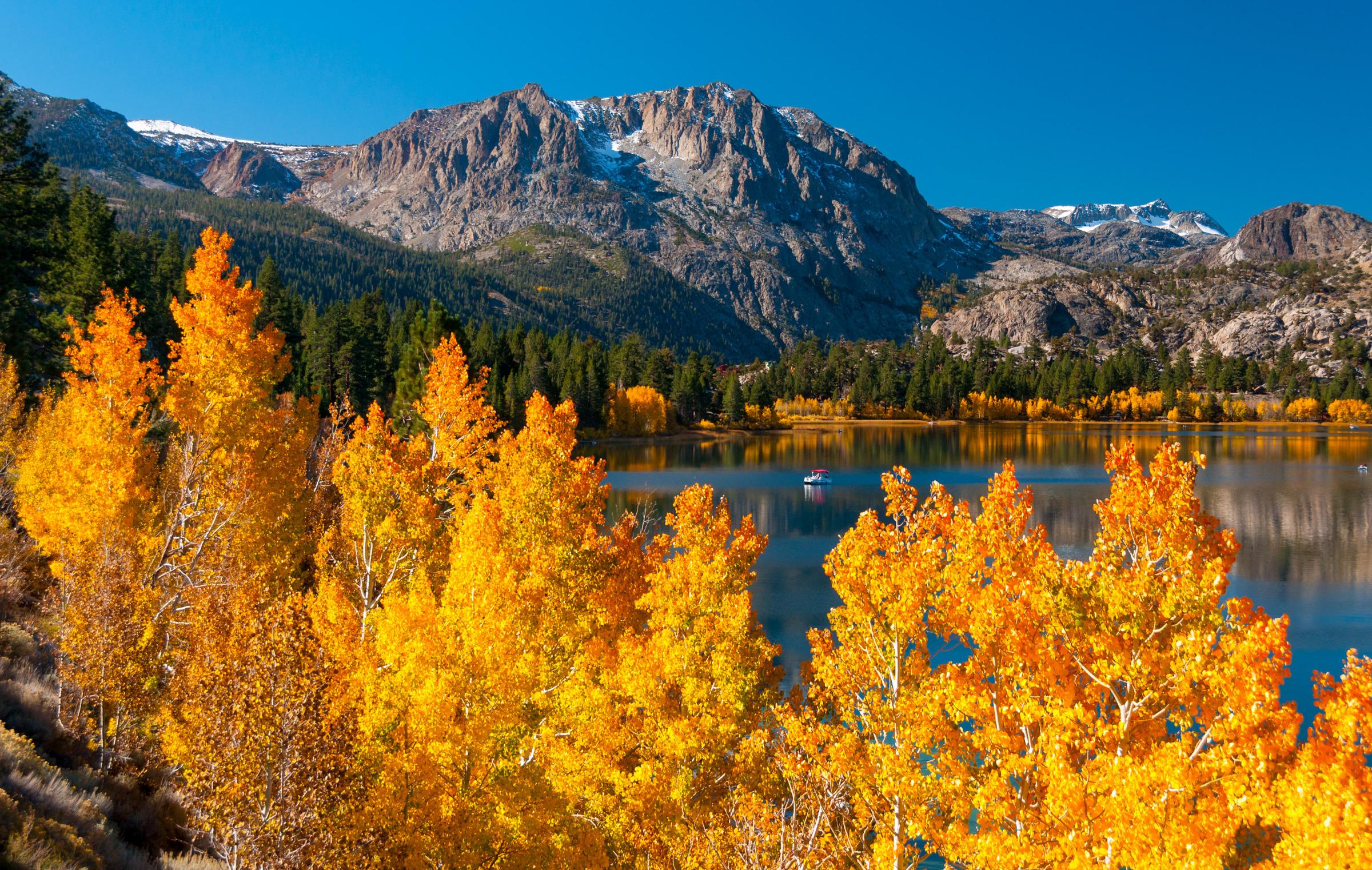
We all know that leaves change color and then drop off. But why? And how? Deciduous plants prepare for winter by building cork-like barriers between branches and leaves, barriers that cut off the flow of nutrients and water to the leaf. This shuts down production of chlorophyll -- which makes the leaves green -and reveals the underlying colors of betacarotene (orange) and flavonols (yellow). During this process leaves may also produce anthocyanin, which adds the color red to the fall palette. Eventually each leaf drops off its branch, a process that can be accelerated by freezing temperatures. If the leaves on the tree are black or brown, they have been frozen.
The intensity and location of the color depends on many things. Leaves will stay on the plant longer, and the color will remain vibrant longer, when the temperatures remain
above freezing. Color varies by the species of plant, and in the same location one can find seemingly identical plants that vary in the timing and intensity of color.
All of this is to say that when and where fall color presents itself to us is completely out of our control. There are some regularities and predictabilities about where and when we might capture it, and as photographers we need to play the odds. Knowing where and when certain conditions are prevailing (abovefreezing temps, no winds) can increase our chances of coming home with good images.
As a broad rule fall color will begin in the northern latitudes in North America and move southward as the days shorten. At a local level it will begin at higher elevations and move to lower ones, and in this it will also vary by the types of plants that grow at different elevations. It can take many repeated visits to a place to understand how these factors all interact. And still you might be surprised.
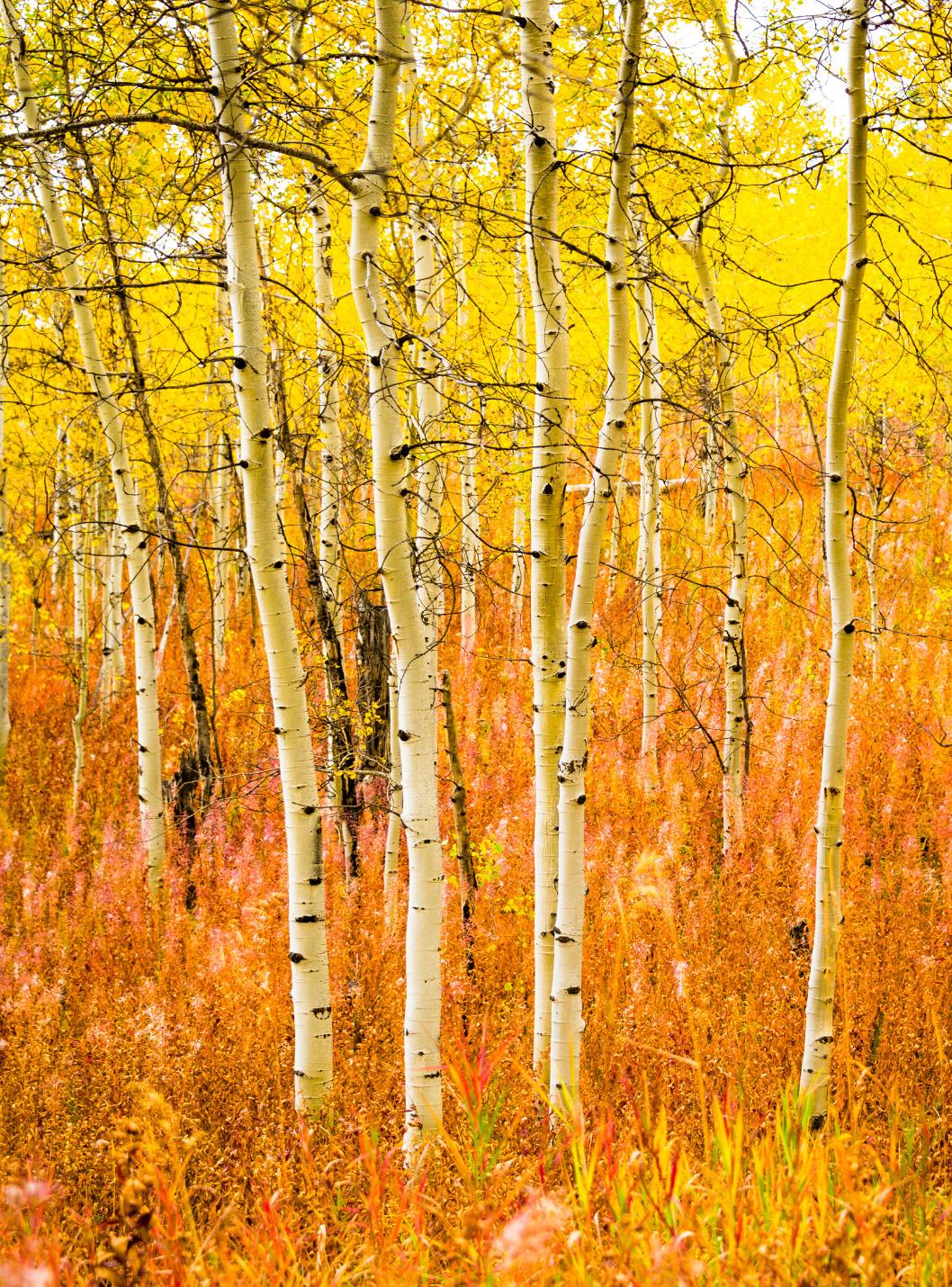
On the national level the best resource for planning a fall road trip is the Fall Foliage Prediction Map of the Smoky Mountains National Park (https://smokymountains.com/ fall-foliage-map/). It illustrates weekly predictions of foliage color from September 4th to November 20th across the United States. It is not simply a progressive blanket of color starting at Canada and ending at the Gulf of Mexico, but a county-by-county prediction that appears to take into account local factors like climate and native plants.
This can lead to counter-intuitive results, like Los Angeles County reaching its peak at the same time as Clare County, Michigan (early October).
A second excellent resource, which focuses entirely on the Sierra Nevada Mountains, is California’s Fall Color: A Photographer’s Guide to Autumn in the Sierra by G. Dan Mitchell (Heyday, 2015). https://www.heydaybooks. com/catalog/californias-fall-color-aphotographers-guide-to-autumn-in-the-sierra/ For a first-, second-, or even multiple-time visitor to the Eastern Sierra this book is an important resource on locations, foliage, timing, and technique. It’s conversational, well-organized, and has a section at the back that lists even more resources for finding and photographing fall color.
It’s relatively easy to find guides to other places. For example, a quick online search for
“Colorado Fall Colors” brings back multiple reports, maps, and images. Similar results are available state-by-state, and in many of them there are local weekly reports. One can also find “kml” files that you can import into Google Earth, and which provide pinpoint location data for promising sites.
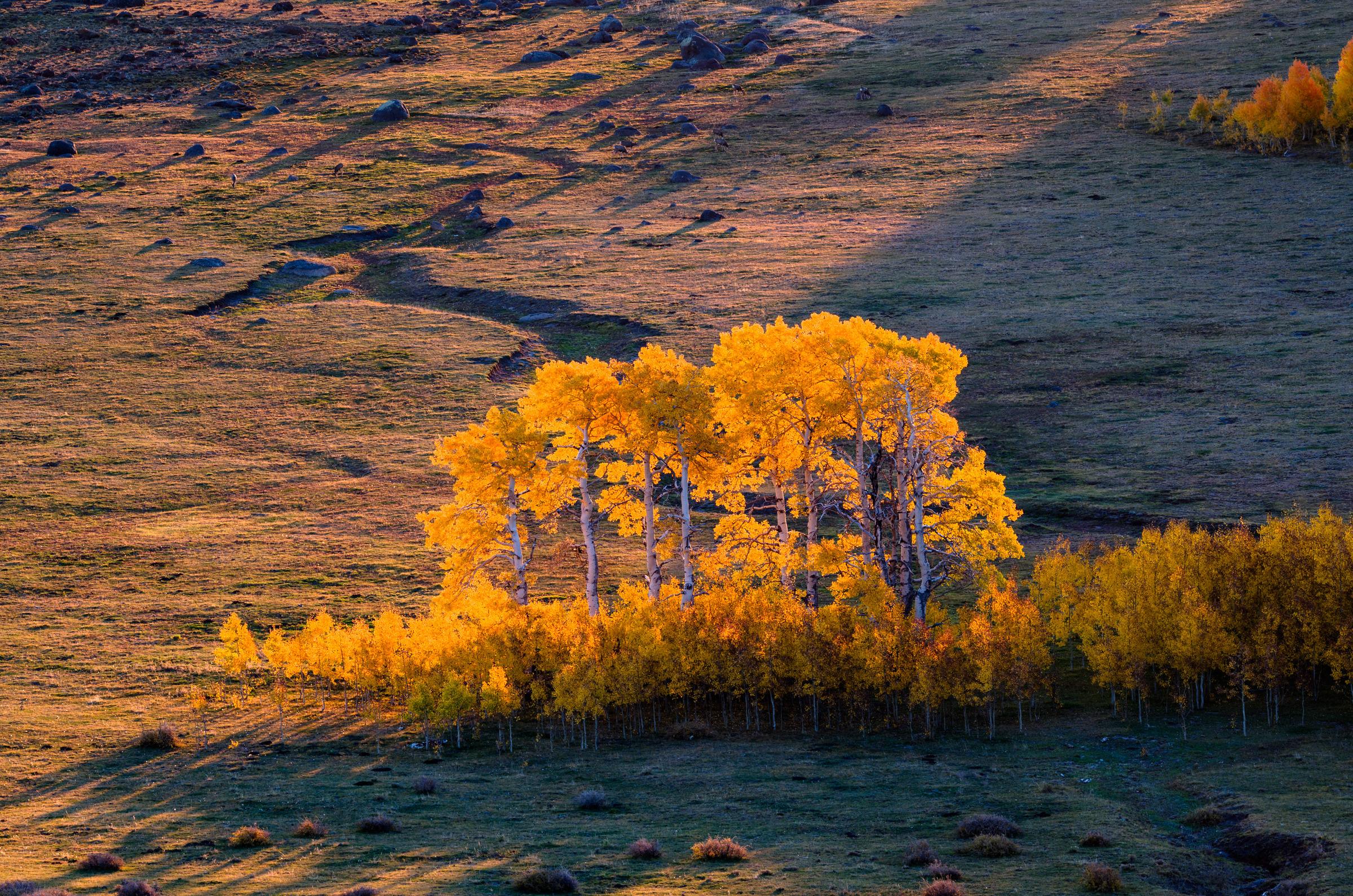
Local knowledge is also quite valuable. Stop in at a Forest Ranger station or BLM office and ask them for recommendations. It’s a question they’ve heard a thousand times, and if you appear intrepid they might give you directions to some relatively uncrowded places.
These resources are indispensable for finding locations when you haven’t been to an area before. Keep in mind, though, that some of the locations most often cited (such as North Lake near Bishop) have evolved from being merely popular ten years ago to being a
madhouse of Instagrammers today. While it might be worthwhile to visit these places at least once, finding a place that’s your own can be even more rewarding.
Finding a place that is your own takes work. It takes a willingness to come home with very little to show for your time and effort. And it takes you places that most other people just won’t see.
I like to begin with Google Earth. It requires a little practice. A good place to start is by using it to explore places you already know. Silver Lake, in the June Lake Loop, is a good example. The inlet, outlet, shoreline, and creeks at Silver Lake are almost entirely full of aspen trees that explode with color in the fall. Use Google Earth to fly around the lake for a few minutes to familiarize yourself with the shape, color, and size of aspen groves.
Then get some elevation and take a look at the surrounding landscape. You will see the telltale signs of aspens in creekbeds, on hillsides, and tucked away in canyons. Note the type of terrain they like, which will make it easier to spot colonies in other places. Many of these spots are accessible by foot or by a vehicle appropriate for the conditions. Few of them will be swarming with Influencers making a costume change.
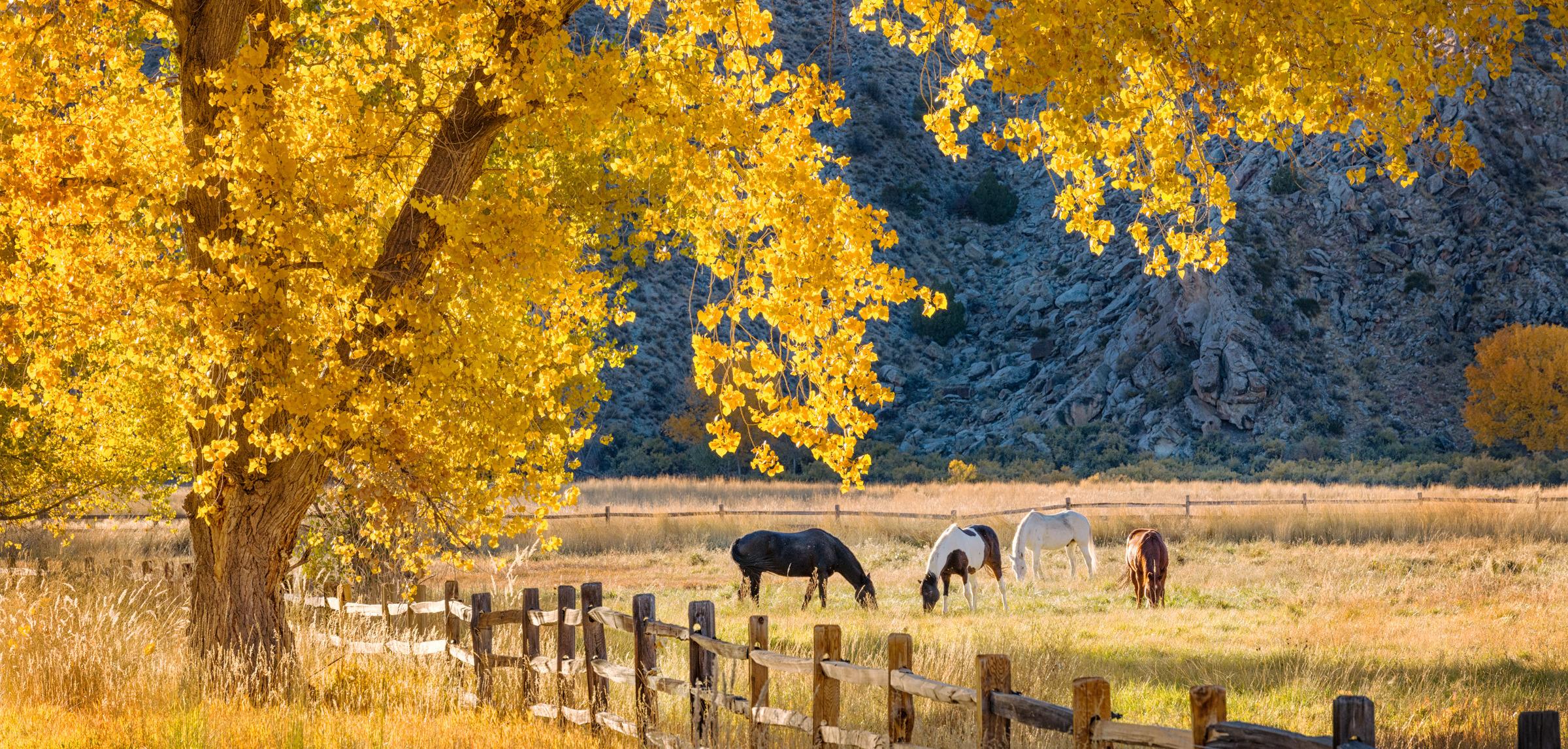
My other strategy is to just roam around on forest service roads. These roads were built for a reason. Sometimes that reason was to connect mines or small towns, which require a water supply. Often that supply is a spring or a small stream. There isn’t enough water present to justify building a big dam, but there is more than enough to keep a remote colony of aspen trees quite happy. These roads are easy to identify using Motor Vehicle Use
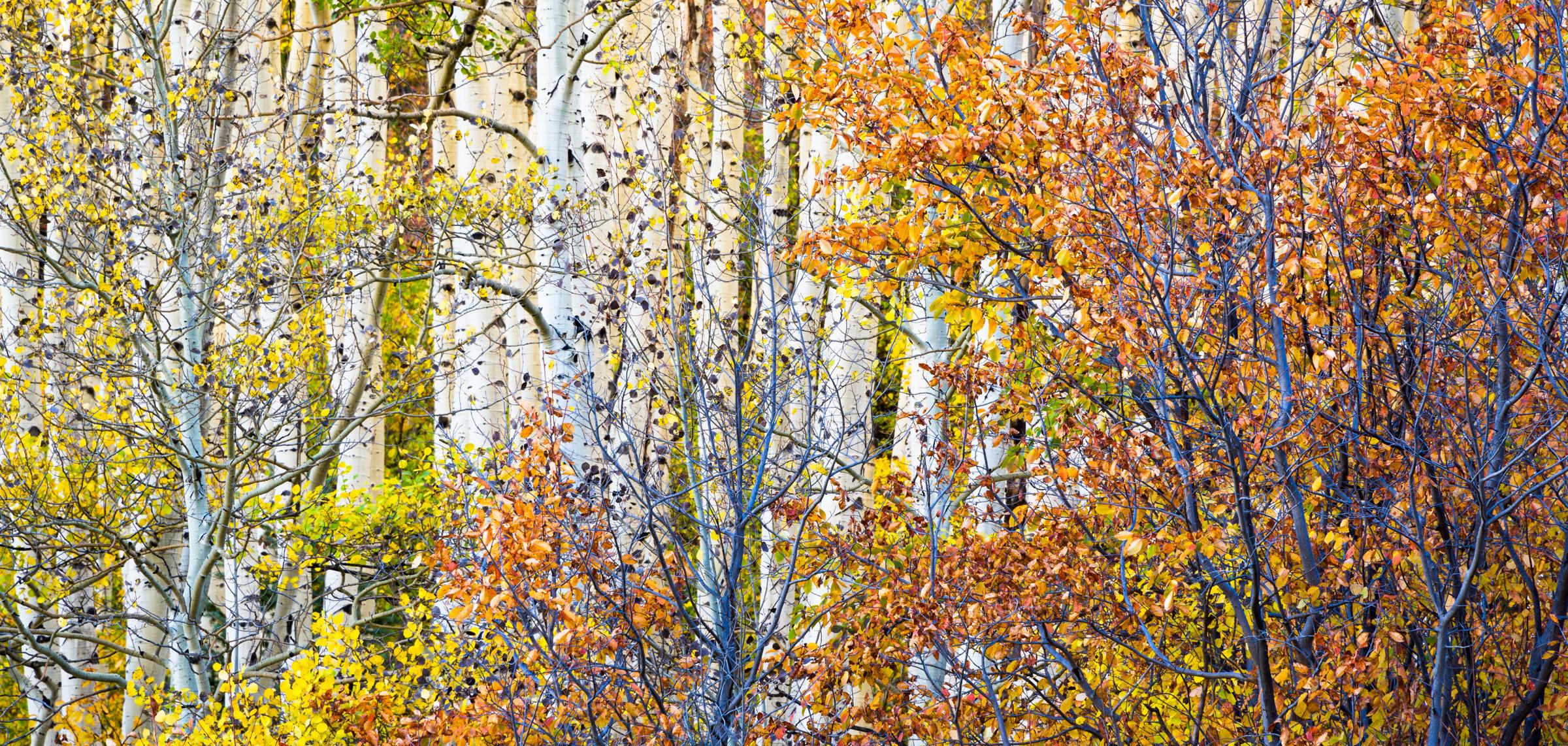
Maps (MVUM, provided for free at Forest Ranger offices), and using the app Gaia Pro.
Go in the fall.
More specifically, go when the types of vegetation in a particular microclimate are displaying their best colors. This depends on length of day, elevation, and temperature, all factors that are more-or-less included in the Smoky Mountains map. It’s important to remember that aspens can be spectacular, but they are also fickle, sensitive to conditions, and short-lived. Two groves within a mile of each other can turn color more than a week apart.
They often co-exist with other plants that are more predictable and have more consistent color. These include cottonwoods, dogwoods, ferns, grasses, and scrub oaks. All of these contribute to the autumn palette. We have more than once been surprised to find pockets of exploding color along an unpaved road, both far from the aspens and under them.
Your timing should be flexible, as should your destination. Pay attention to local weather reports for the places you want to visit. Does the temperature stay above freezing overnight? If not, the color is likely to be muted, and many leaves will be on the ground. Is snow in the forecast? The contrast of golden/ orange/red leaves and fresh snow is a special treat. It dissipates quickly, though, so be there when it’s falling. Are leaf-stripping high winds predicted? They primarily affect the leaves that have already turned color, so green or limegreen leaves will likely be unaffected.
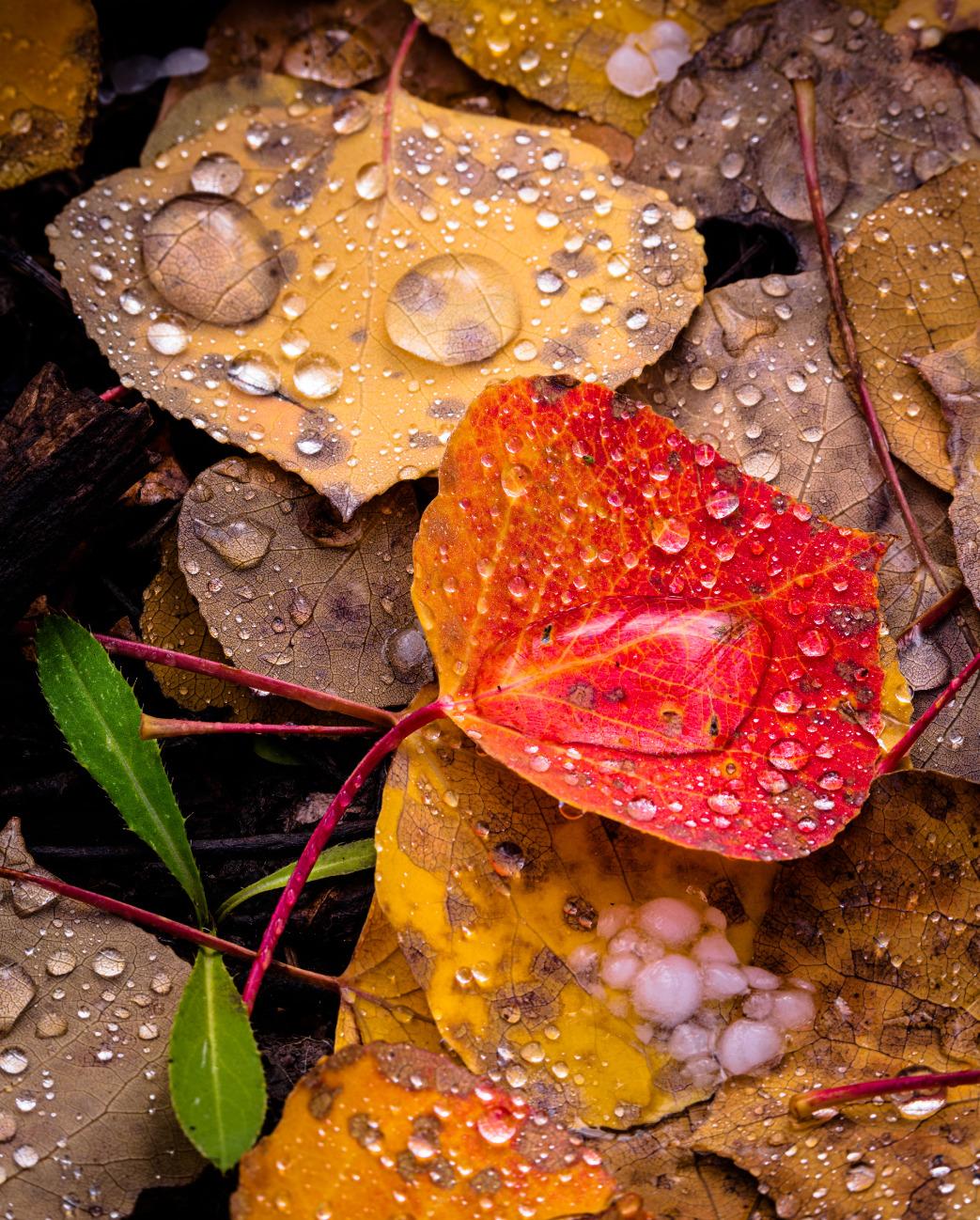
As mentioned at the beginning, aspens are a gateway tree. Colonies of them snake down
canyons, line the shores of ponds and lakes, and blanket hillsides in snowy regions. Their white trunks are majestic sentinels, their yellow-orange leaves are fluttering confetti that sparkle and twist in every light. Photographing them is not just a delight. It is addictive.
A large part of what makes them so compelling is that it’s almost impossible to make a bad photo of a stand of aspens in the fall. You are rewarded almost immediately with postcard shots and social media likes. Afterward, though, you find yourself wanting more, and you will spend money and time to get it. Of course it’s perfectly justifiable. “Leaf close-ups with a blurred background are nice; it’s time to buy a macro lens.” “Snow is forecast tomorrow; I’ll call in sick.” The variations are endless.
These variations aren’t frivolous, though. With a good macro lens you can photograph snow crystals melting on a fallen leaf, turning leaf litter and weather into a pure design. With a long telephoto you can compress a grove of aspens into a tight composition. With good boots you can stand in the middle of a creek and photograph leaves flowing downstream. With a little hiking you can find aspen trunks scarred by bear claws. With a polarizing filter you can saturate the color of the leaves. With a four-wheel-camper you can travel to remote locations searching for unphotographed vistas. And with a good blanket you can spend hours on your back looking up through the canopy, photographing the crown against a bluebird sky. That is something everyone should experience at least once.
Once the aspens set their hooks into you other plants will start to draw your attention. The

floor beneath a stand of aspens is often as interesting as the aspens themselves. A carpet of golden ferns from which white aspen trunks emerge is sublime. Grasses that turn pink in the fall delight me. Knee-high shrub oaks sit on the perimeter of groves, with red and brown leaves accenting the landscape. Even a geranium will add color to a forest floor, poking through the litter with its fivelobed red leaves. Of course, all of these also grow in areas without aspens.
Cottonwoods occupy some of the same spaces as aspens, but often dominate the landscapes where aspens do not grow. They are found at lower altitudes, on valley floors and along rivers, and thus their colors emerge later in the season. Given their size and the texture of their trunks, I find cottonwoods to be strong compositional elements for a bigger landscape.
Other plants and trees that provide fresh delight in springtime – dogwood, maple, and birches – are equally impressive in the fall. They provide splashes of color to entire vistas while also being worthy of close-up attention. These can be found co-existing in the forests of the north and the east. Since they are not a monoculture like aspens, there is less structure to their appearance and creating solid compositions requires a different way of thinking about fall color. It helps, I’ve found, if you squint and look at the forest rather than the trees.
Lastly, keep an eye out for surprises. Driving along a forest road near Boulder, Utah, we turned a corner and found a spot that we call “The Paintpot.” It’s a mixture of plants in an area scarred by fire that would never be on a workshop itinerary, but it kept us busy for over an hour. Also be prepared to let the light surprise you. During a fall snowstorm in
Yosemite a shaft of light broke through the clouds and the forest canopy and lit up a small stand of dogwoods.

Things change quickly outside, especially in the fall. You should not be fumbling with settings as the light rakes across the Dallas Divide. If you tend to do most of your shooting with your iPhone and leave your “good” camera in the closet for special events, consider making your iPhone the primary camera for your trip. Isn’t this sort of cheating? No. A good iPhone photo can be printed up to 11x14 without degradation, and we all know how superb it is online.
Alternatively, spend a couple of weekends before the trip giving your closet camera a good workout. Go out at dawn and dusk and try to keep up with the changing light. Keep your head on a swivel to see what’s happening
all around you; adjust your f-stop, shutter speed, and iso to match conditions; quickly change lenses; and swap filters. Also, have storage cards and batteries at hand, set up your tripod (and take it down again), and have a plastic bag in case it starts to rain.
It’s OK to not be prepared for everything as long as you’re prepared for the things that matter to you. Trial-and-error is the best way to figure out what goes into your bag. When I step out of the truck, my backpack contains a Nikon D850, four lenses (16-35, 24-70, 100400, and 55mm macro), four batteries, about a dozen SD cards, lens cleaning supplies, filters (polarizer and variable neutral density), a small flash, and a medium weight tripod. On a four-week trip I will use all of these, I just never know when.
What I carry today is roughly what I carried four decades ago. It suits the way I work. I know many photographers who will unpack and repack their equipment for each trip. That suits them. One famous photographer of my youth carried two cameras and two lenses. He never took an assignment that he couldn’t satisfy using that gear. Carry what you’ll use.
There are many videos, blogs, and books about shooting fall color, and each one has its own valid insights. It’s impossible to post a comprehensive list of what I consider important technique, so I’ll concentrate on a few that I find useful.

Use a polarizer, and use it properly. In most circumstances the color of a leaf or a blade of grass becomes more intense with polarized light. Since leaves are not flat, the angle of reflection will vary across its surface, so it’s important to view the effect of the polarizer as you rotate it. I will sometimes look through the filter with my naked eye, until I see what it is doing. Once I’m satisfied I notice what the angle of the filter is (using the writing on the edge of the filter as a guide), and then put it on the camera with that orientation.
Do not use a polarizer on a wide angle lens if the sky is in frame. It makes the image and the sky look weird.
Use the RGB histogram on your camera display to check your exposure in the red channel. You want to avoid over-exposing the yellows/oranges/reds in a photograph, because you won’t be able to recover detail in those areas of the photograph even if you shoot in RAW. When in doubt, underexpose a little.
Work the scene (see my May 2022 “How-To” on the topic). Try to shoot at least six different photographs of every location. Shoot with a
wide lens, a medium lens, and a telephoto lens, and shoot vertical and horizontal aspects with each length. Following this discipline can lead you to see things you would otherwise overlook. It also gives you flexibility when you return from a shoot if you choose to publish or license images you’ve made.
Arrive early and stay late. The blue light before sunrise and after sunset is a spectacular contrast to the warm fall colors. Similarly, the salmon-colored light reflected from clouds just after sunset can completely change the look of a scene. But you won’t see the change unless you wait for it to happen, so don’t put your gear away early. And remember that your autofocus will fail as the light fades, so be prepared to focus manually.
Finding your own little patch of autumn is one of the challenges of photography, and one of the most rewarding. It requires re-orienting your vision from postcard beauty to the complexity of natural change, and being happy with the process no matter what the outcome. At the very least, it gets you outside.
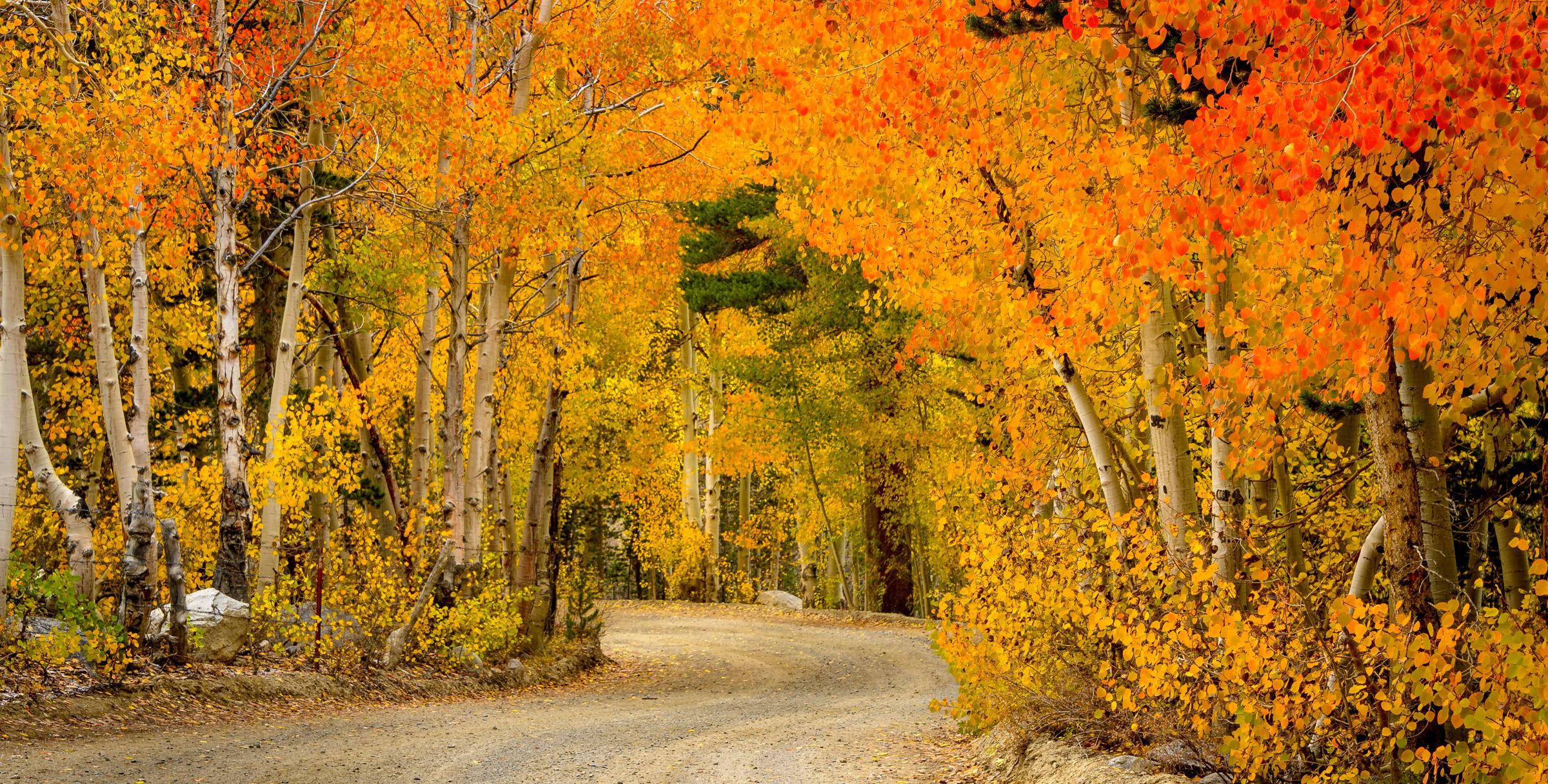
I imagine many Sierra Club Camera Committee members have photographed the historic gold mining town of Bodie, in Mono County, California. In its heyday, in the years 1877-1881, Bodie peaked with a population of 8,500 people and 2,000 buildings. In the 20th century, fires and declining production reduced Bodie to an unpopulated ghost town. Since 1962, it has been a State Historic Park and a National Historic Landmark.
What remains of the town, presents a photographer with iconic photos of an Old West mining town. As popular as it is as a photo destination, almost everyone’s photos have a common look – they are all exterior shots taken during the day. It’s no wonder, for the State Park Department, limits visitors to the hours of 9:00 a.m. to 6:00 p.m. (summer hours) and entry into the buildings is forbidden.
But what if one could stay after dark? Bodie is located under some of the darkest, non-lightpolluted skies in California. Also, what could be photographed if access to the interiors of the buildings was granted? Last year, I found the answer to both questions, when I joined a Photo Workshop, conducted by Betty Sederquist. Betty is a commercial photographer, who has been leading workshops, including the Bodie workshop for many years. Her connections with the State Park personnel, enables her workshop participants unique access to the park, unavailable to the typical visitor.
The workshop began on the evening of September 29, 2022, at a home overlooking Mono Lake. After an introduction, participants practiced taking photos of the Milky Way. For some, this was their first time doing this type of photography, which is why Betty schedules a practice session before our visit to Bodie. The workshop was timed to be near the new moon phase when the sky would be the darkest.
We were in Bodie, the following night, with a 5-day old waxing crescent moon low in the south western sky. Moonset that night was around 9:30 p.m. In comparing the photos I took before and after moon set, I concluded the weak moonlight was a benefit. It provided just the right amount of fill light to show the surroundings of the buildings, providing context to the subject. Without the moon, buildings appeared unmoored in darkness. I brought a light with me to “light paint” the subject buildings. It was a 6” x 9” battery operated LED light panel, which was dimmable, and had adjustable color temperature from 3200° K to 5500° K.
Although I had a tracking mount, to allow long exposures without streaking the stars due to the earth’s rotation, I didn’t use it because setting it up and polar-aligning it for each shot would take too much time. Instead, I used a stationary tripod, and kept my exposures short to minimize the streaking. The length of my exposures varied, depending upon the focal length of the lens and the part of the sky being photographed. When
shooting in the direction of the poles, the apparent motion of the stars across the sky is smaller, permitting longer exposures.
Let’s look at some of the photos. For the night shots, all were taken with a Nikon D810A body, which is Nikon’s DSLR optimized for astronomical photography:
The Wheaton & Hollis Hotel was photographed in late twilight, hence the intense blue sky. Most of the illumination came from the crescent moon at my back. One participant positioned a light on the porch, to illuminate the doorway. Notable astronomical objects visible in the sky are the Double Cluster in Perseus, M 31, commonly known as the Andromeda Galaxy, and the planet Jupiter.
The Big Dipper meets the Methodist Church. The moon provided the overall lighting. I light painted the front of the church, and the interior. I needed a one-minute-long exposure to give me time enough to do the light painting. When light painting, I always made sure to stand off to the side of the camera, to avoid, flat, frontal lighting. To light the interior, I shut off the LED light, and then ran into the photo and up the steps into the open doorway of the church, and, once I was sure I was out of sight of the camera, turned on the light for about ten seconds, then I shut it off and ran back out of the photo. As long as I moved fast enough, the camera wouldn’t record my intrusion.
The Milky Way over Main Street. This view is facing to the south west, so I waited until the moon was below the buildings, but it does
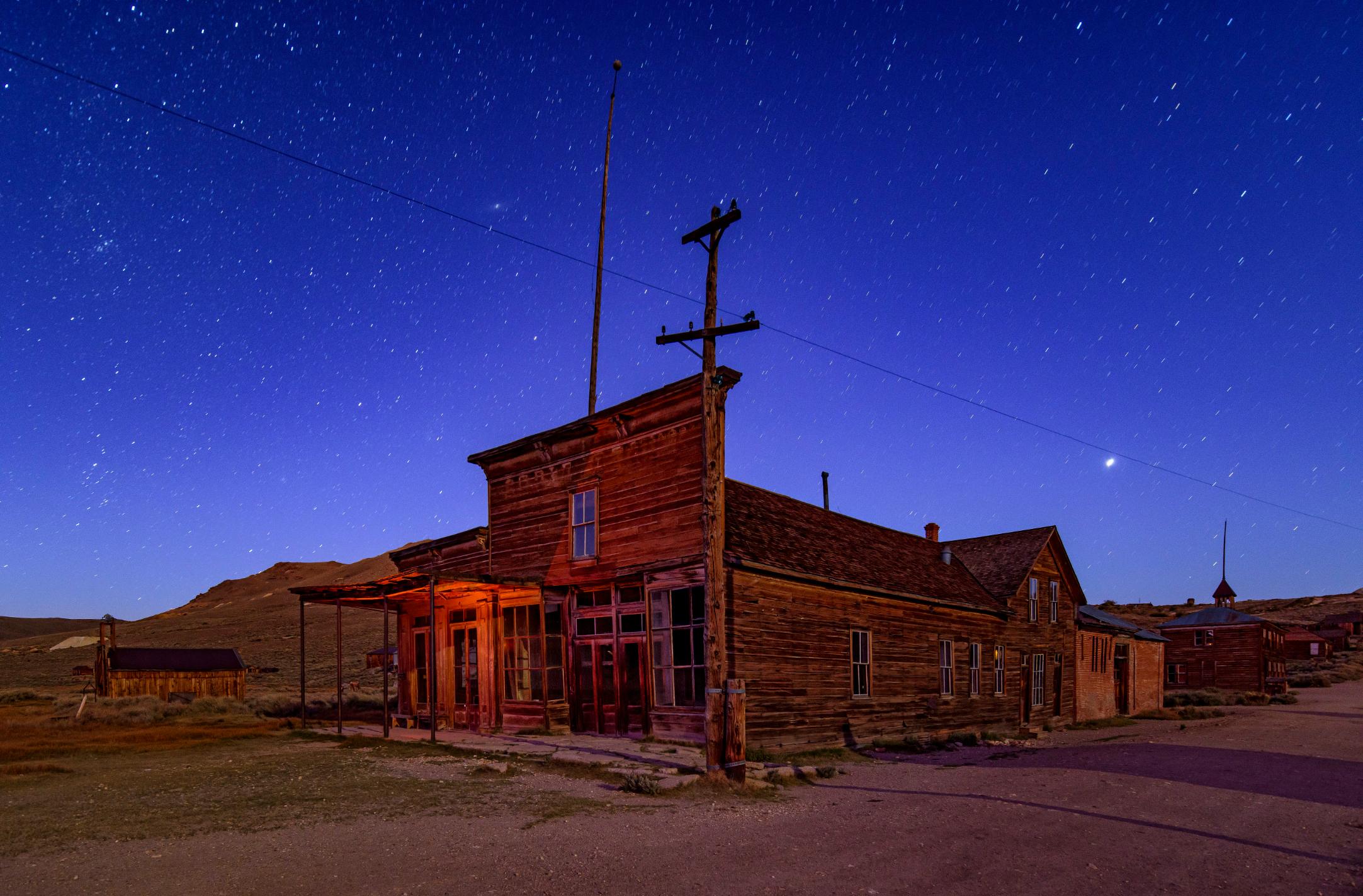
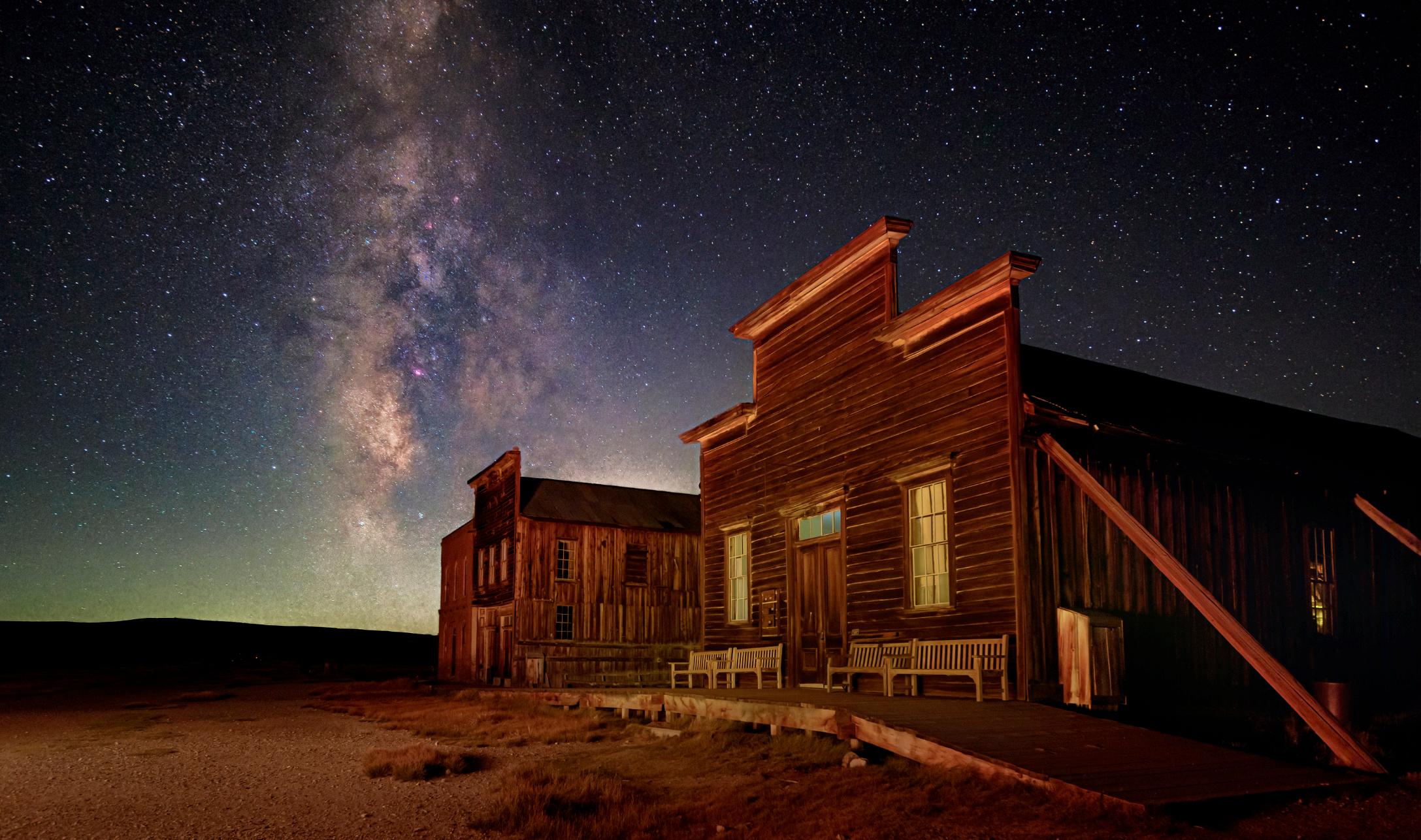
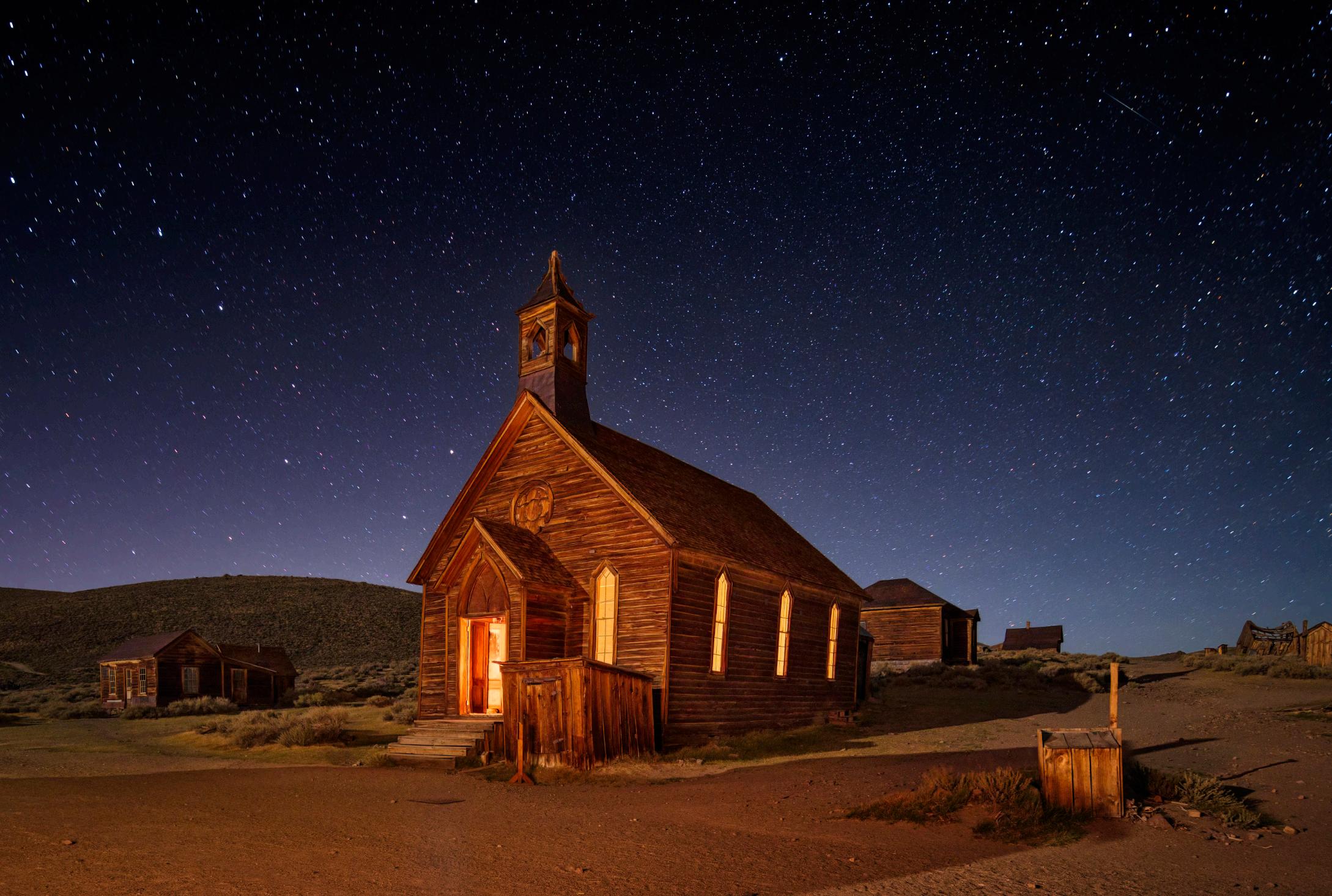
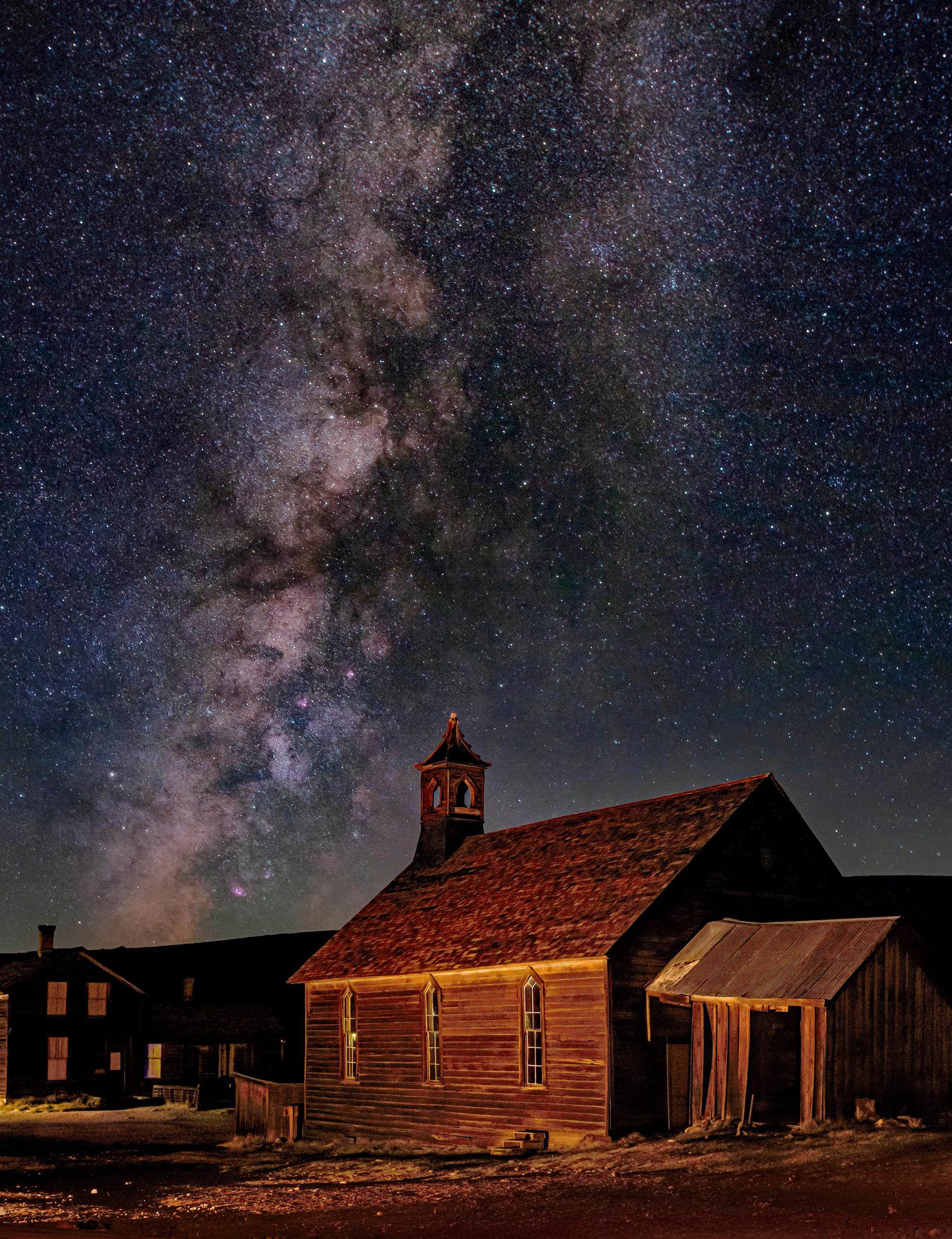
provide a nice glow above the I.O.O.F. Hall, in the center of the photo. When light painting, each attempt can be slightly different, depending on where I point the light and how long I hold it. I typically made a number of attempts and this image is a composite of the best parts of several individual frames. With the camera locked down on the tripod, getting these different layers in registration was easy to do.
The Milky Way over the Methodist Church. This point of view is looking to the south west and I waited until after the moon had set. Since the moon was in this part of the sky, shooting earlier would have been the lunar equivalent of shooting directly into the sun.
I light-painted the side of the church. The more distant lights came from other photographer’s spillover light-painting, which, I believe benefited this photo.
Cain Residence. By now the moon had set. Without moonlight to illuminate the surroundings, my photos lacked the appeal of the more evenly lit images. You can see here that the background and the sky is noticeably darker. In this photo, I light-painted the right side of the building, and the additional lighting on the left, was spillover from other people’s lights farther down the street. This is a composite image of the best frames.
The next phase of the workshop was Sunday
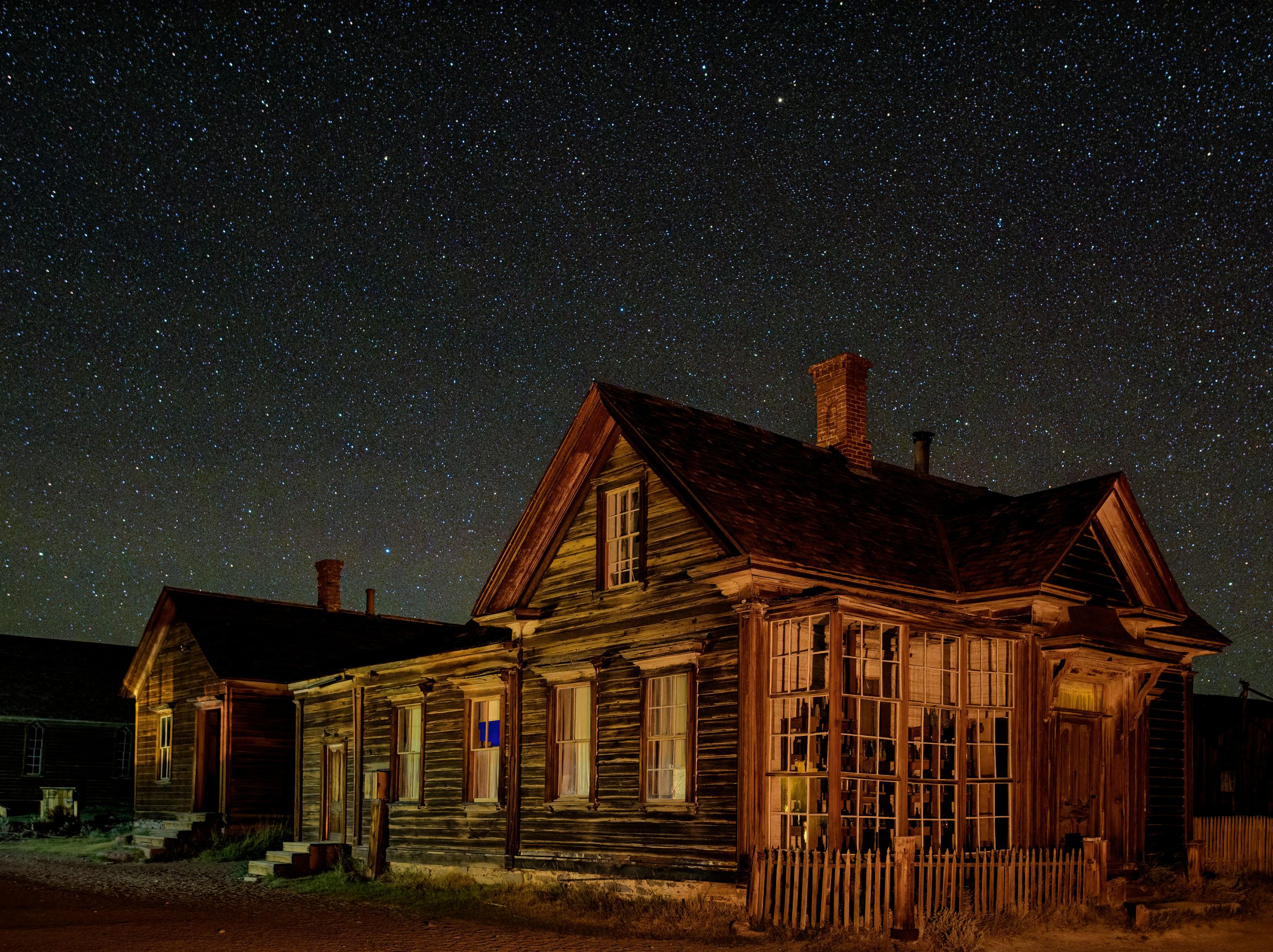
morning, when we were allowed into selected buildings to shoot interiors. Only a limited number of photographers could be in a building at the same time. Photo backpacks had to stay outside. We had to be very careful to not touch or accidentally bump anything with our camera and tripod.
We arrived in the cold and dark at 6:00 a.m. and started three hours before the general public was admitted to the town at 9:00 a.m. For the interiors, shooting bracketed exposures to create High Dynamic Range (HDR) composites helped to draw out the best detail and rich color in challenging lighting situations.
I found my 19mm f/4 tilt-shift lens to be especially useful in these locations, both for its wide field of view, and its adjustments to keep
things centered and square. For the interiors, I used a Nikon D850 camera. The software I used to process the HDR blends was either Lightroom, or Aurora HDR. The tinted monochrome interiors were created using a pre-set I found in Aurora HDR, which I feel lends an appropriate rendition for this subject matter.
Betty’s website (https://www.sederquist.com/) says that this year’s Bodie Workshop is “Canceled” but watch it in the future, or contact her for information if a similar opportunity to get unique photos of Bodie is available. This was my fourth visit to Bodie, going back to 1971, and with each visit, I think I get ever better photos. This workshop expanded my portfolio from this iconic ghost town immensely.
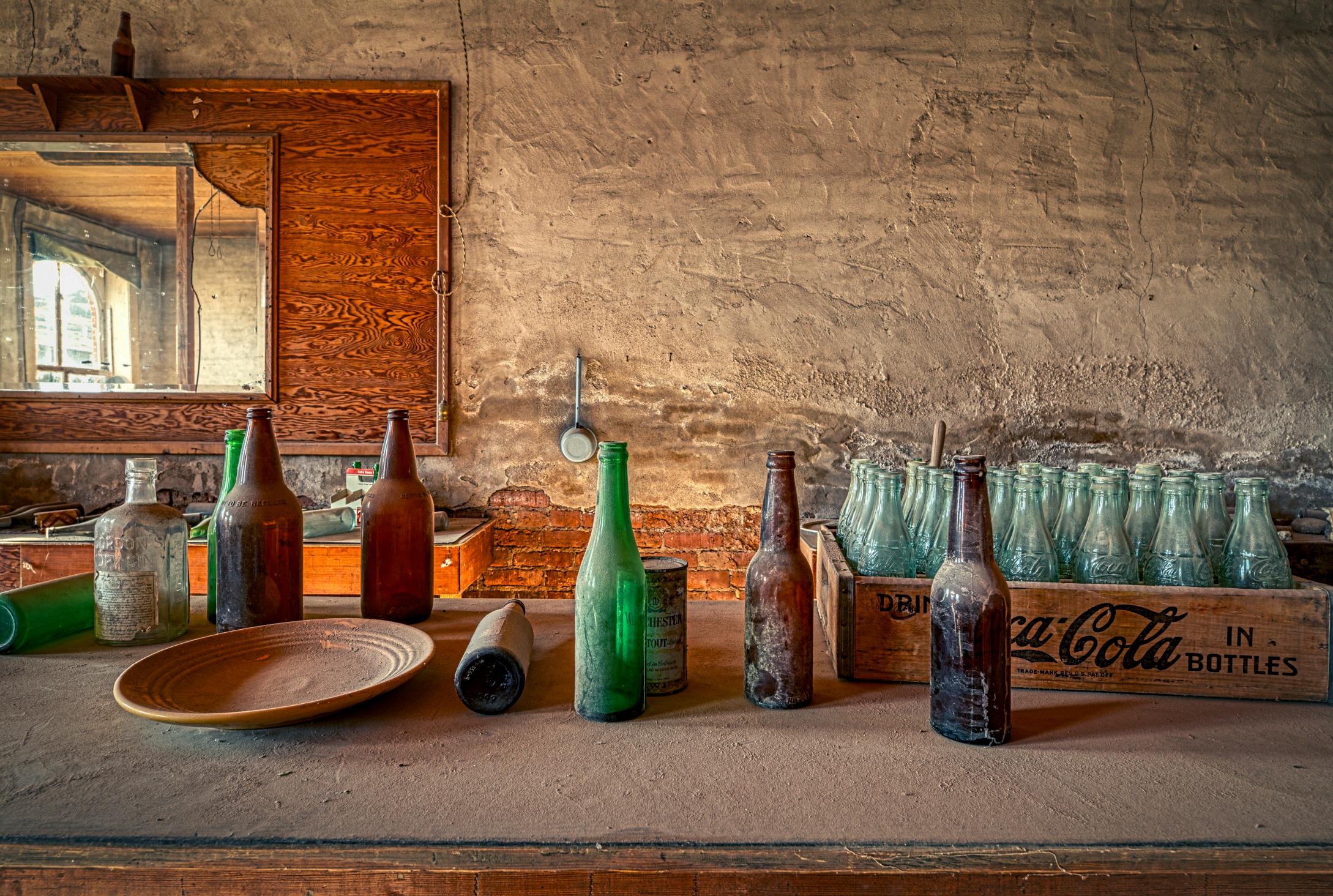
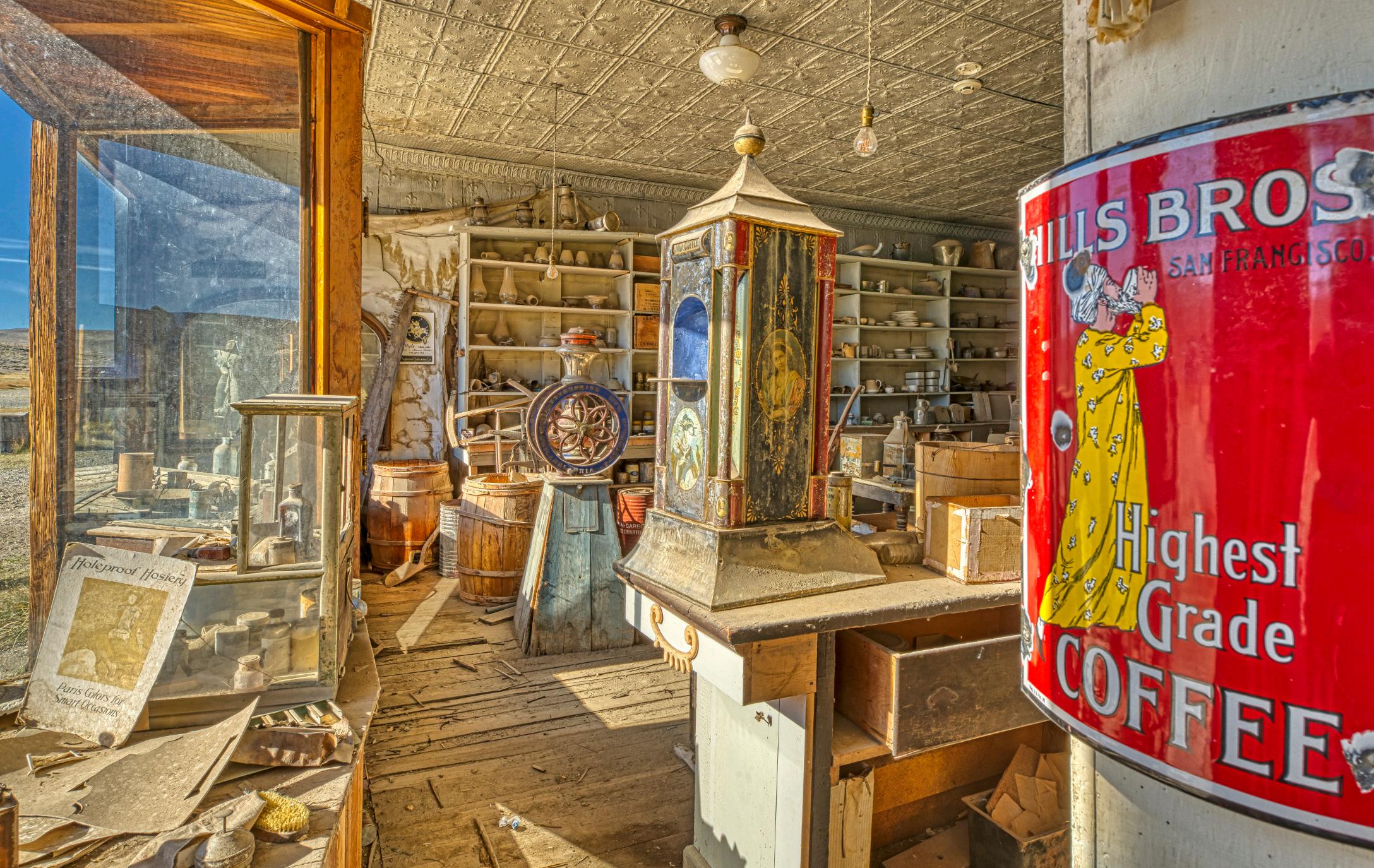
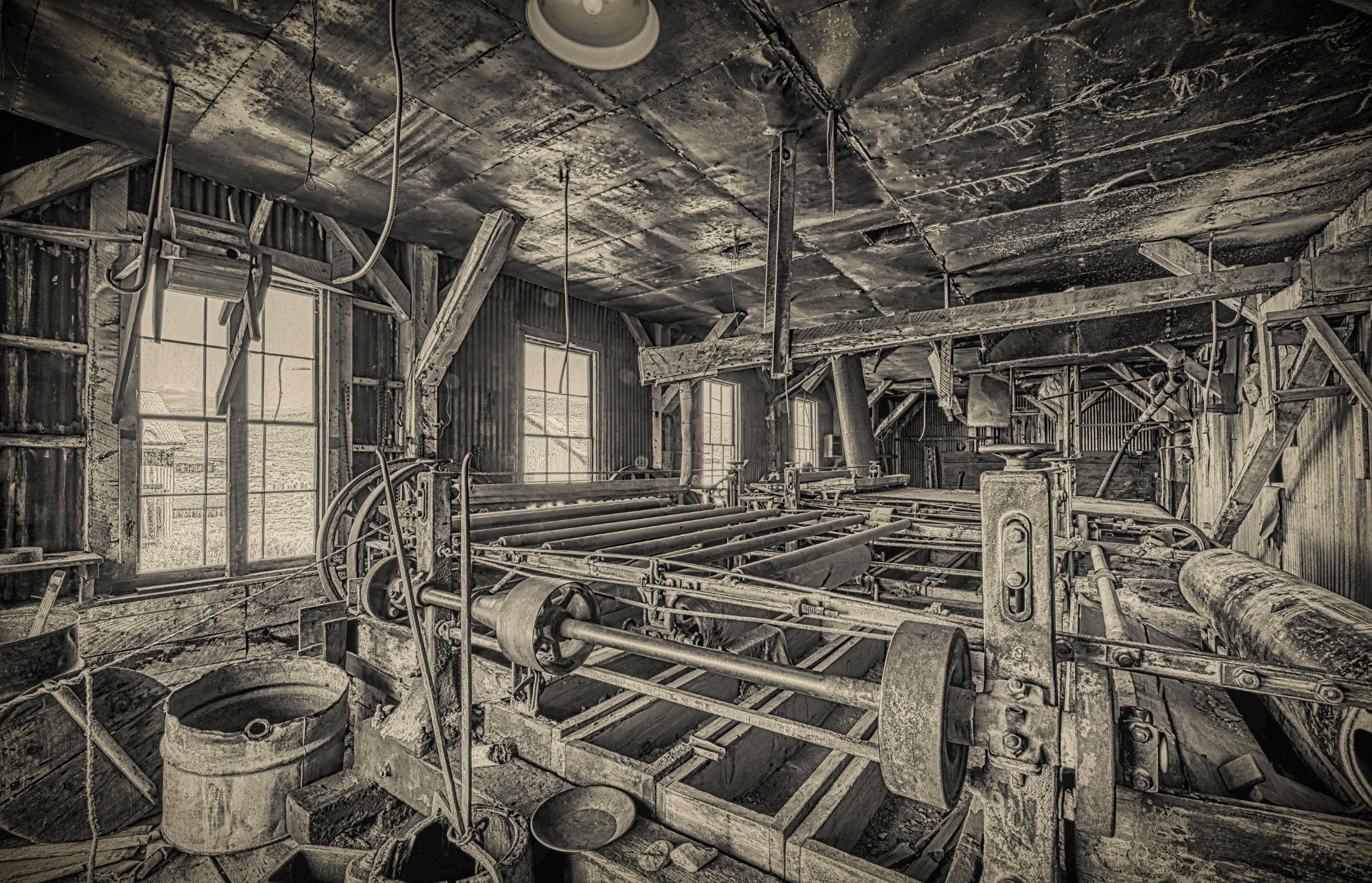
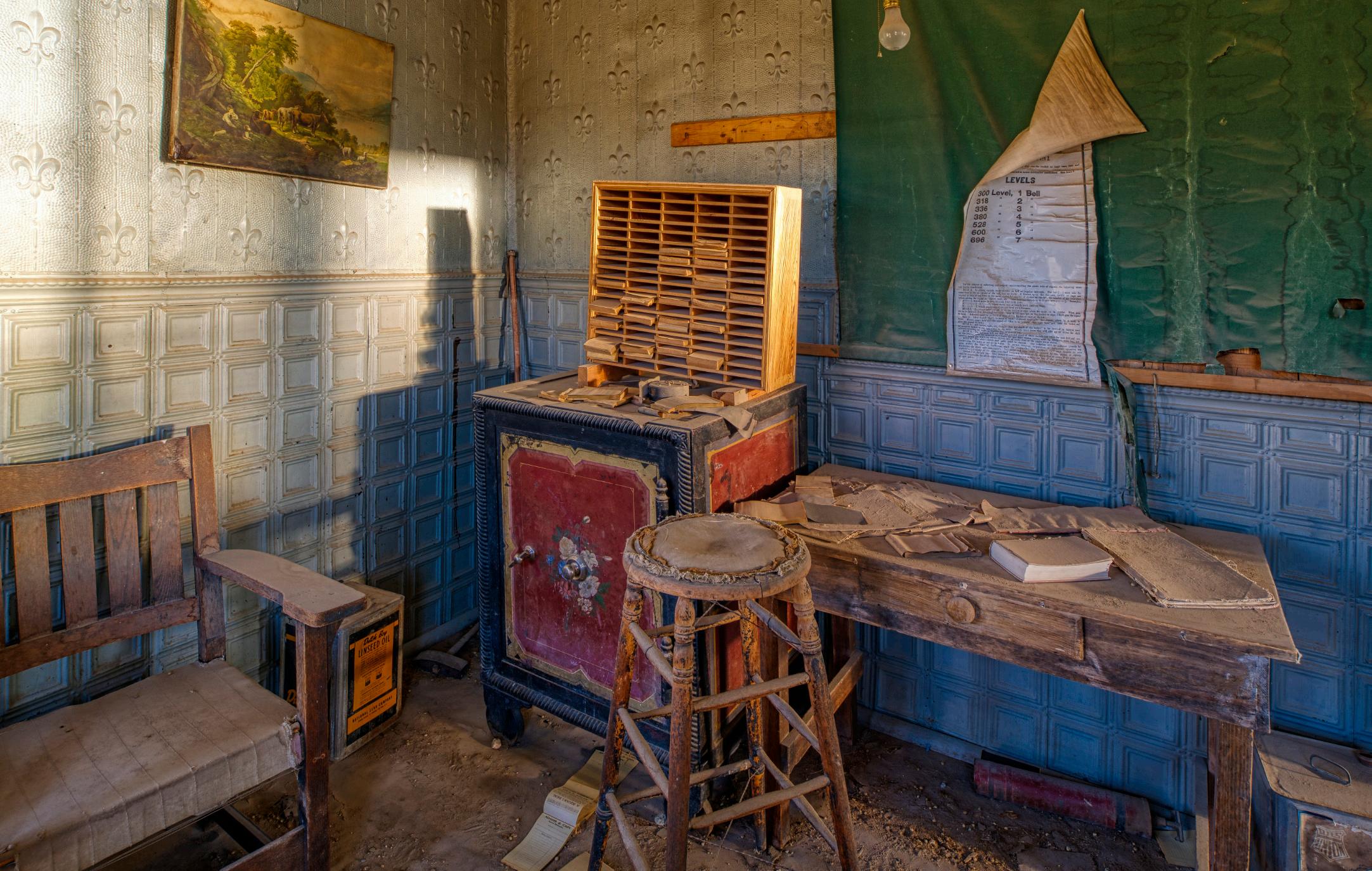

 Article
Article
I know. I hated the sound, too. I’m still not so crazy about it if I’m honest. I didn’t think I’d ever want to fly a drone. My husband bought this one with the holiday check that my mom sends. Apparently, he knew better than I did.
The aircraft is a DJI Mavic 3. It’s easy to fly out of the box, with features like GPS-enabled return-to-home and obstacle sensing. It sports a Hasselblad 20MP 4/3 CMOS camera with 12+ stops of dynamic range and a 24mm equivalent focal length. There’s also a camera with 162mm equivalent focal length which I rarely use because of its lower resolution, though it can be useful for scouting.
I was thrilled to find that I felt comfortable flying the first time. We were camping at Gold Butte National Monument. The dramatic change in perspective (the “tall tripod”) blew me away. At that point I was hooked. I certainly had a lot to learn. I still do, but looking at it brings back the thrill.
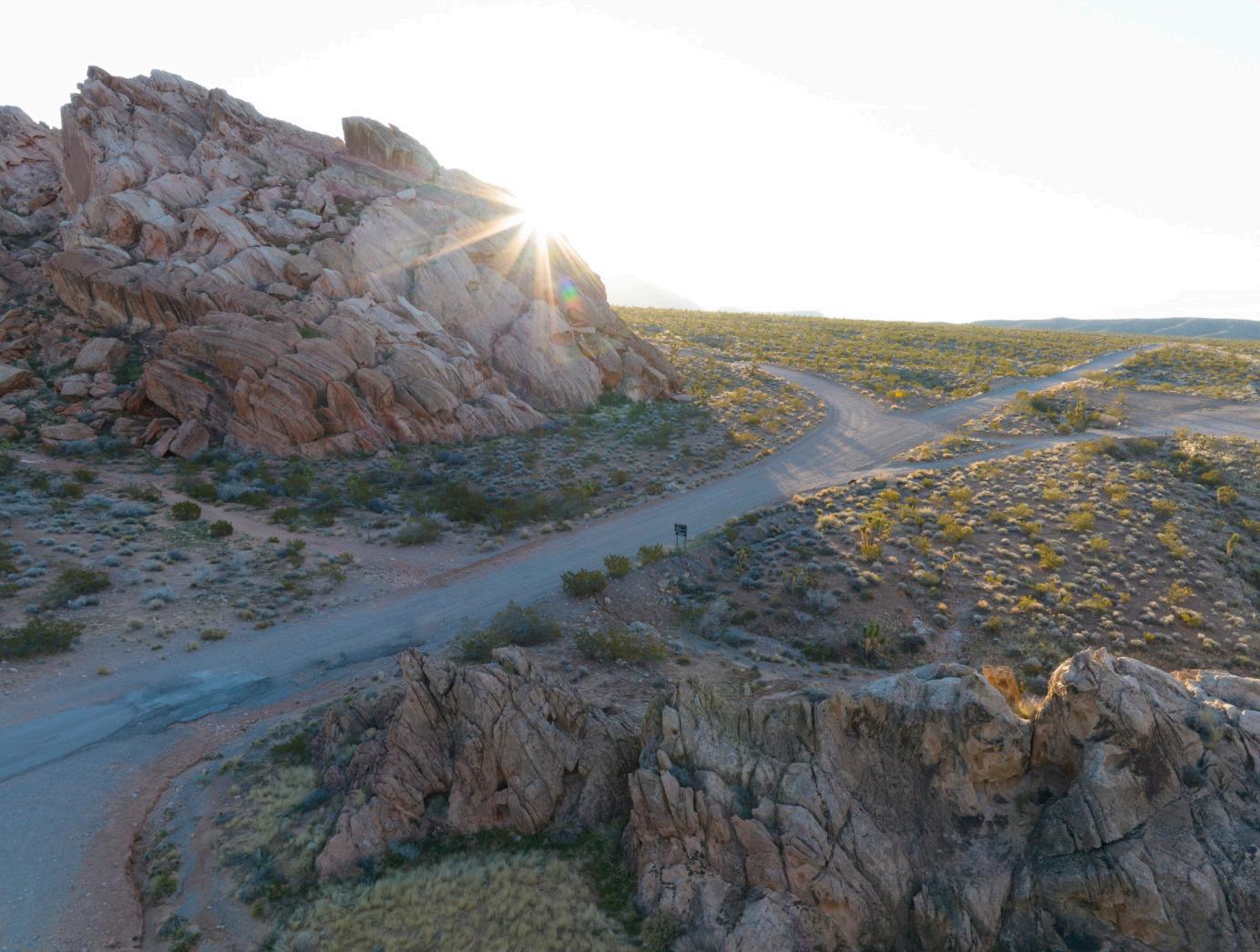
It might be tempting to buy and fly, but there are important things to learn. Many of them involve safety and government regulations. There are two ways to qualify with the FAA to fly a small (less than 55 pound) unmanned aircraft. Recreational flying, under USC section 44809 will cover you if you’re just flying for fun. There’s a simple exam called “trust,” which will set you up with the basics of rules and regulations.
Commercial flight is covered by Part 107 (of Title 14, Code of Federal Regulations) and is required not only for paid work, but also work for barter or donated to or nonprofits, anything that’s not just for fun. There is a loophole; you can get paid for drone work without having your part 107 if your original intent was recreational. For example, you stumble on an important event while flying for fun and sell it to a local news station. However, that’s not going to work more than once or twice.
I work for Arizona Highways Magazine whenever they’ll have me, and I do some work for nonprofits, so I did the Part 107 certification. Even if you’ll only fly recreationally, more knowledge is almost always a good thing. Taking the test is worth the trouble.
The Part 107 exam is taken in a proctored location, and certification also requires a background check. If you’re not already a pilot of a manned aircraft, you’ll likely benefit from a
prep course to learn things like reading sectional charts, understanding airspace, and decoding aeronautical weather reports and forecasts. I was glad to have chosen Pilot Institute’s (https://pilotinstitute.com) preparation course, but there are several other courses also available.
In addition to certification of pilots, registration is required for most unmanned aircraft, and there’s a separate registration for drones belonging to recreational vs commercial pilots. The rules here are simple; any drone weighing more than 250 grams (just over half a pound) must be registered with the FAA under 44809 (one registration for each pilot, regardless of the number of aircraft) and a separate registration for each small, unmanned aircraft regardless of weight for part 107.
As of mid-September, all drones are required to broadcast “remote ID,” which lets law
enforcement (and unfortunately the public through a phone app) know who is flying the drone and from where. Aircraft purchased after approximately September 2022 come with this capability, and older ones need to be retrofit. Due to an outpouring of concerns, the FAA says that the deadline has not been changed, but they will not take enforcement action until March 16, 2024.
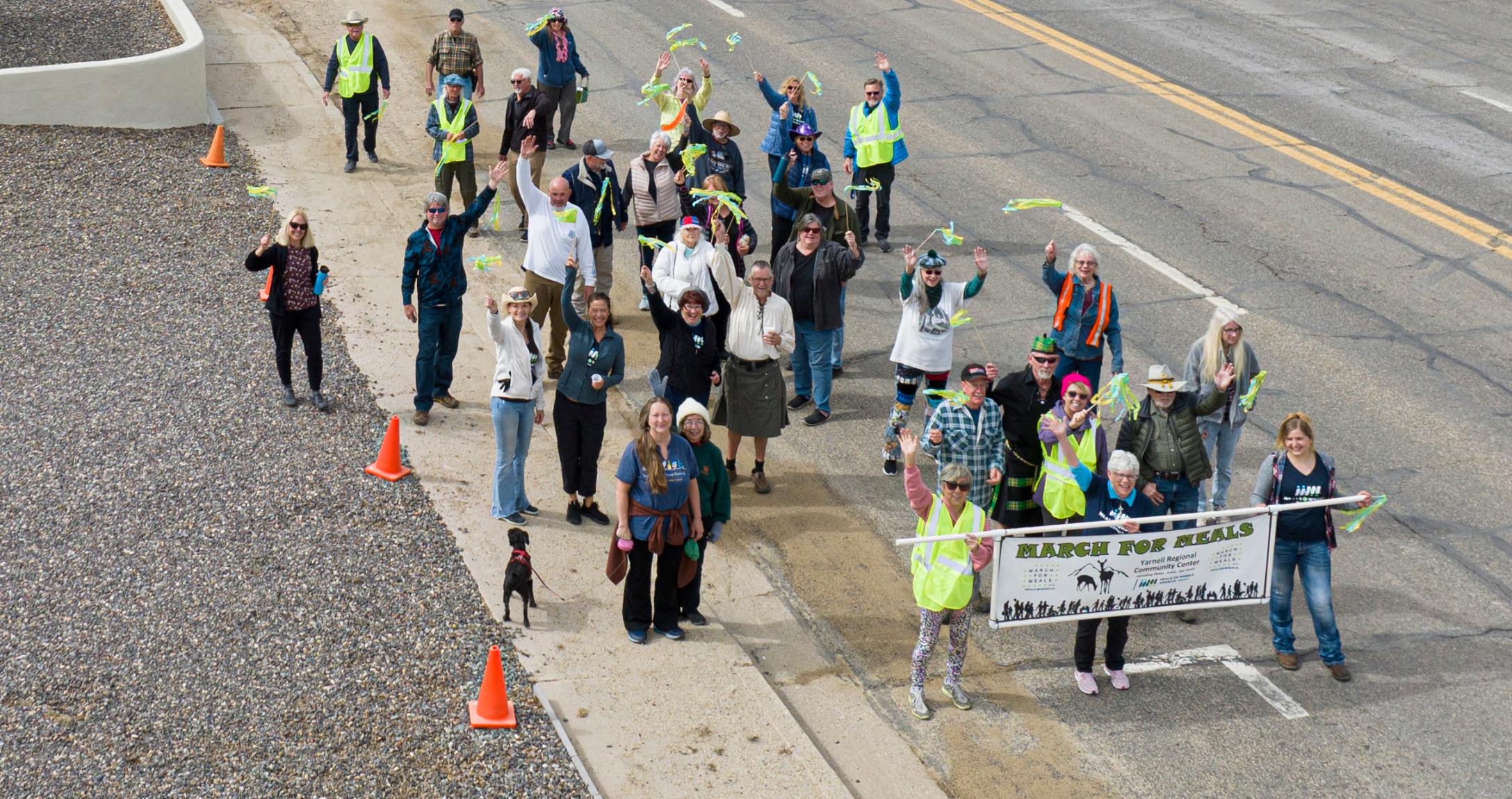
There are, as you might imagine, quite a few regulations regarding flight. Here are the highlights.
• The altitude limit is 400 ft above ground level (not above the pilot).
• The pilot or visual observer must be able to see the aircraft throughout the flight.
• Night flights are allowed under part 107 with proper anti-collision lights.
• There are places one can’t fly (National
Parks and wilderness areas, for example), and places where permission is required (like within an airport’s airspace).
• Pilots are also responsible to be aware of Temporary Flight Restrictions (TFRs) –no-fly zones for things like the Super Bowl and Presidential travel.
• Flying directly over people and moving vehicles is complicated in a regulatory sense. The bottom line is usually to simply not do it.
Here’s another loophole: in most National Parks and wilderness areas, it’s legal to take off outside the boundaries and fly in. I was advised to do just that by a ranger in one of the Mojave Desert federal properties.
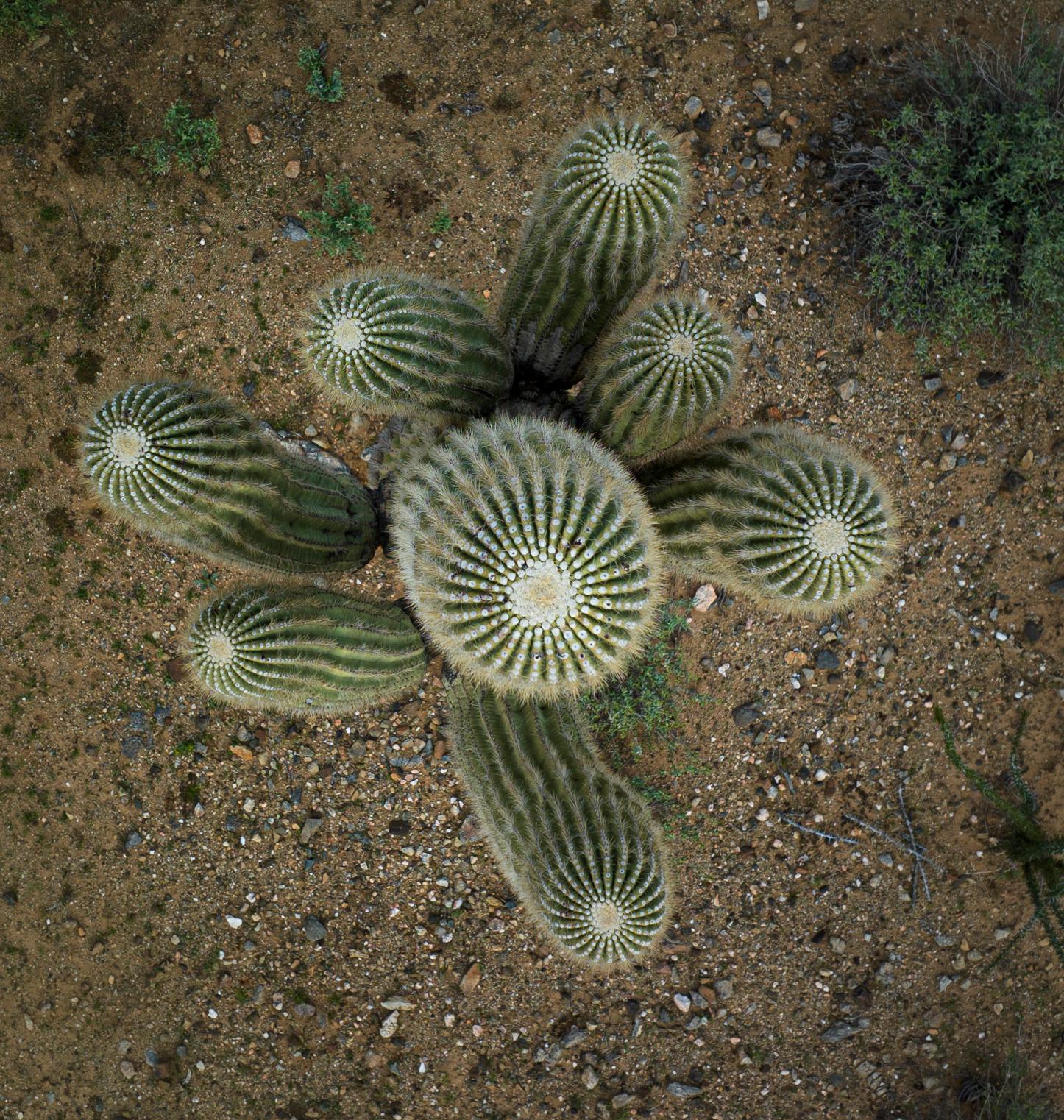
However, just because you can doesn’t mean you should. These restrictions exist for good reasons, and we should not be weenies. Incidentally, Grand Canyon National Park is not included in this loophole. They have a different kind of restricted airspace.
Then there’s etiquette. For example, don’t fly near enough to others to be annoying, and don’t even give the appearance of spying on people. If folks ask you not to do something; comply if possible.
This video is a good place to start if you’re interested in more information:
https://www.youtube.com/watch?v=0_ YZKTEkBwE
There is an inordinate amount of anger out there about drones. People sometimes feel that the aircraft threaten their privacy. We also hear the phrase “drone attack” on the news, leaving a less than positive feeling, even for the non-violent buzzers it can be helpful to know something about the neighborhood you’re flying in. There are more than a few cases of unmanned aircraft being shot down by the angry, and it’s a small consolation that that shooter, who is very unlikely to be caught, has committed a federal offense.
I have a dorky dayglow yellow vest from Amazon. On the back is printed “FAA Licensed drone pilot; do not disturb.” It
gives me credibility, makes folks less likely to distract me with conversation while I’m flying, and makes me look like I’m supposed to be there. Recently, while photographing a sunflower field, a TV news drone pilot saw my vest and let me know he would be flying a drone nearby. We were able to avoid each other. Communication makes this stuff safer for everyone.
I’ve pondered and learned quite a bit about the ingredients of a good drone image. The usual compositional principles apply, of course, but visualizing what you’ll see from
the higher perspective takes experience. Strong graphic content like rivers and other lines work well.
Man-made structures in a mostly natural setting can be striking, especially when shooting straight down. Shadows become especially compelling, as does color. All these things are helpful since creating image depth using prominent foregrounds is difficult from the air.
A common criticism is that drone images are shot from too high a vantage point. Like many questions of photography, I’d respond that “it depends.” Sometimes we just want to
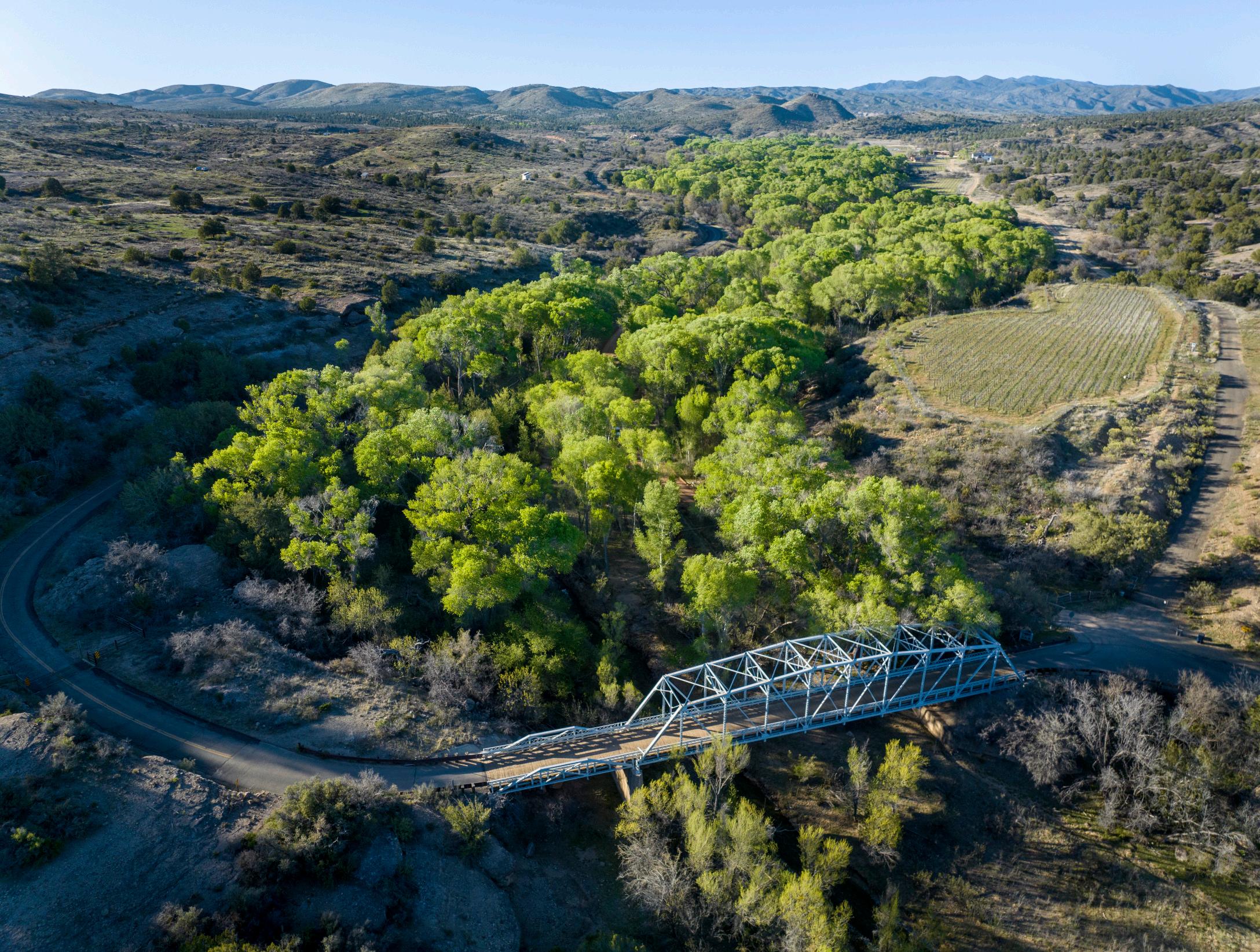
get separation between our subject and the horizon, for example. In these this we might need just a few feet of elevation, and the images might not look like it was taken from a drone.
For top-down compositions, though, I find that I often get close to that 400 foot above ground level limit before I like the image. For example, my shot of the Moki Dugway in Utah is made from right at that elevation. I would have flown higher if I could.

People sometimes make compelling subjects as well. Since my husband is an avid fly fisherman, I’m compiling an angler’s portfolio. I appreciate the unique perspective from the aircraft.
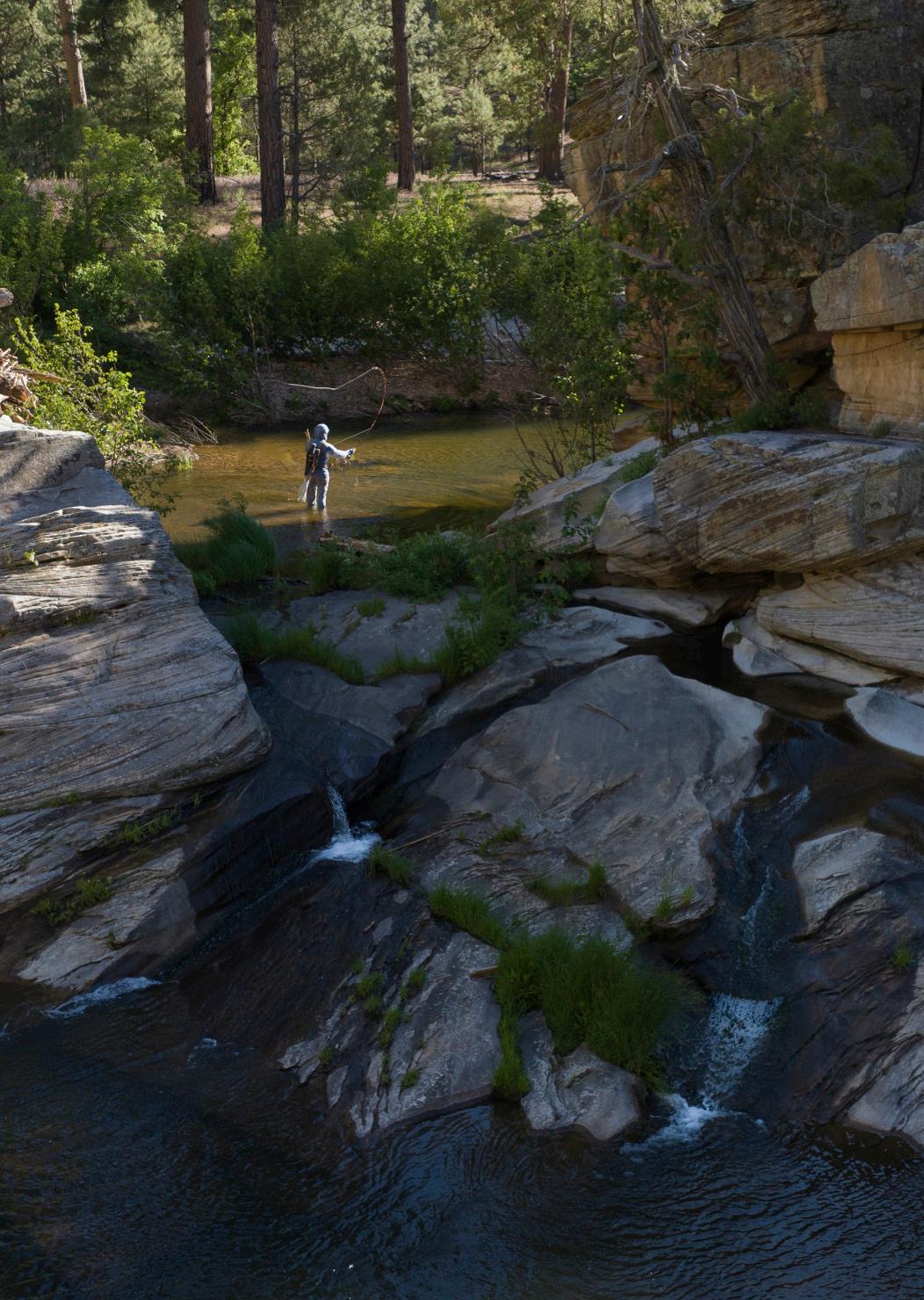
My next impatiently anticipated project is shooting fall color from the air. Wish me luck!
Super Moon-over our Columbia River bridges in late August. My wife Sharon has allergies to wheat and dust so I had to find a different location to shoot the moonrise. My photographer friend Scott said the moon would be rising right over the bridges so we met along the Columbia and enjoyed the show together.
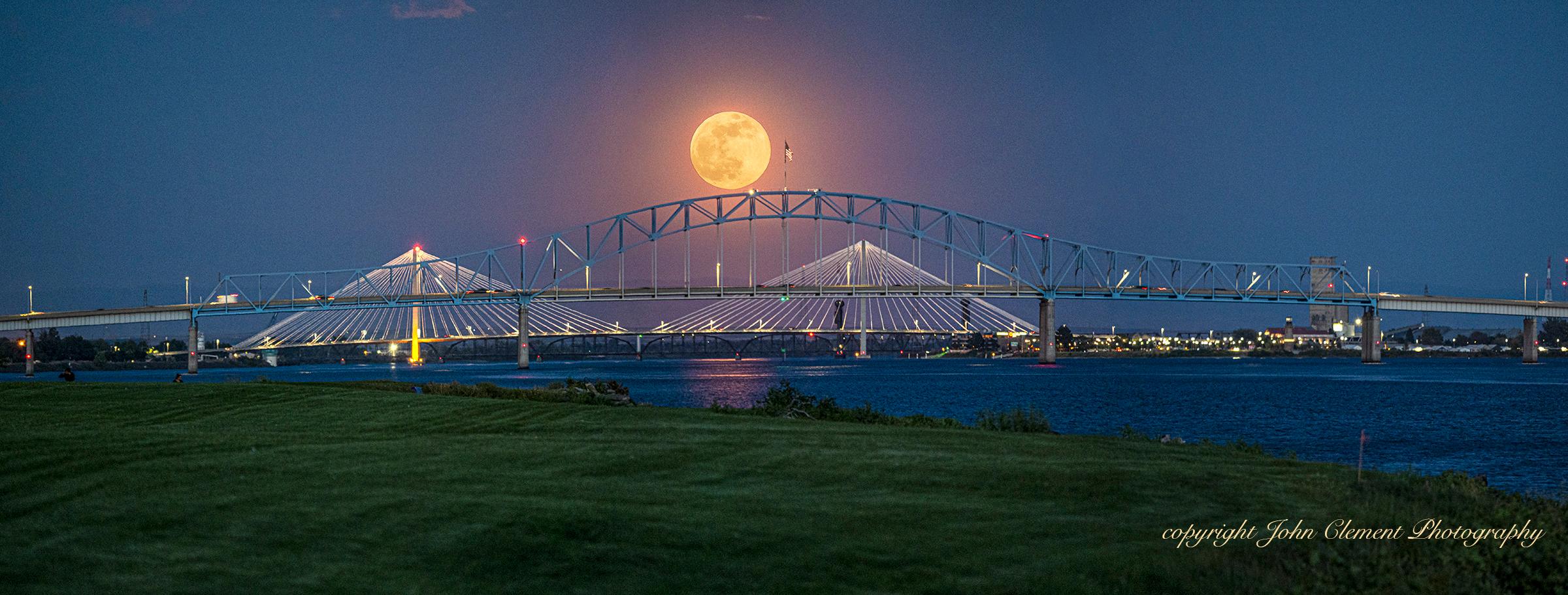
The eye of the Beast- smoke plume from a big wind driven wild fire in July that burned 9,000+ acres near my home. Burning at 30-40 mph the regional aerial bombers (8) did an amazing job of protecting homes and properties, non were lost!
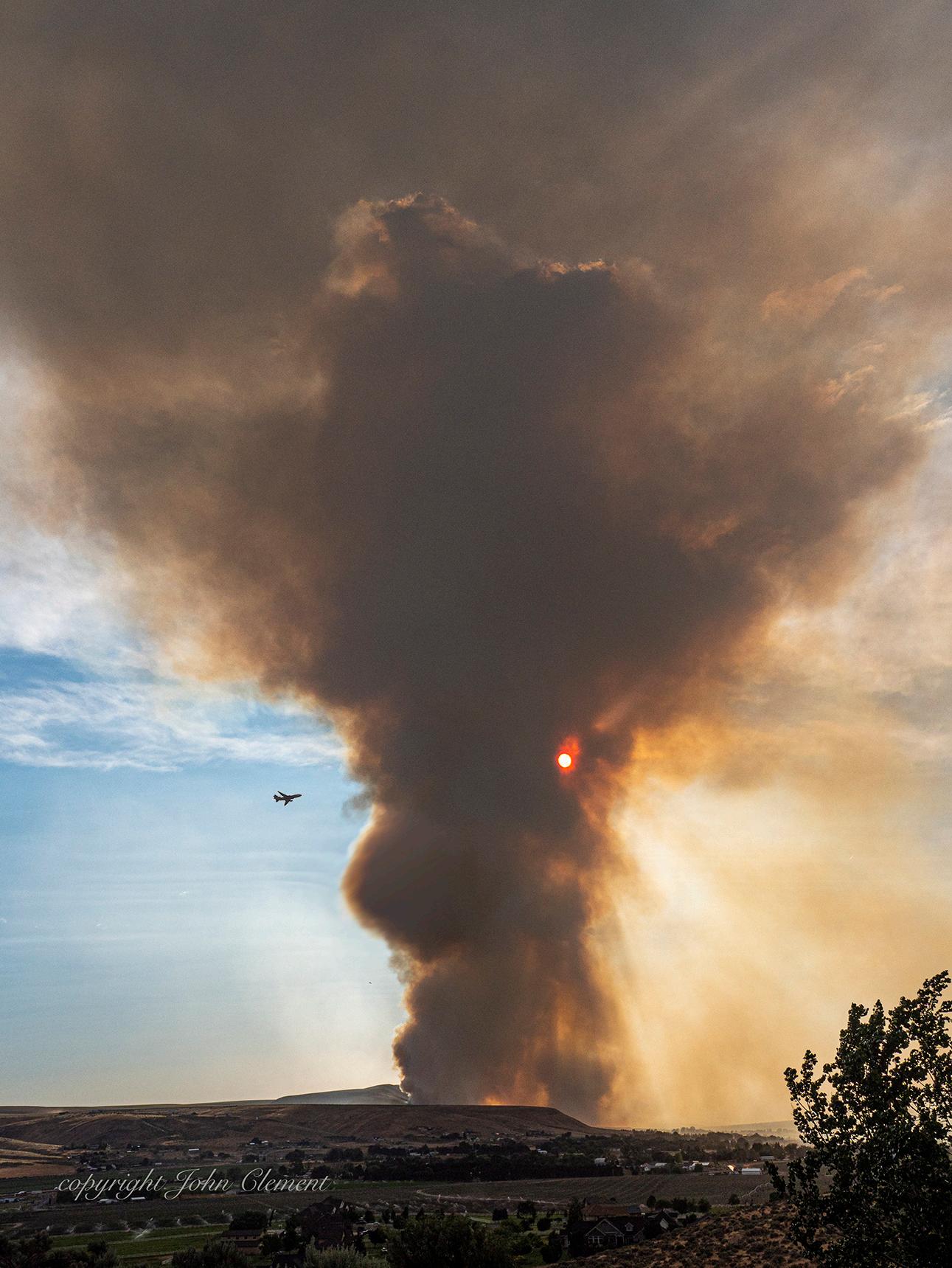
Lostine Cemetery-as backlit lenticular clouds add drama to the image.
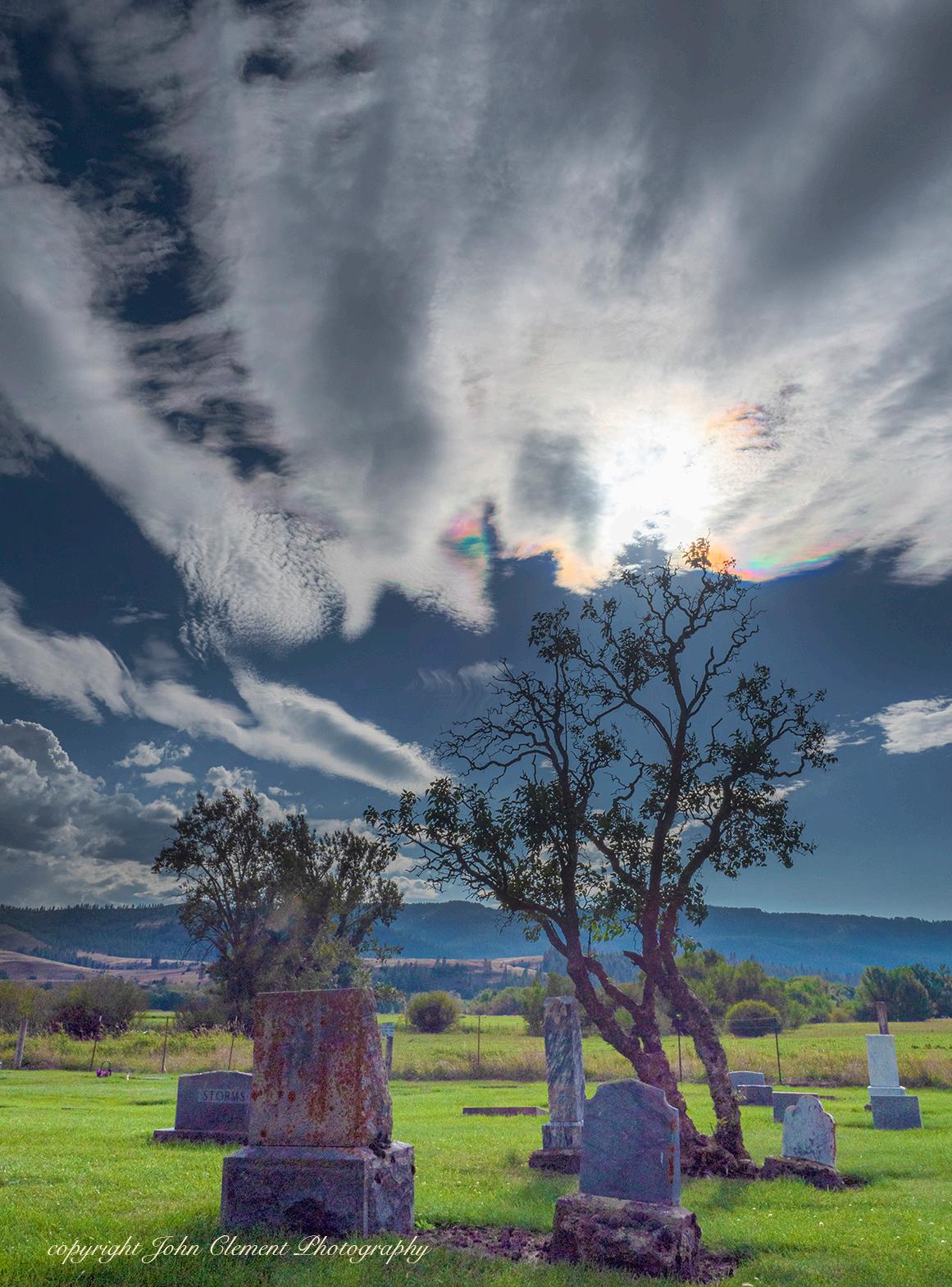
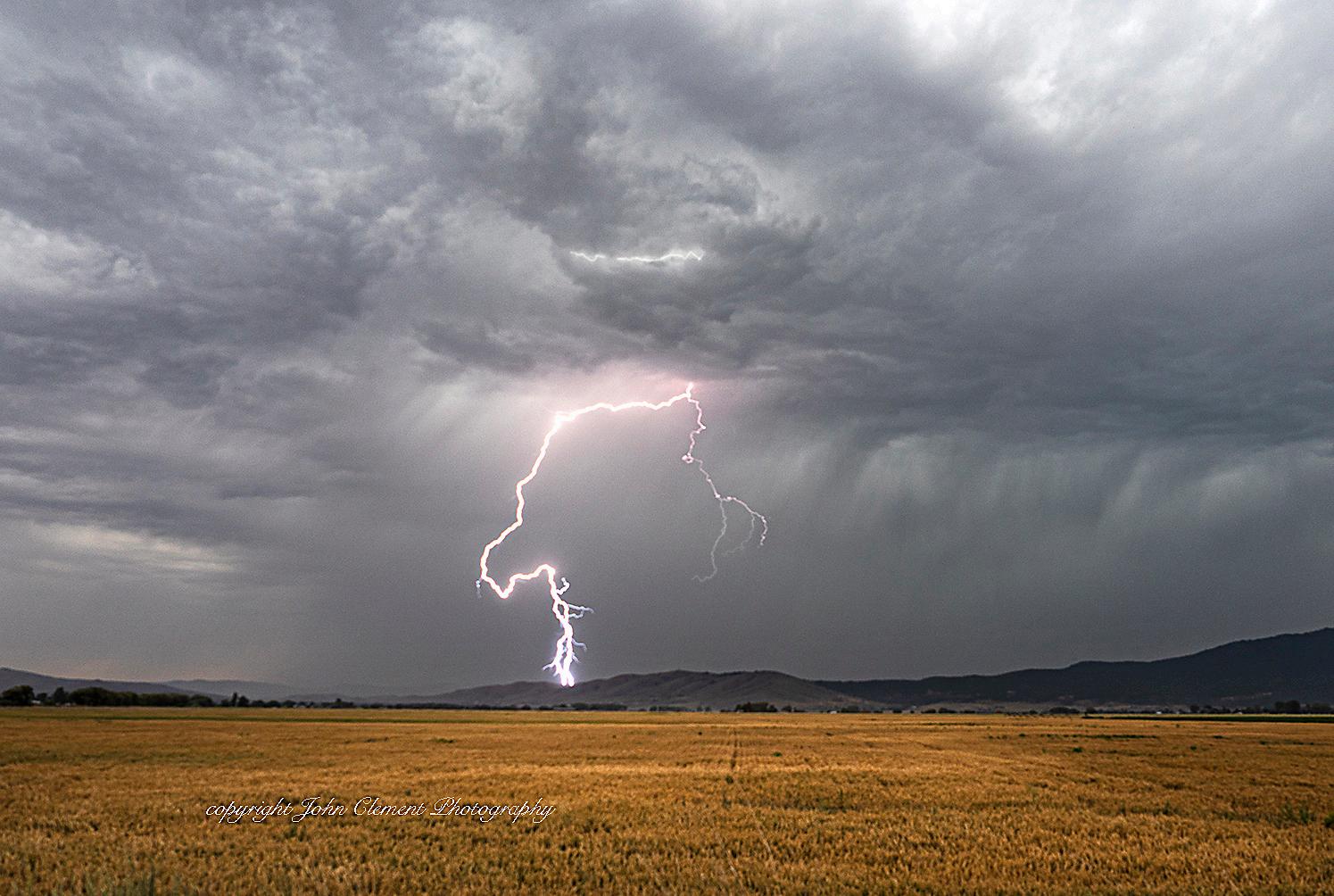
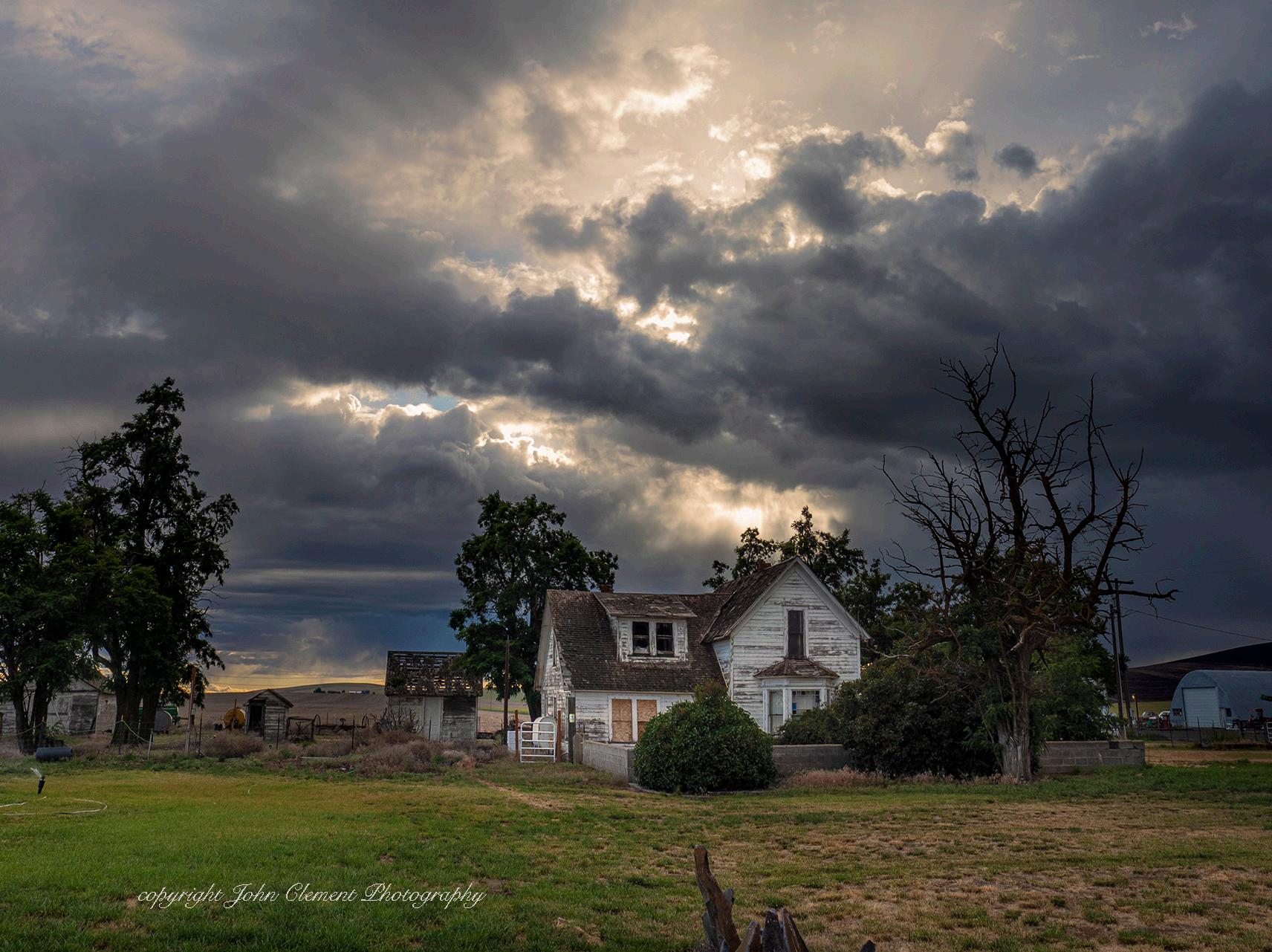
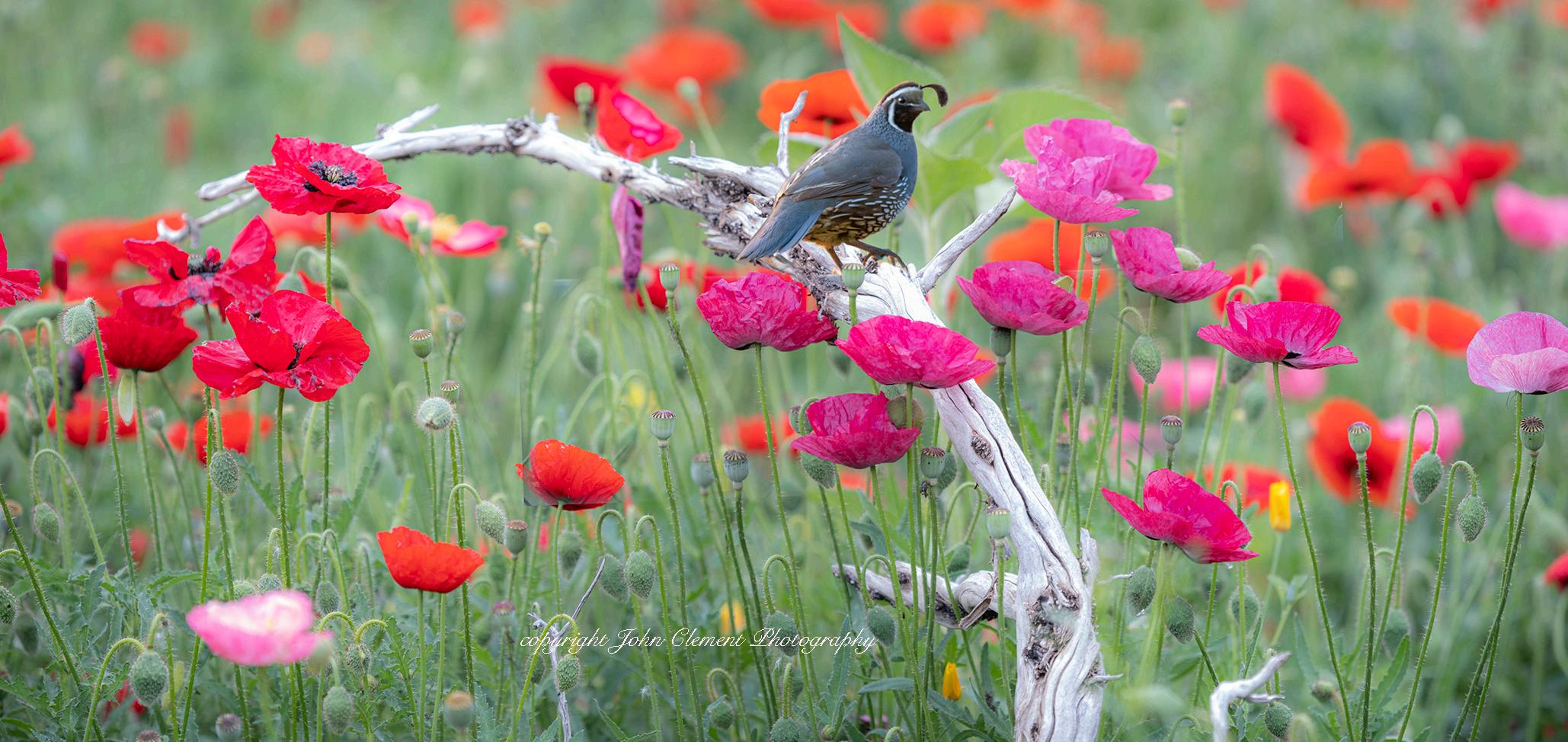
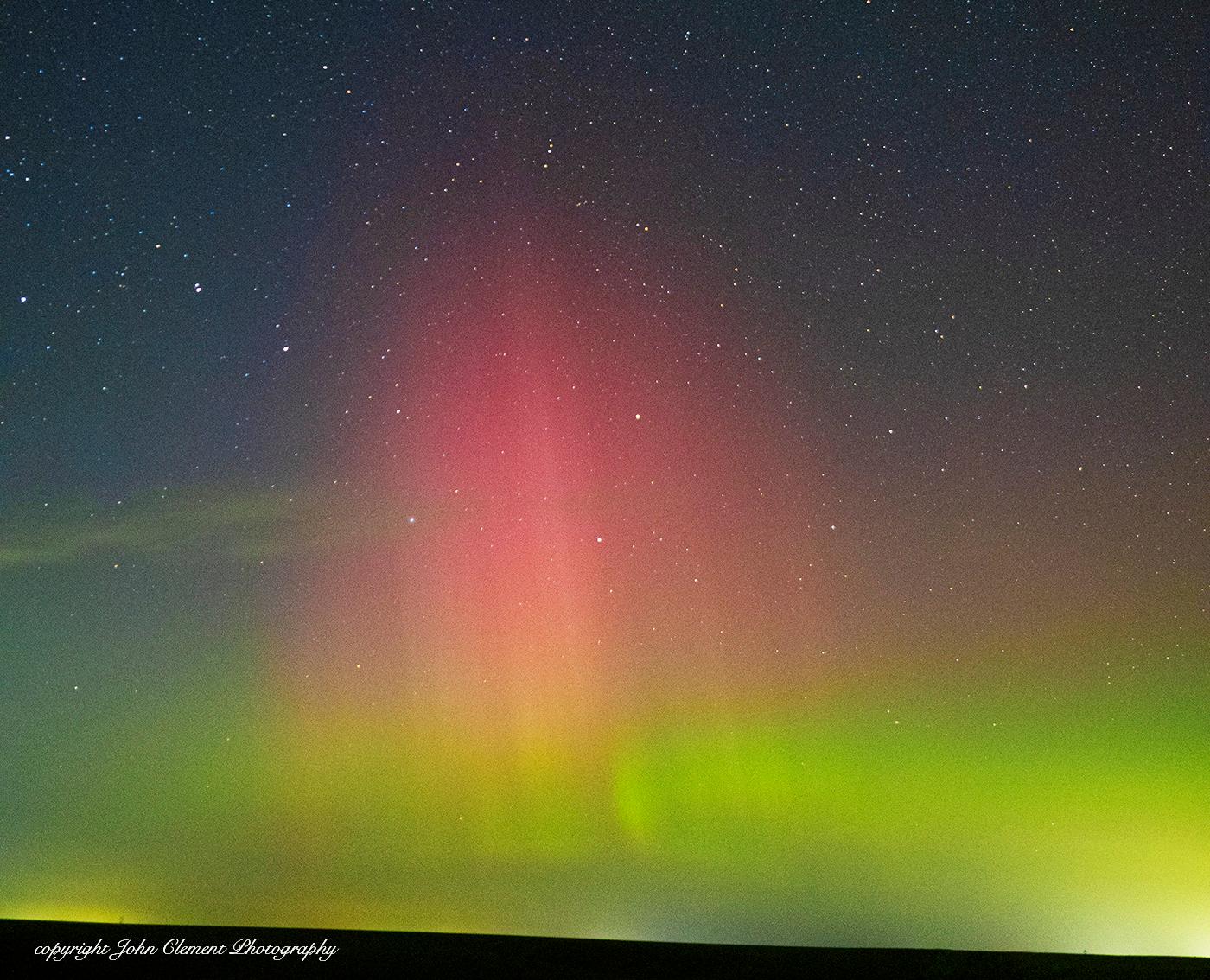
Poppies Aglow-in the morning sunlight in my wildflower garden.

Digger Bee: Important pollinator that is ground dwelling, they do not make honey. Docile bee with beautiful big green eyes, think golden retriever of bees.

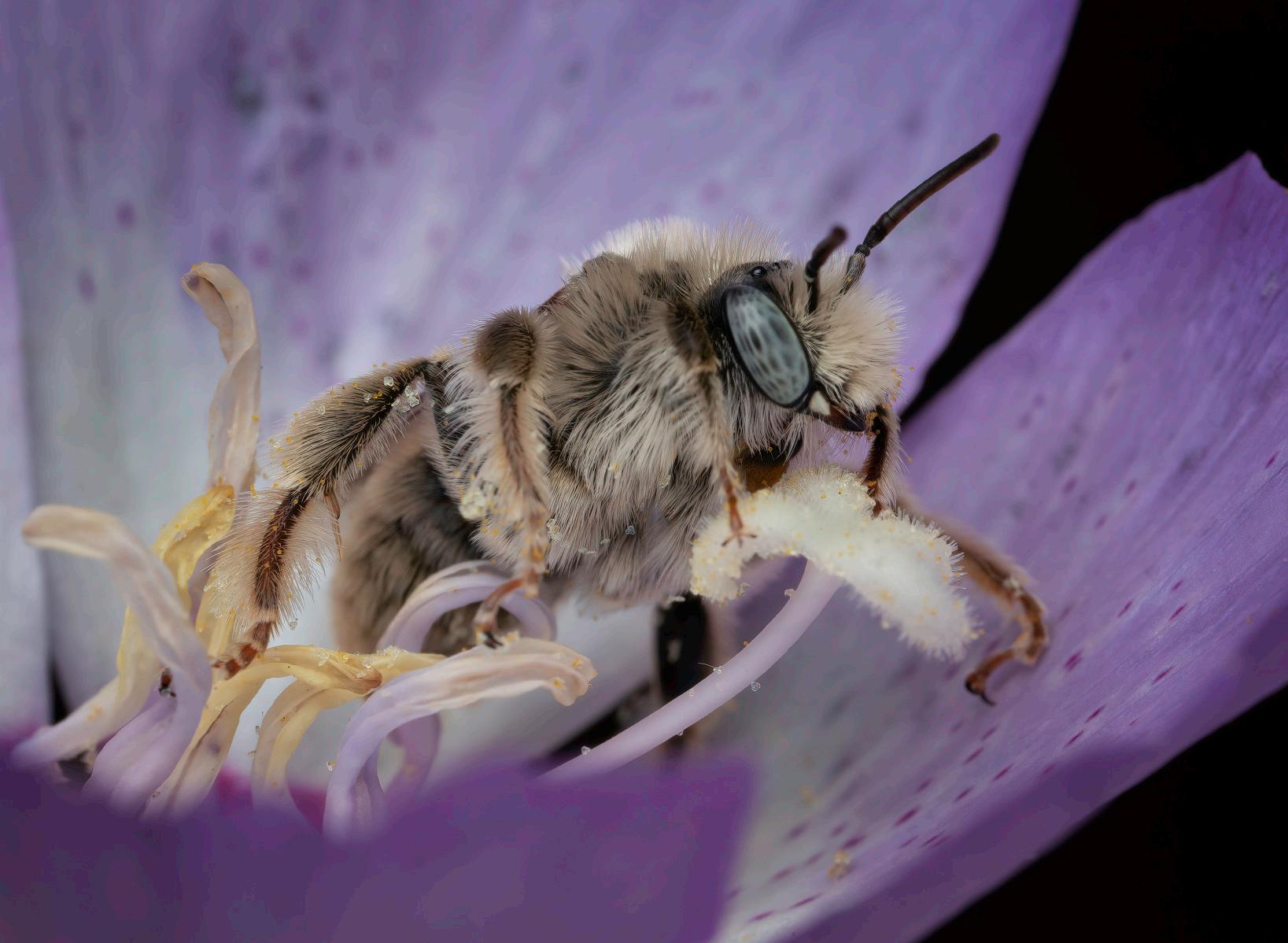
Honeybee fun facts: A honey bee flies about 20 mph. A honey bee worker only makes an average of 1/12 of a teaspoon in her lifetime. A pound of honey is made by 2 million flower visits. They also have 5 eyes.
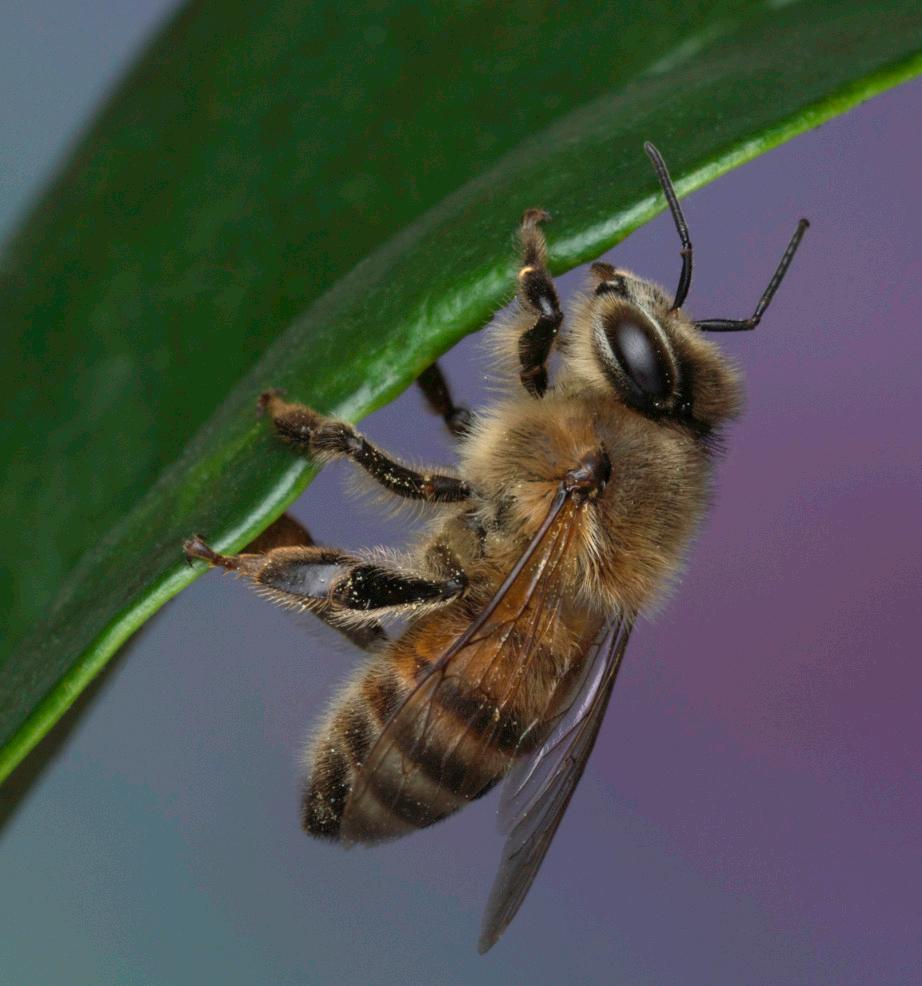
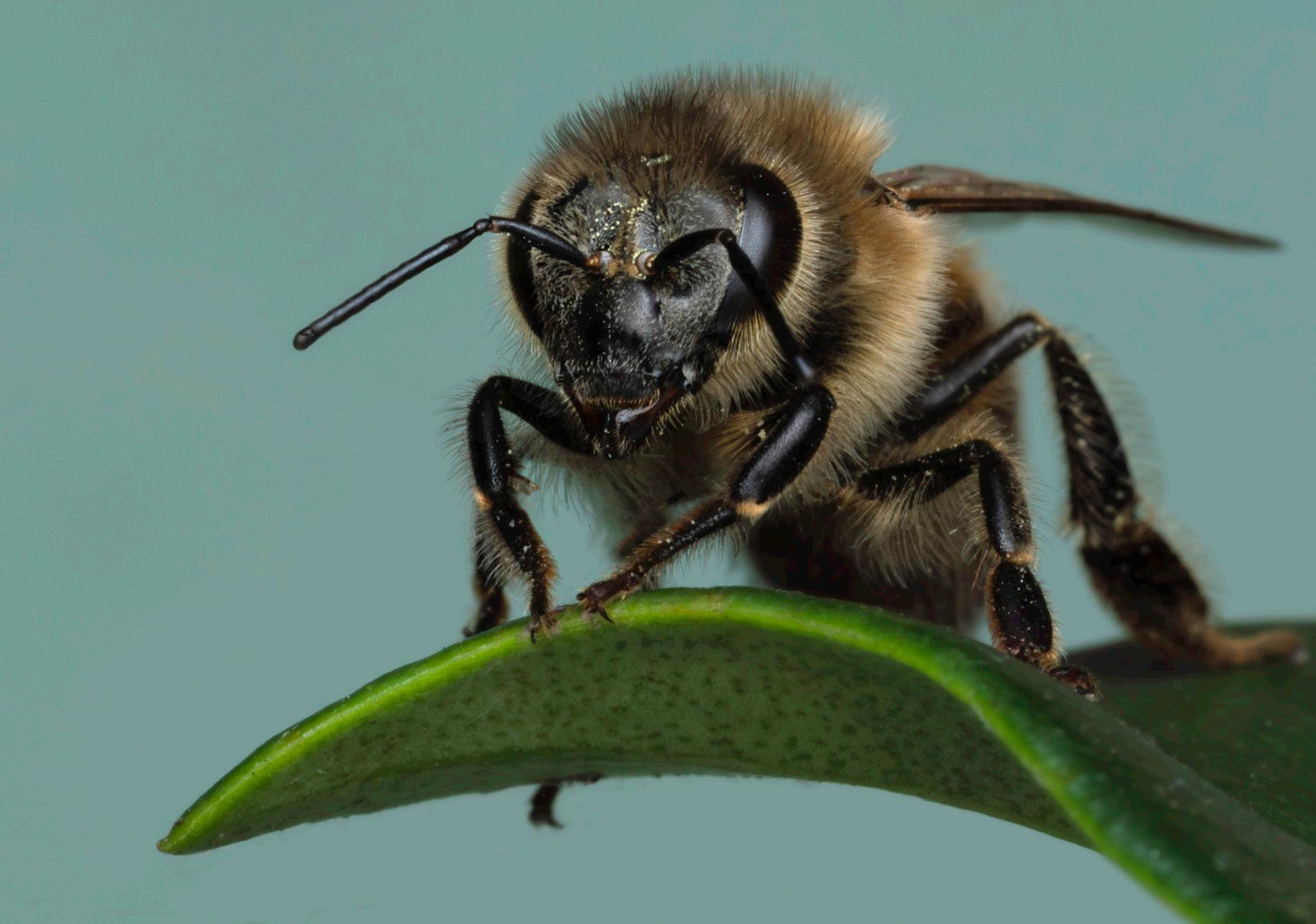
Mallophora, Robber fly: expert predatory habits feeding on other insects, they wait in ambush and catch their prey in flight. Gotta love a bug with a full beard and mustache.
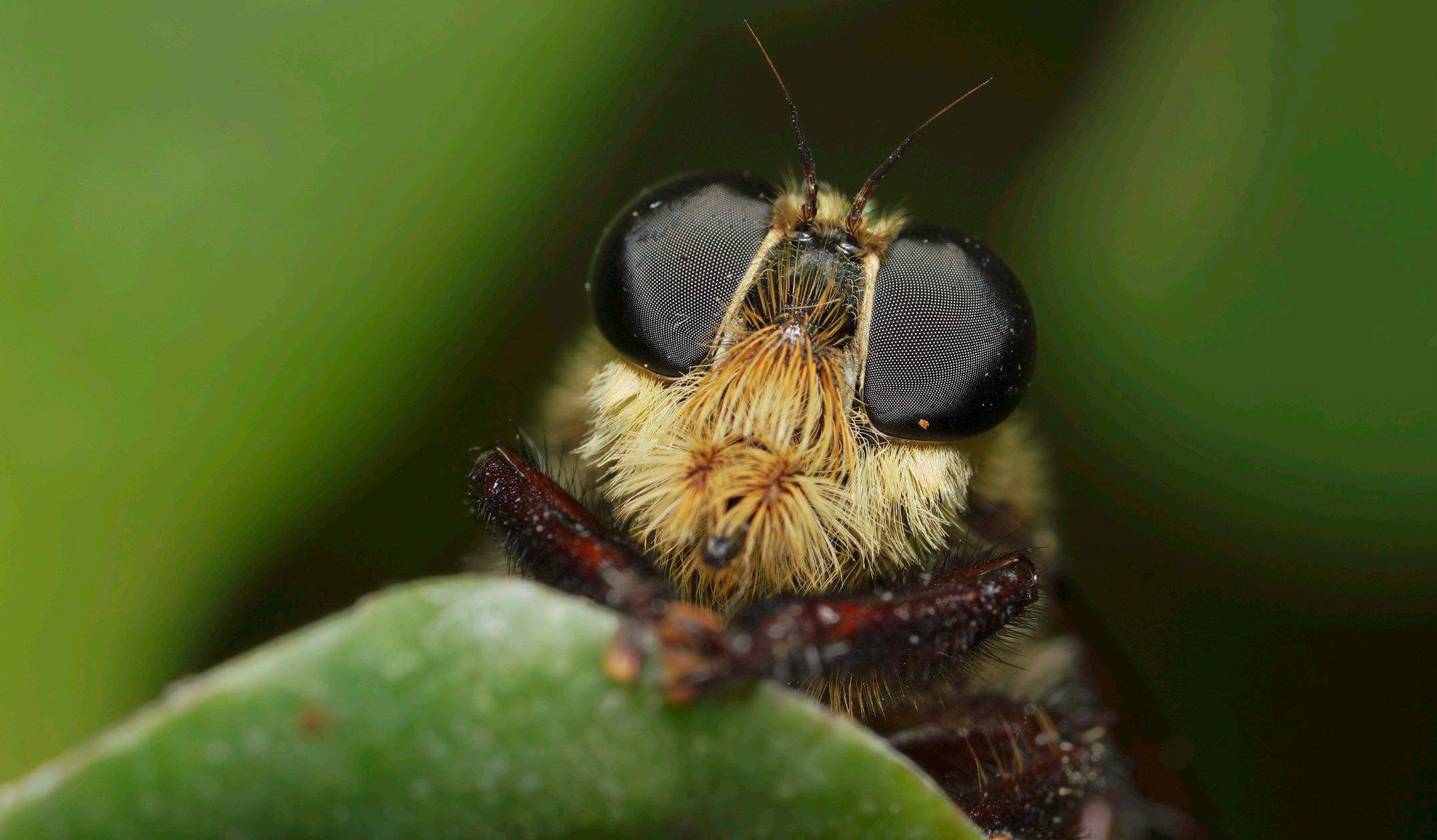
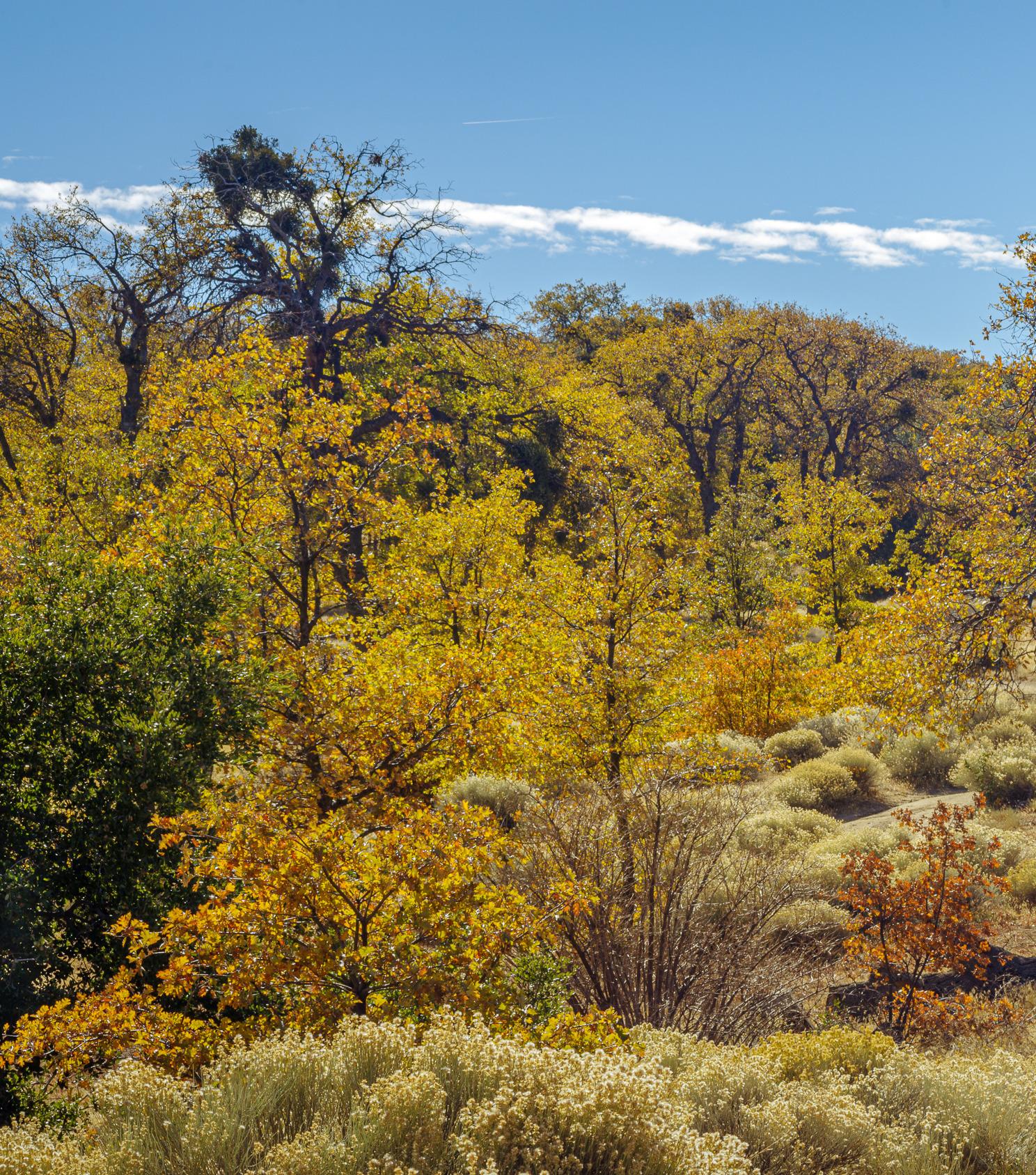
These photos feature the exceptional fall colors of black oaks along the Pacific Crest Trail near Liebre Mountain in the Angeles National Forest.
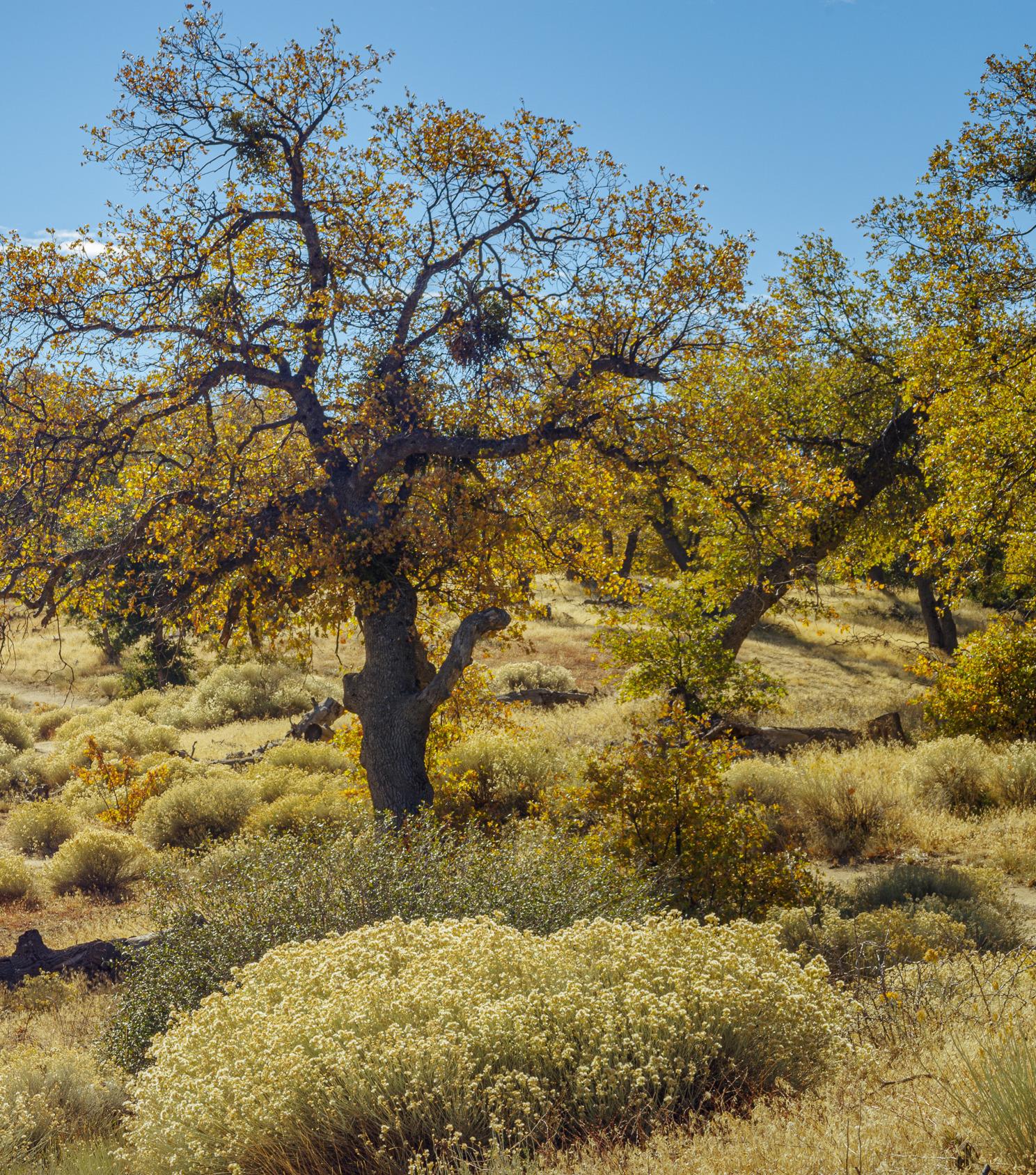

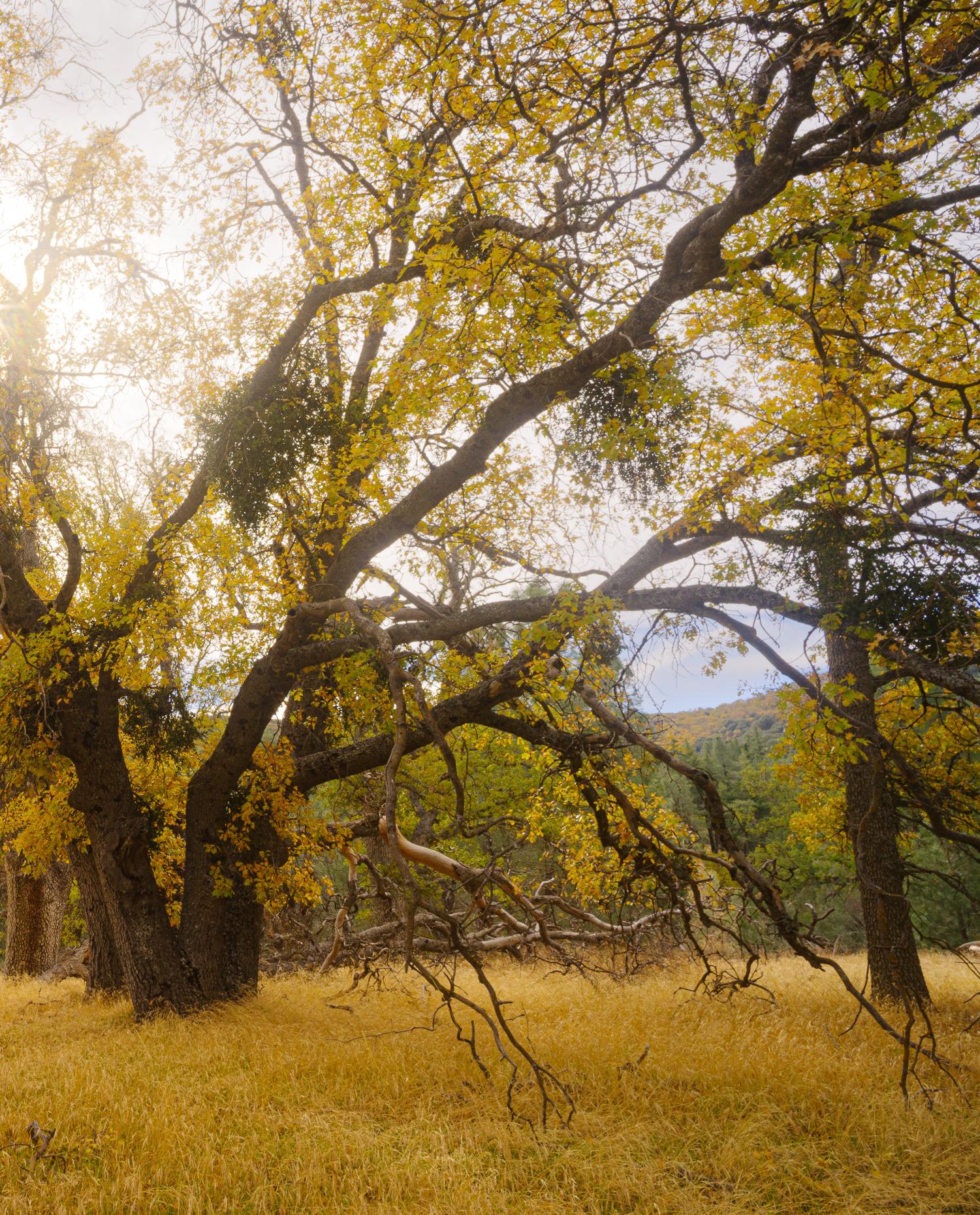
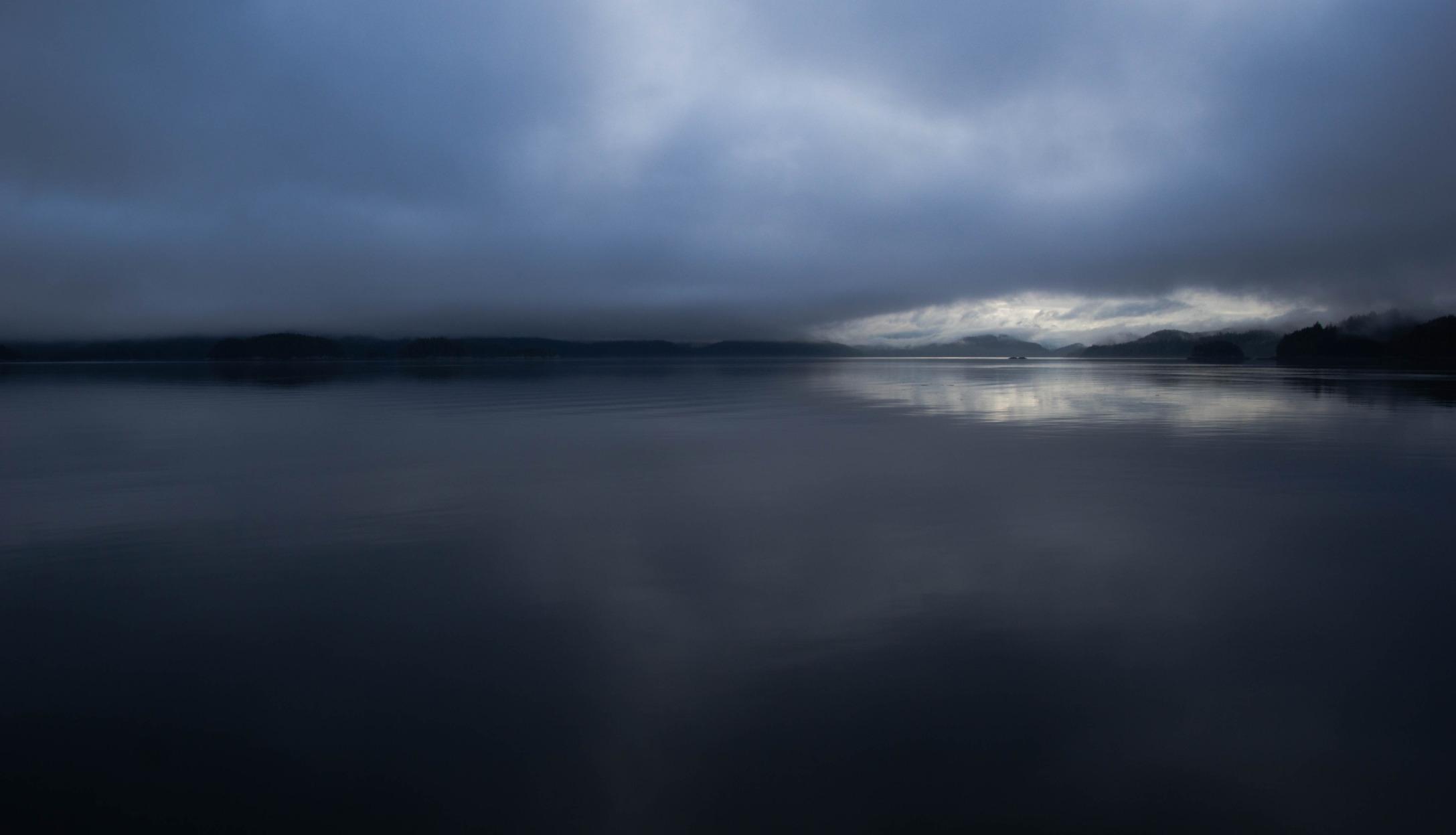
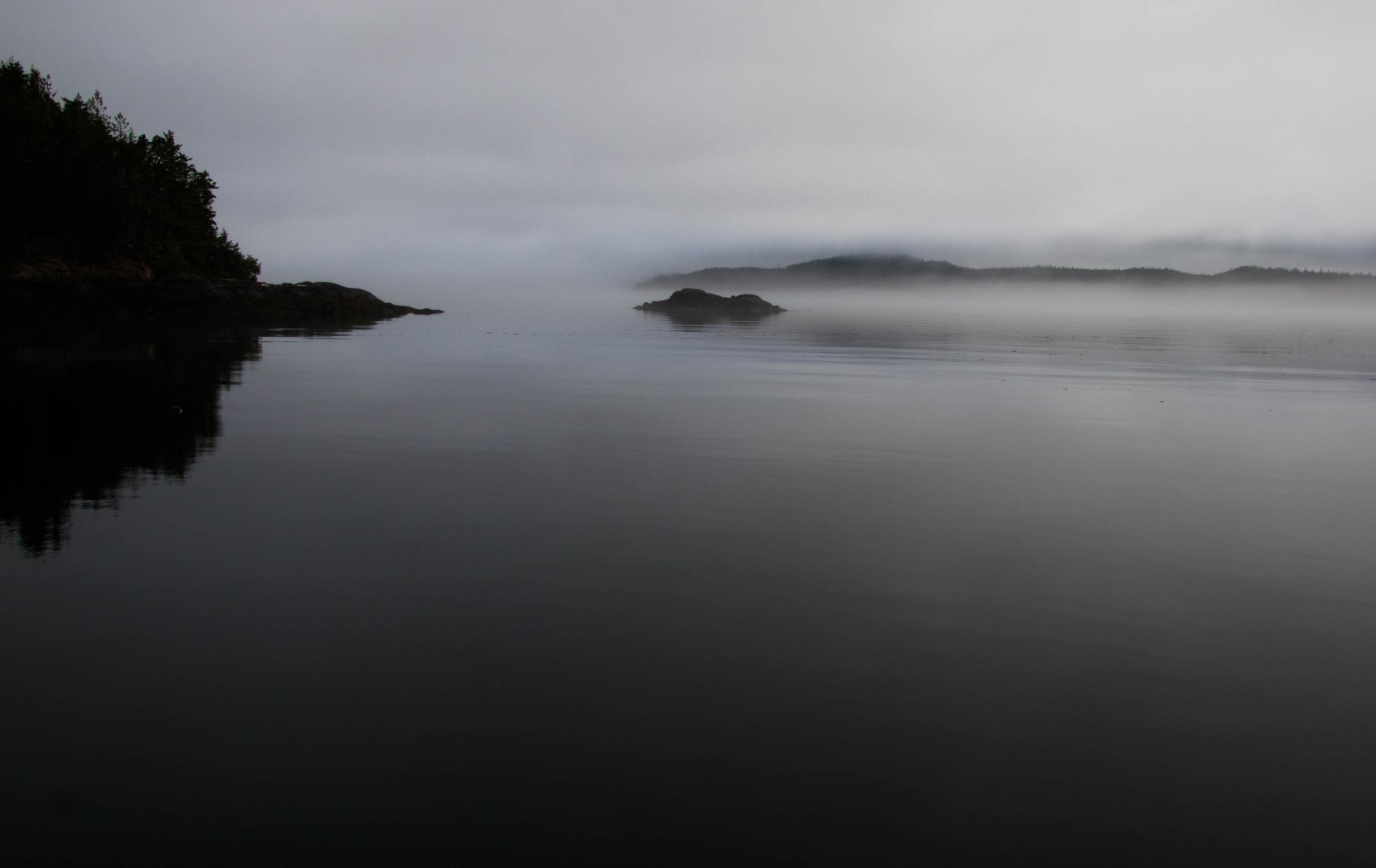
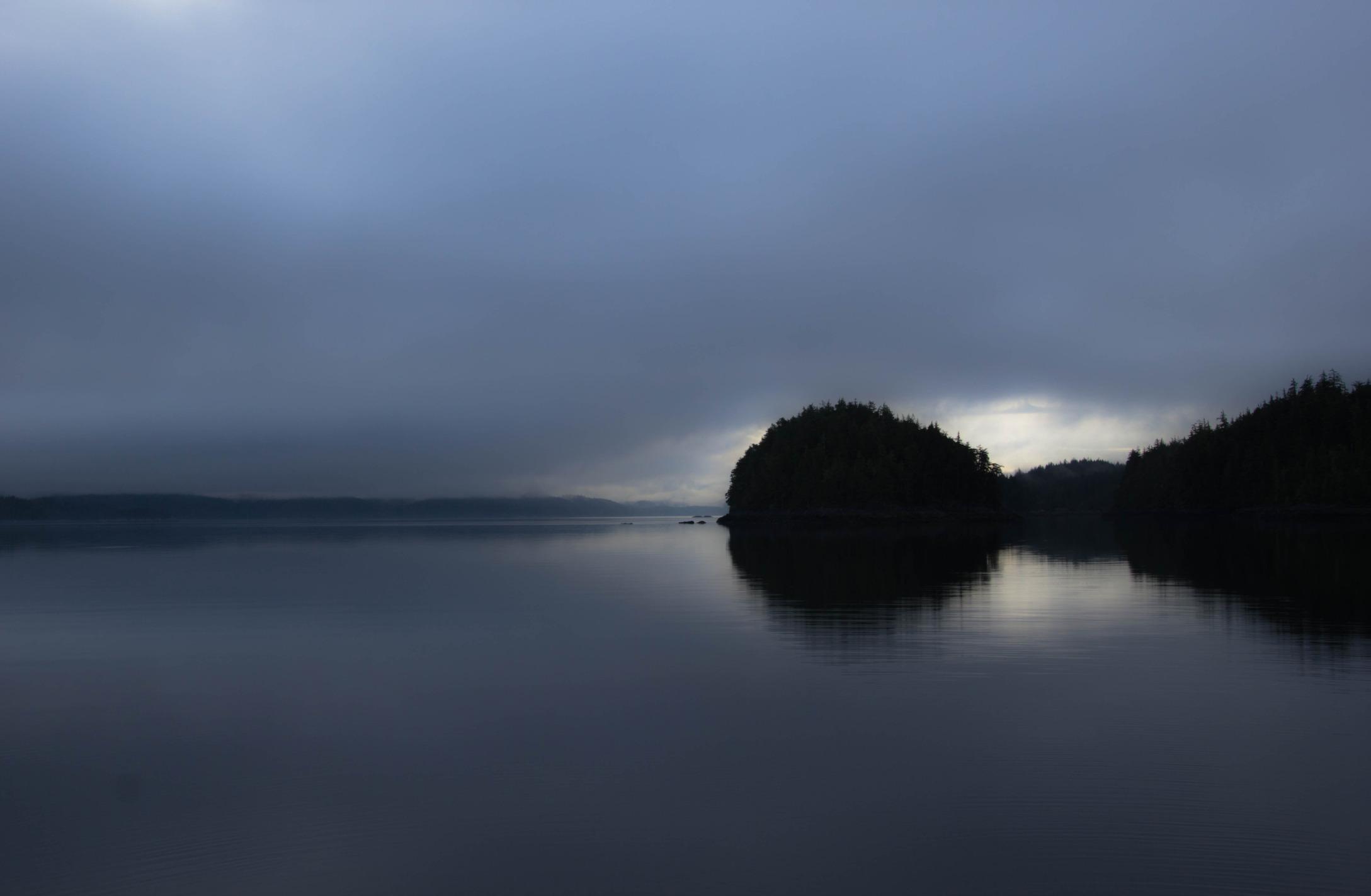

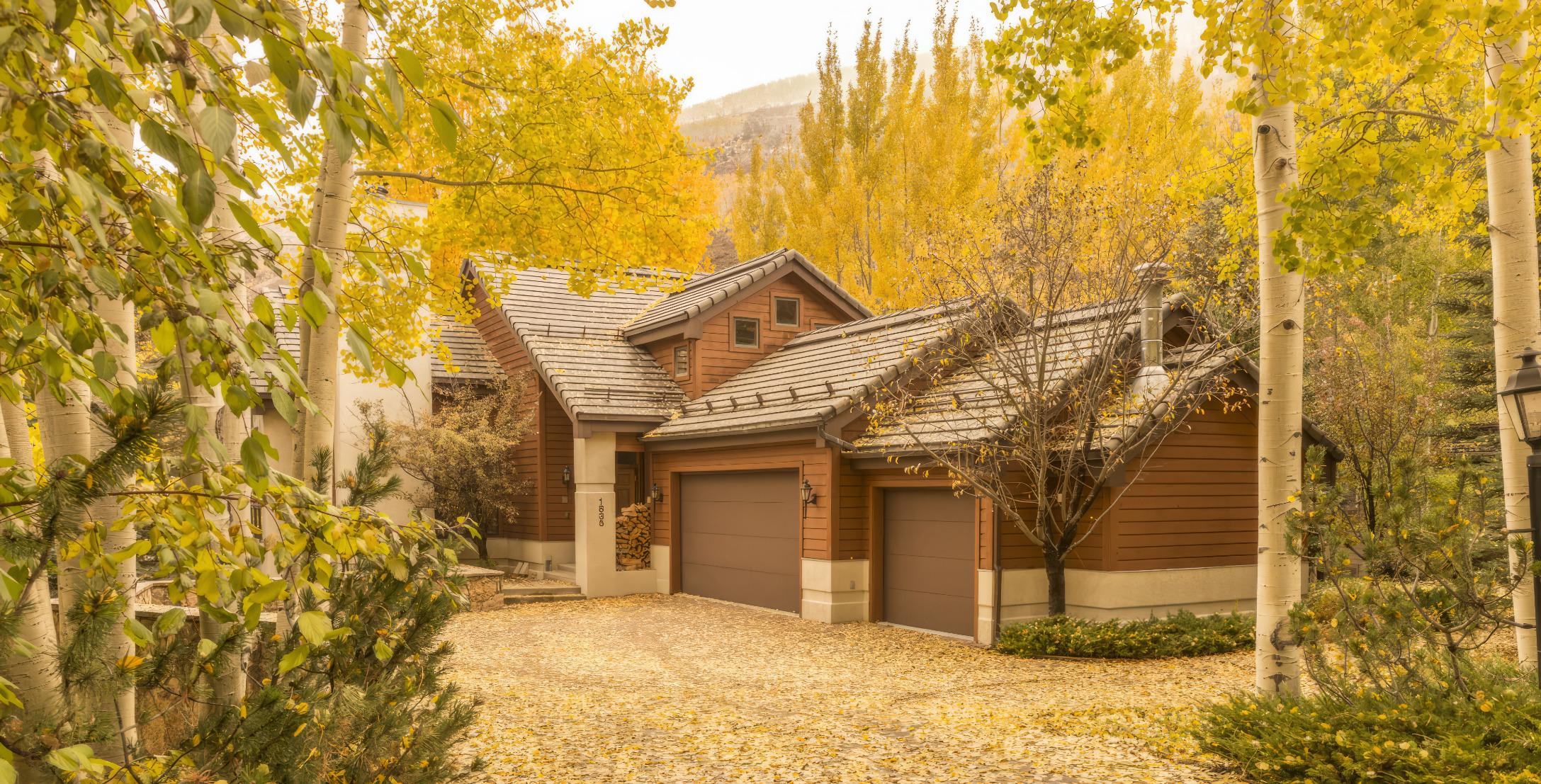
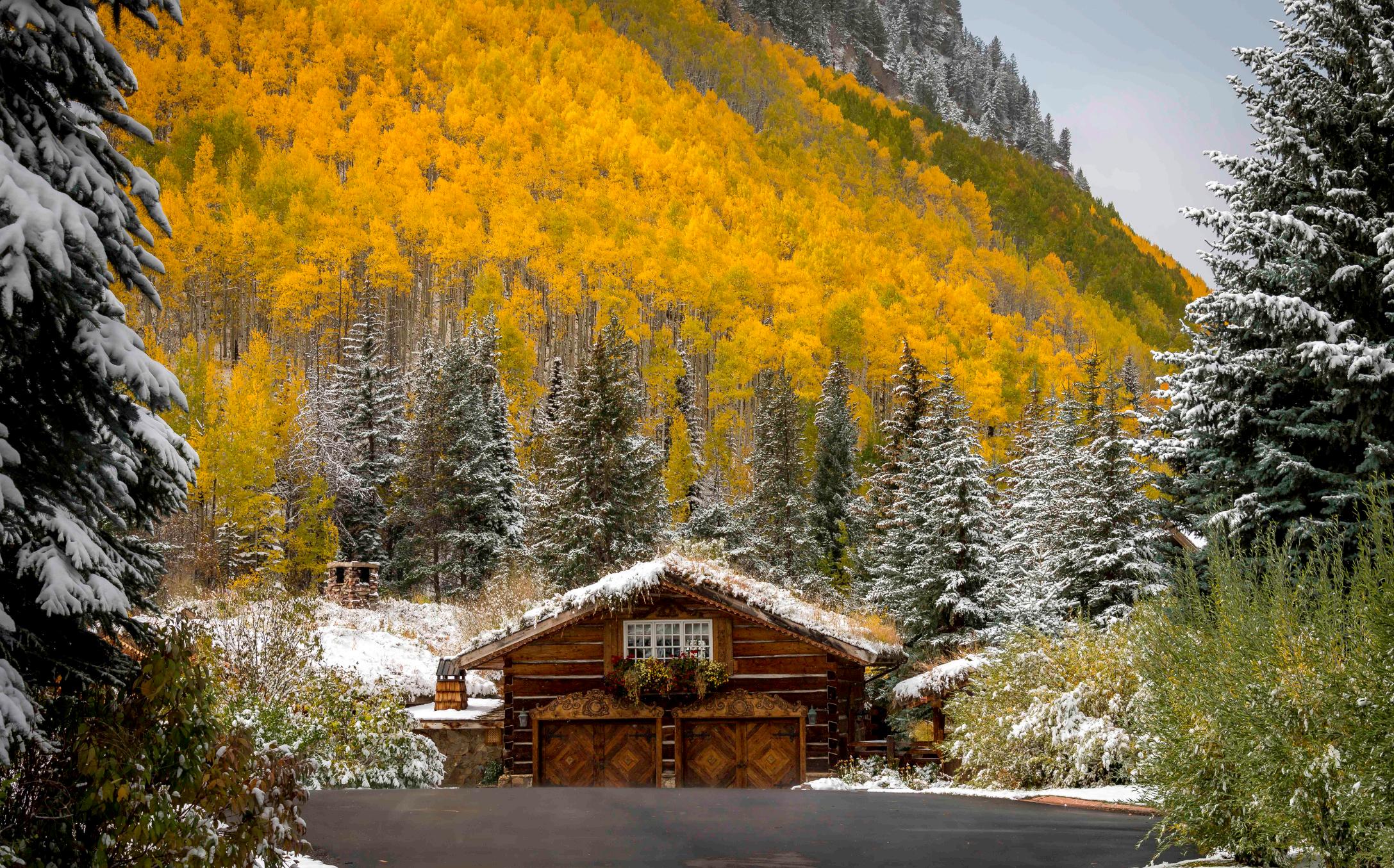
Early Morning, Grand Tetons National Park, WY
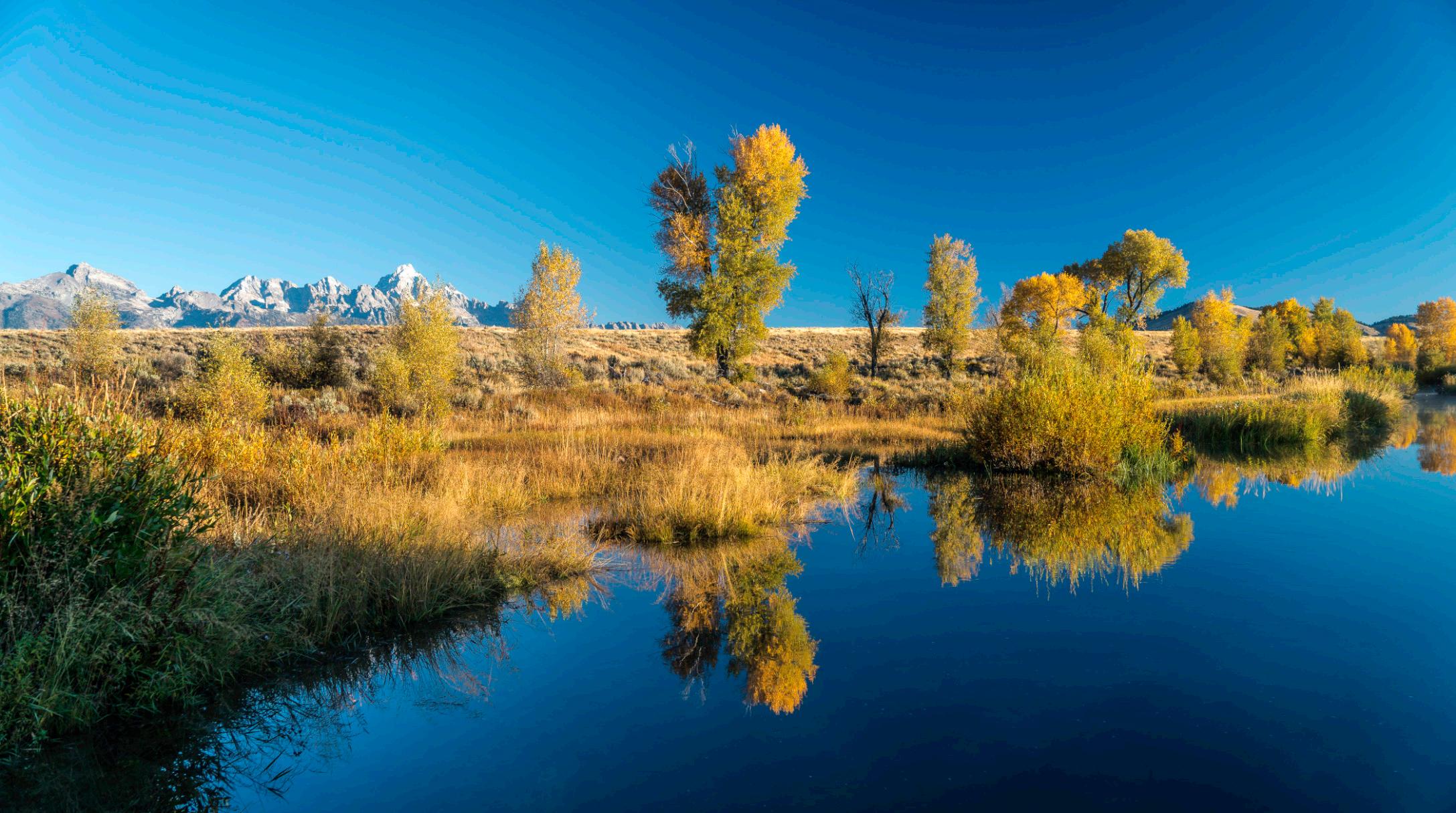

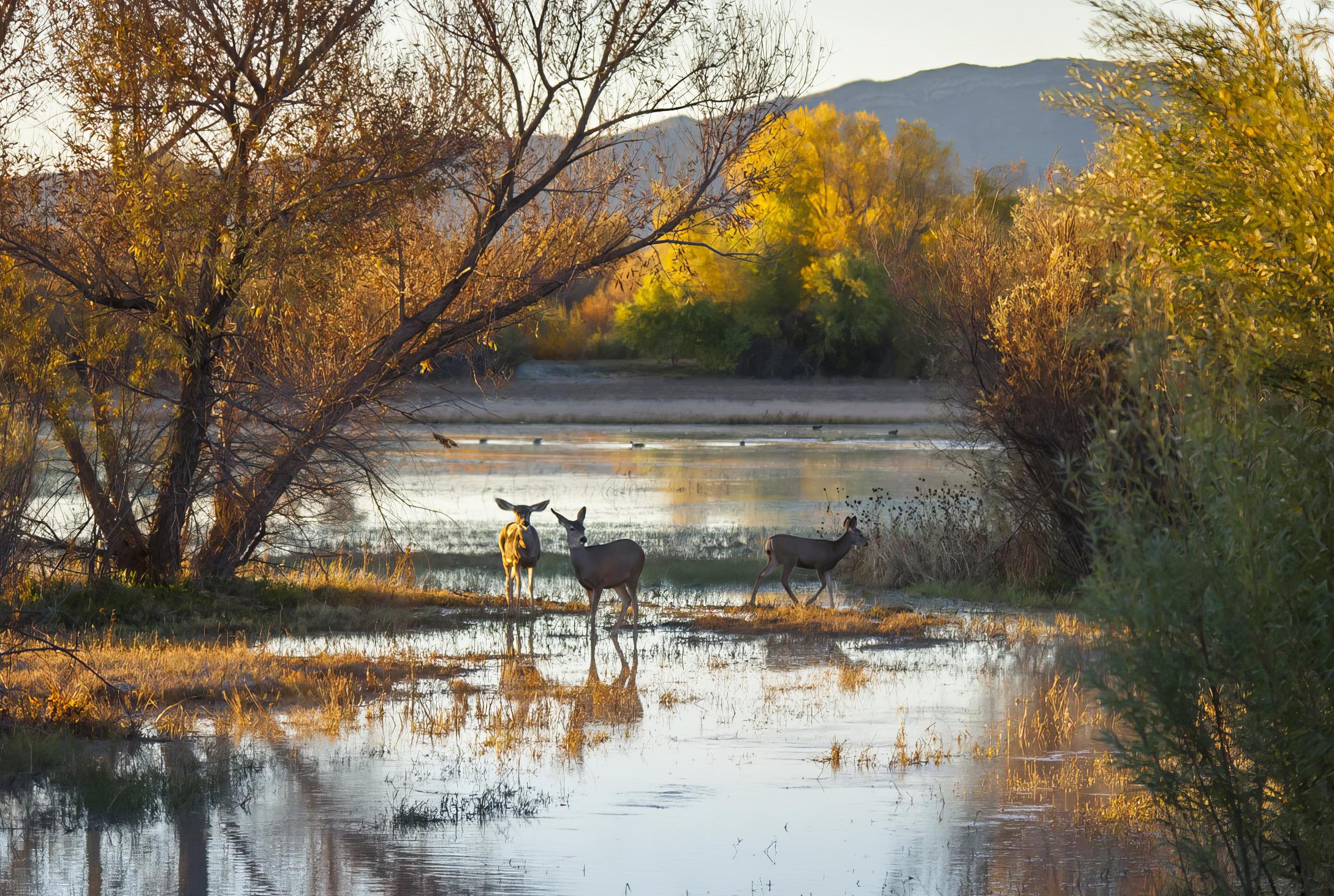

Undulations and hardwoods at sunset, Great Smoky Mountains, Tennessee

Intentional Camera Movement, Aspens in the North Kaibab National Forest, Arizona.
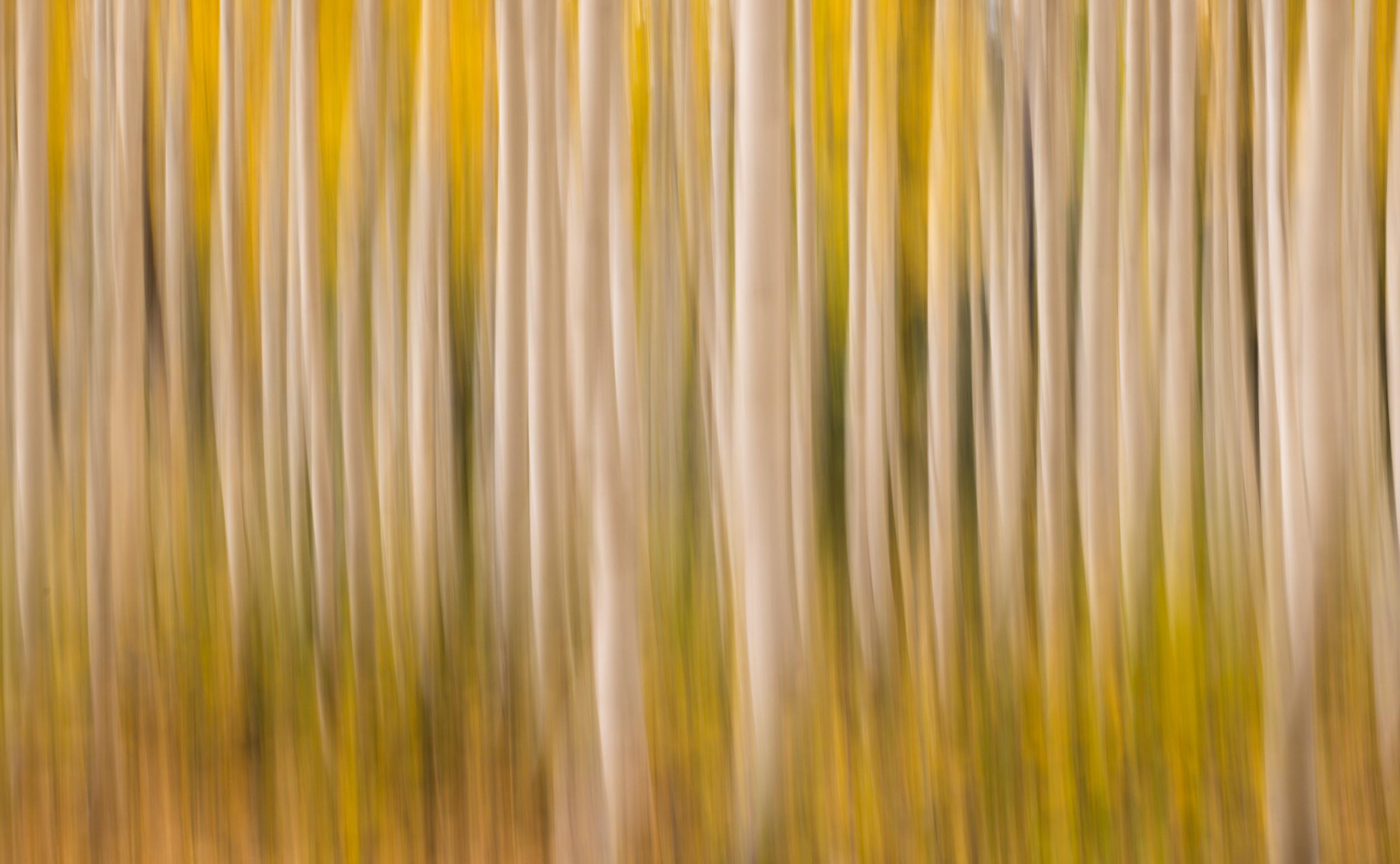
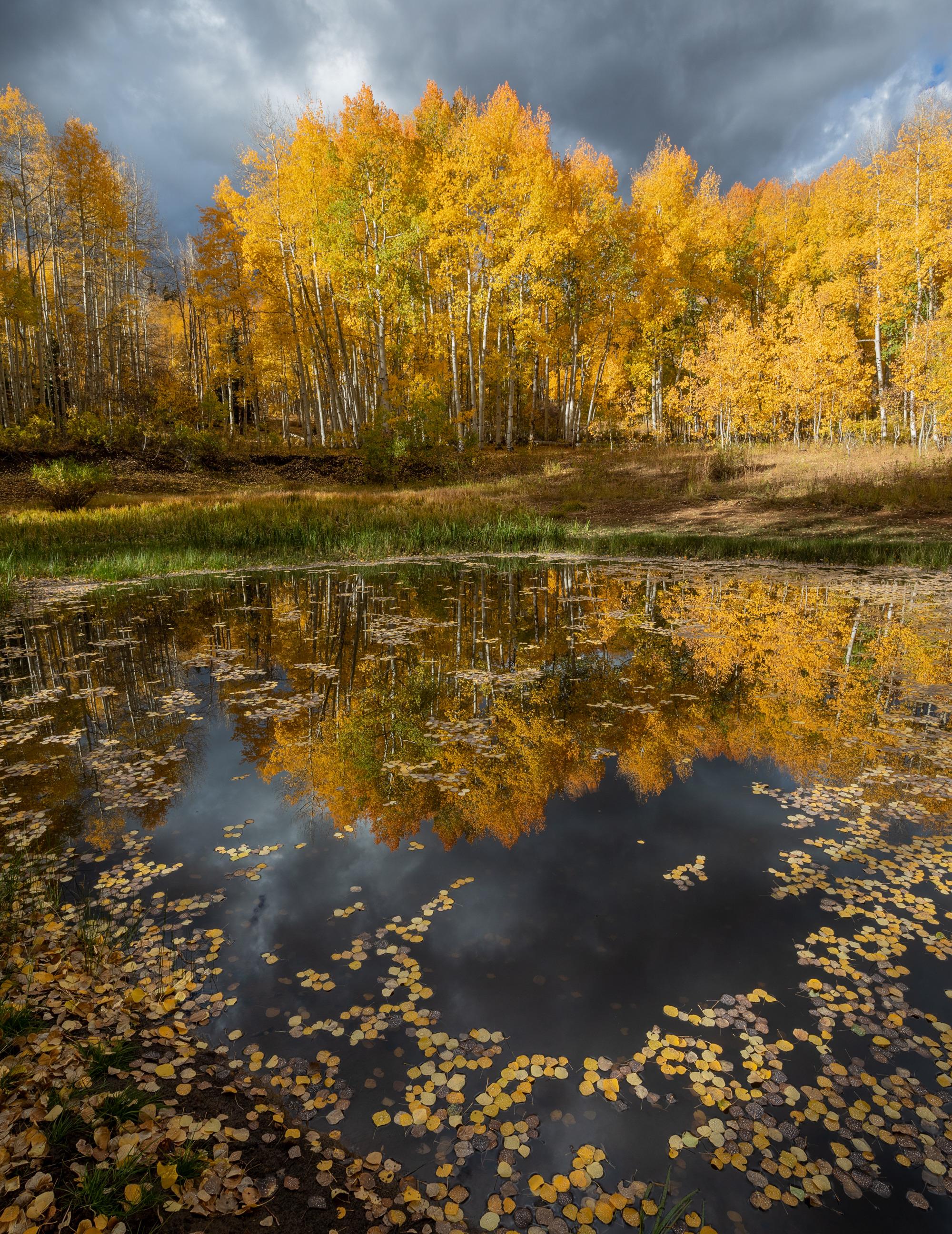

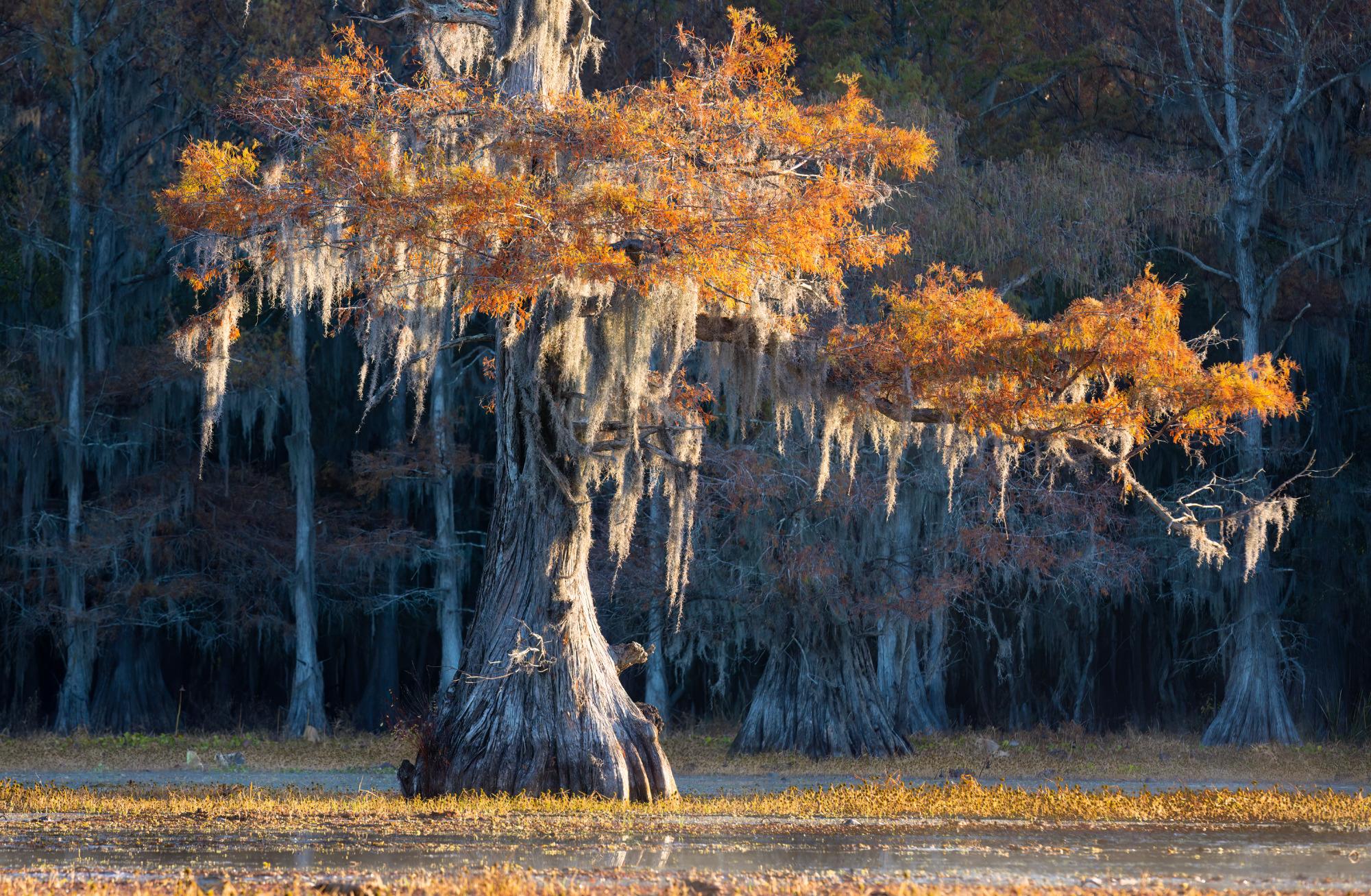
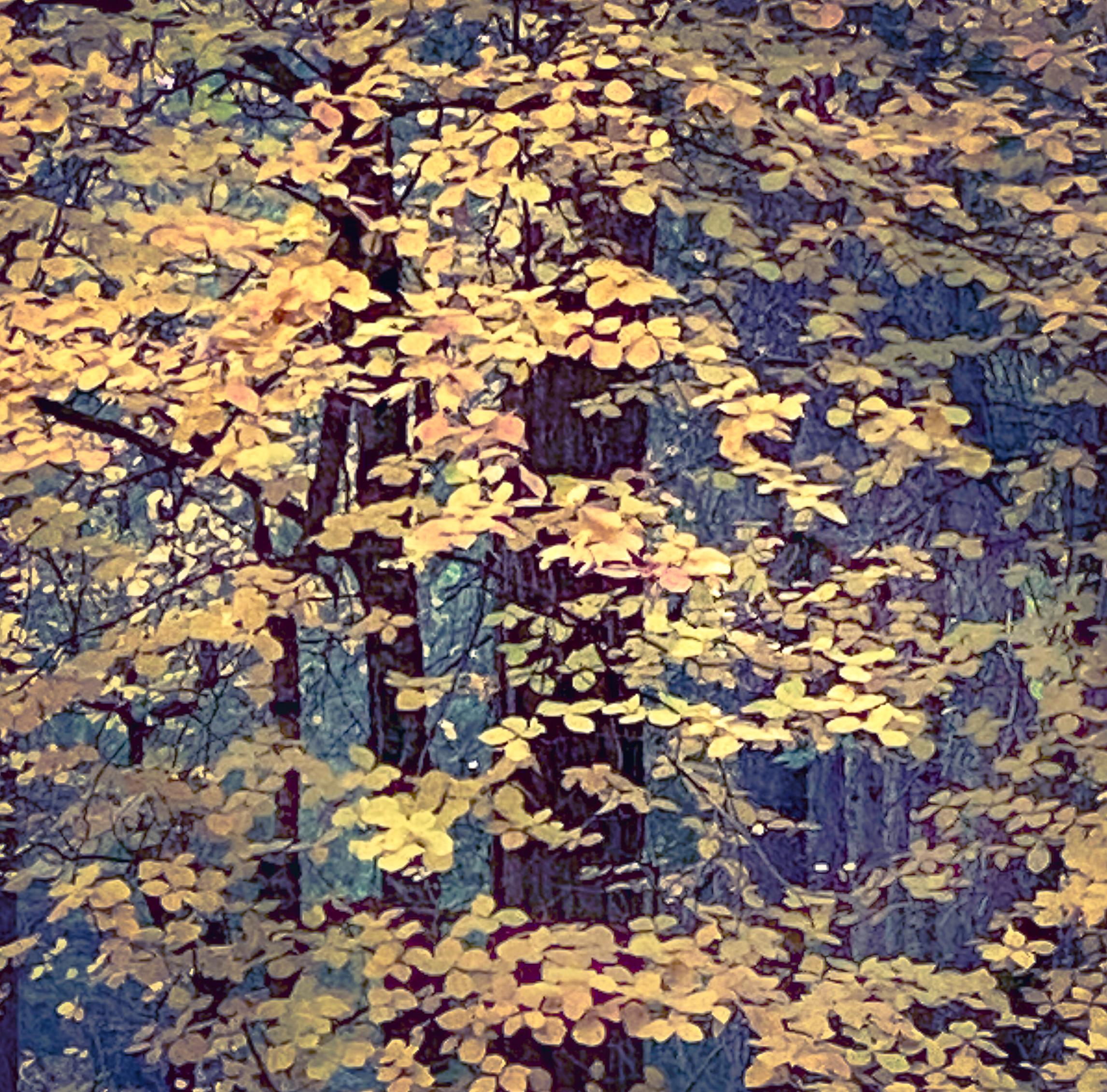
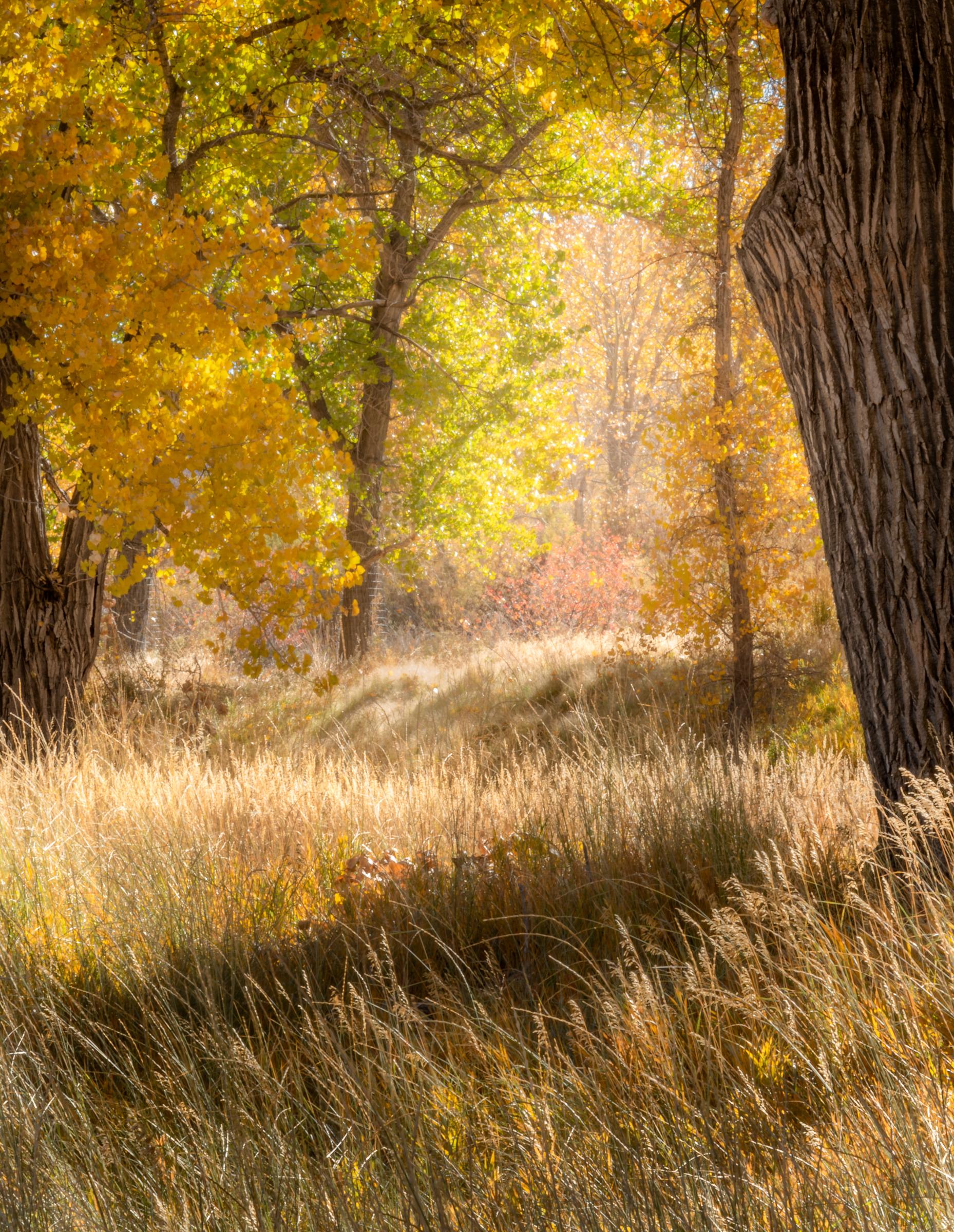
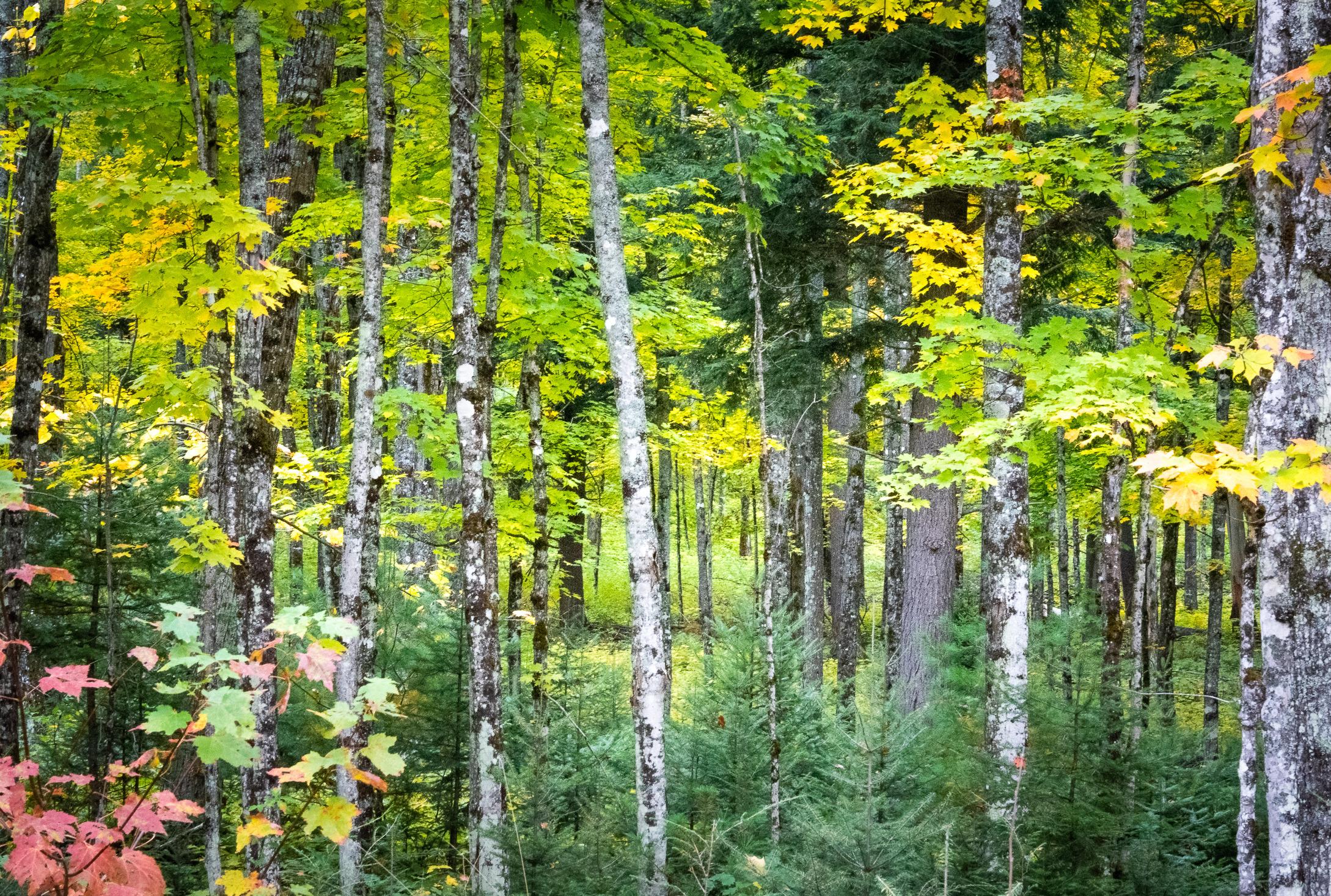
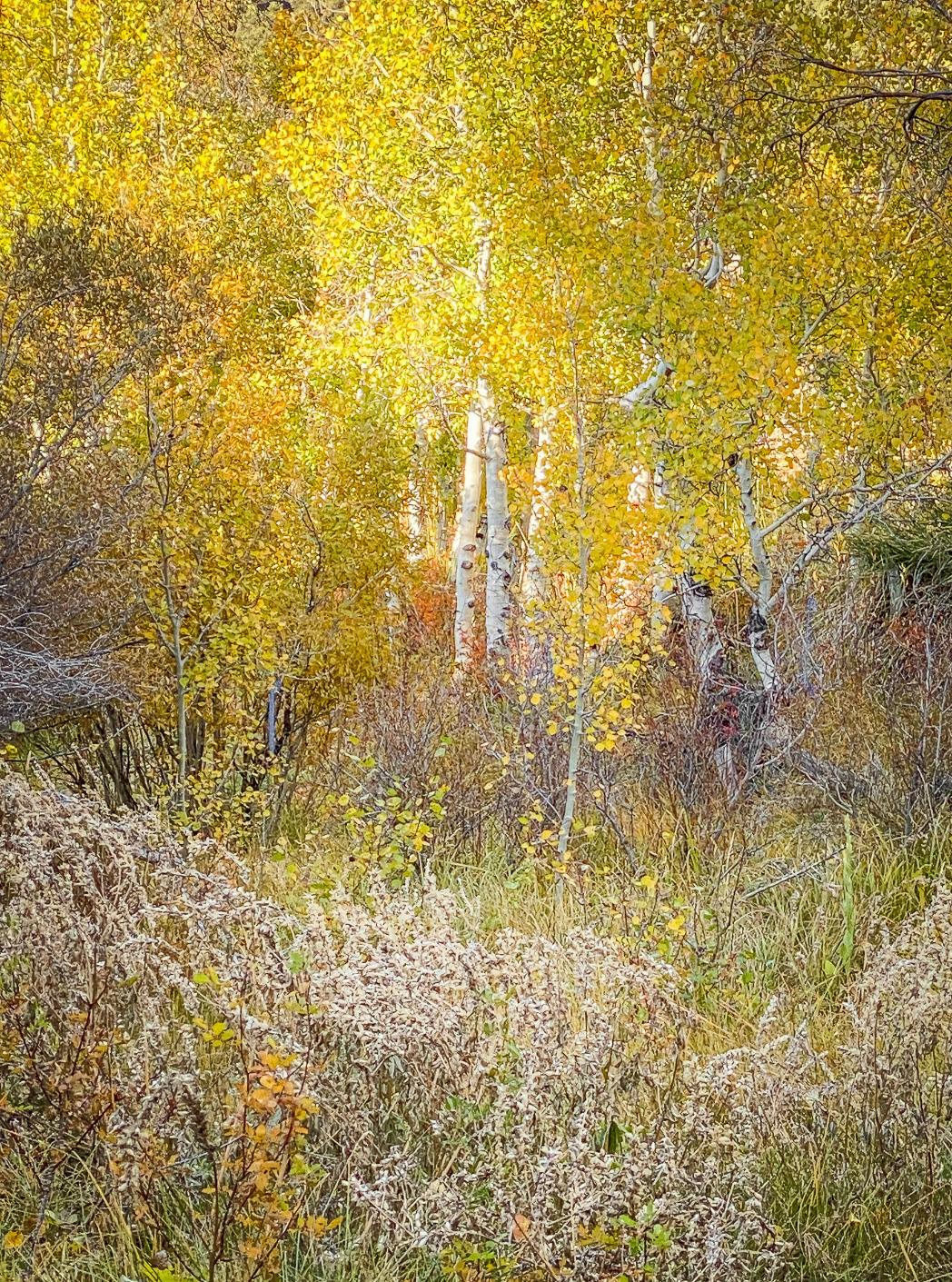
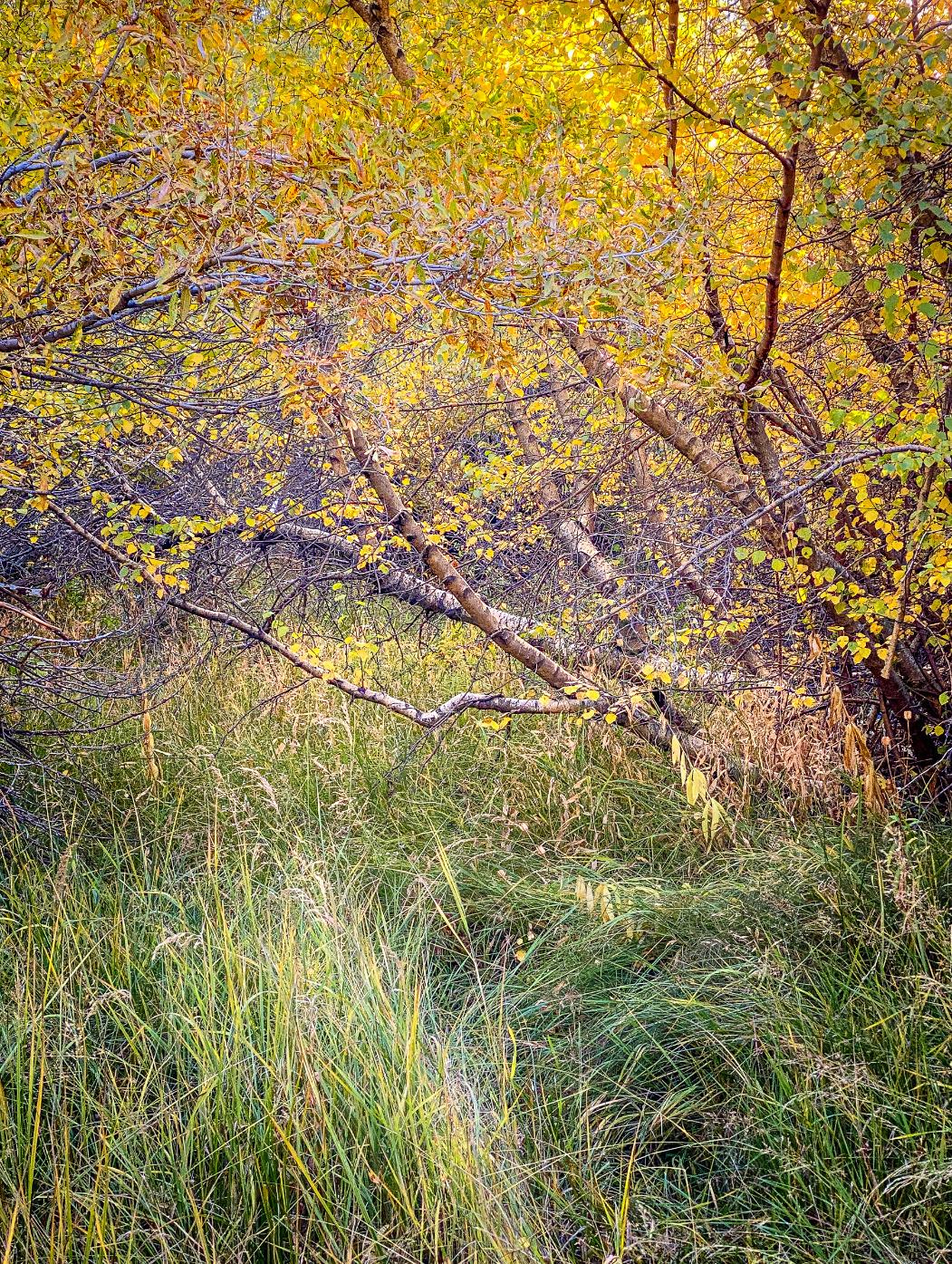
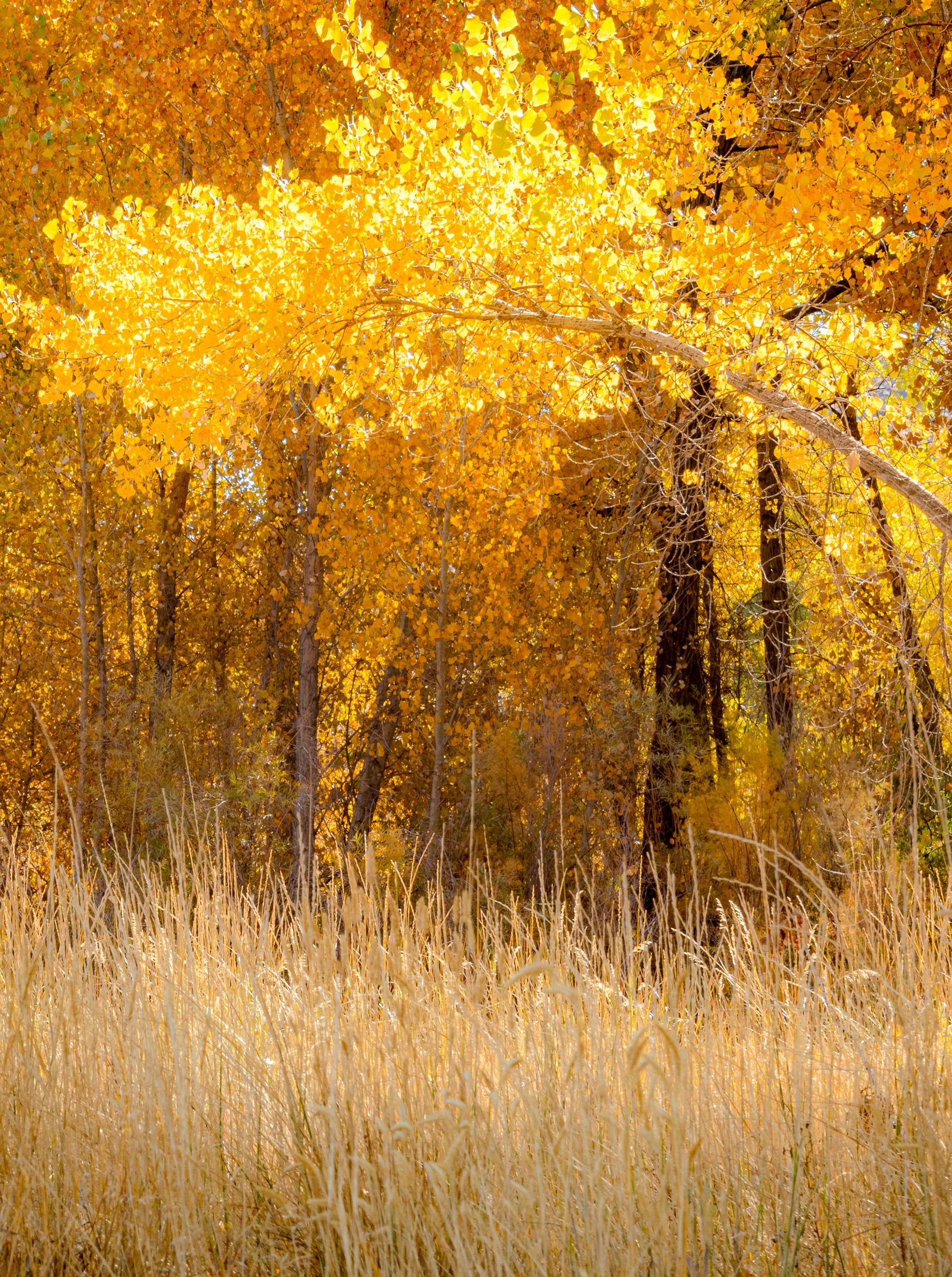
These photographs were shot in Maine during a 2019 workshop with Nathaniel Smalley. It was the most spectacular display of Fall color I have ever seen. The following week they had a “cyclonic” event and lost every leaf!
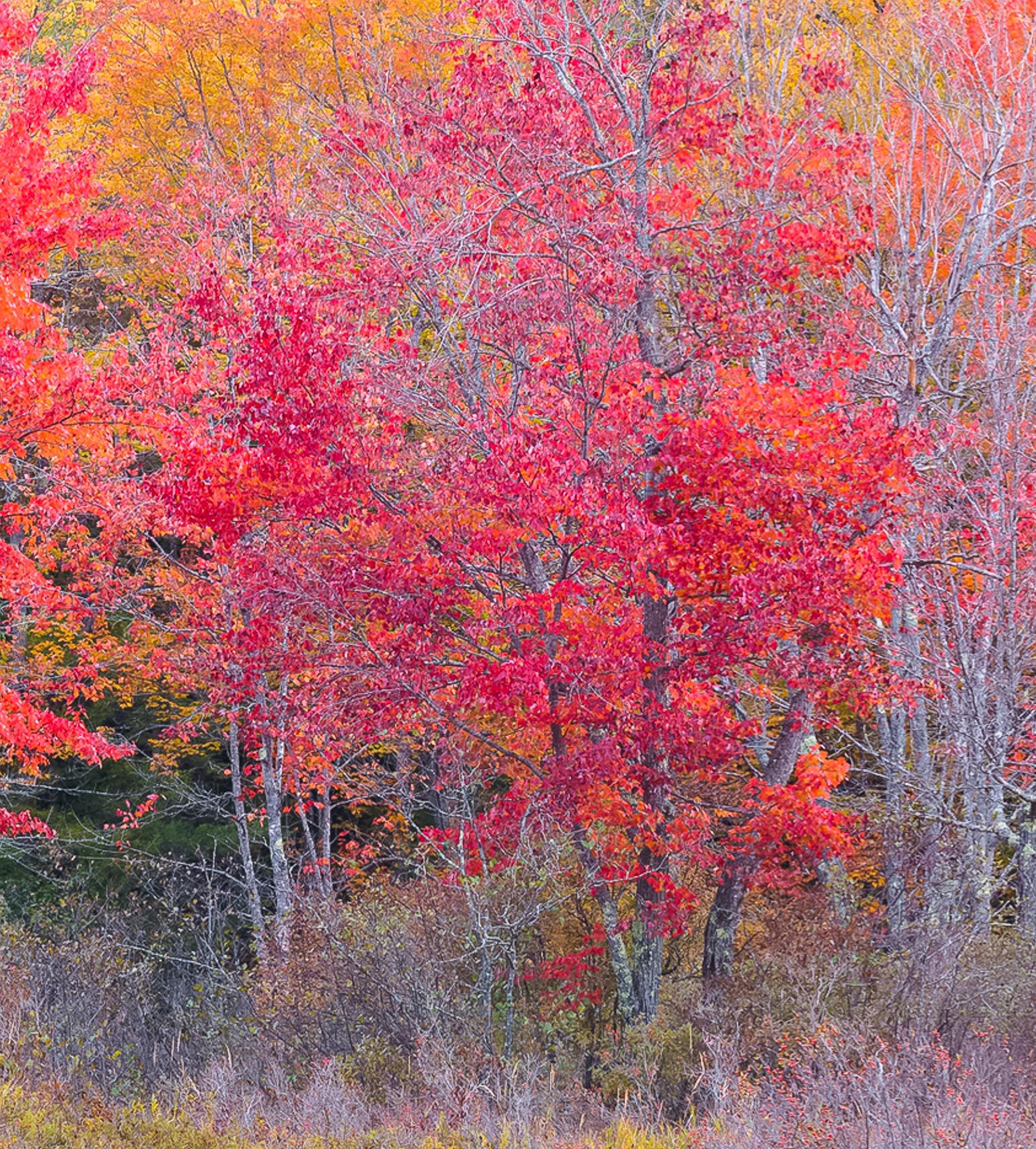


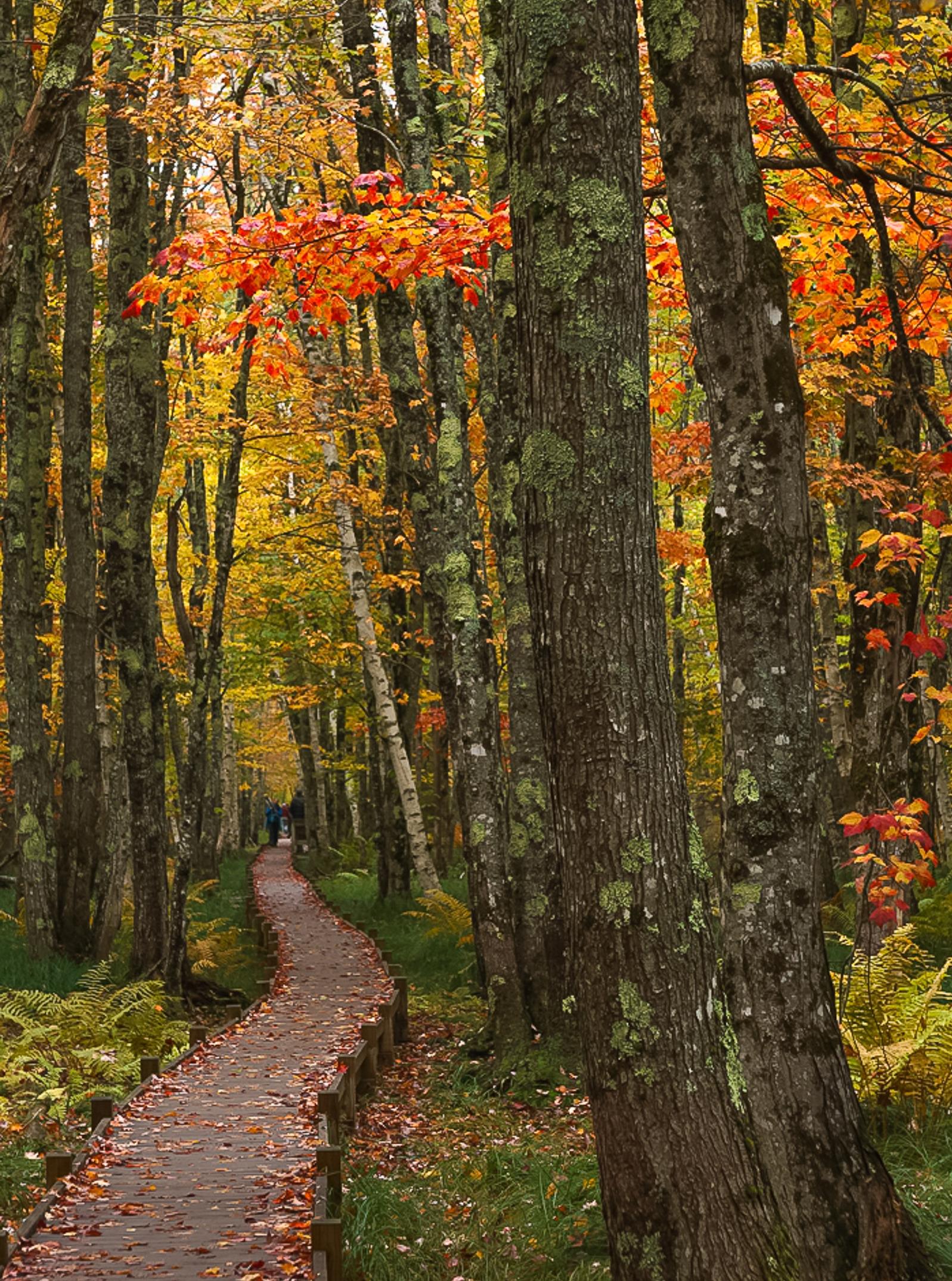
John Clement
John Clement began his career in photography in the early 70’s after graduating from Central Washington University with a double major in Geology and Geography. Since then he has earned a Masters of Photography from the Professional Photographers of America. He has received over 65 regional, national and international awards for his pictorial and commercial work. His photographs grace the walls of many businesses in the Northwest and has been published in numerous calendars and coffee table books. Clement has provided photographs for Country Music Magazine and Northwest Travel Magazine. He has supplied murals for the Seattle Seahawks Stadium and images for The Carousel of Dreams in Kennewick, WA.
Current projects include 17 – 4x8 foot glass panels featuring his landscapes in Eastern Washington for the Pasco Airport Remodel. Last year he finished a major project for the Othello Medical Clinic where almost 200 images were used to decorate the facilities.
www.johnclementgallery.com
John Clement Photography (Face Book) Allied Arts Gallery in Richland, WA.
Thomas Cloutier
Thomas Cloutier has been with SCCC since 2001, and he has been contributing to Focal Points Magazine since that time.
Cloutier’s interest in photography coincides with his interest in travel and giving representation to nature landscapes. His formal education in photography comes from CSU Long Beach. At present Cloutier is a volunteer at CSU, Long Beach where he taught Water Colors and Drawing at the Osher Lifelong Learning Institute (OLLI), designed for Seniors over 45. He also is a docent at Kleefield Contemporary Museum CSU Long Beach. He is Liaison for the Art And Design Departments for a scholarship program for students at CSU Long Beach, Fine Arts Affiliates, FineArtsAffiliates.org.
Cloutier at cde45@verizon.net
Joe Doherty
Joe Doherty grew up in Los Angeles and developed his first roll of film in 1972. He has been a visual communicator ever since.
Doherty spent his teens and twenties working in photography, most of it behind a camera as a freelance editorial shooter.
He switched careers when his son was born, earning a PhD in Political Science from UCLA. This led to an opportunity to run a research center at UCLA Law.
After retiring from UCLA in 2016, Doherty did some consulting, but now he and his wife, Velda Ruddock, spend much of their time in the field, across the West, capturing the landscape. www.joedohertyphotography.com
John Fisanotti
John Fisanotti was a photography major in his first three years of college. He has used 35mm, 2-1/4 medium format and 4x5 view cameras. He worked briefly in a commercial photo laboratory. In 1980, Fisanotti pivoted from photography and began his 32-year career in public service. Fisanotti worked for Redevelopment Agencies at four different Southern California cities.
After retiring from public service in 2012, Fisanotti continued his photographic interests. He concentrates on outdoors, landscape, travel and astronomical images (view here at http://www. johnfisanottiphotography.com). Since 2018, he expanded his repertoire to include architectural and real estate photography (view here at http://www. architecturalphotosbyfisanotti.com).
Fisanotti lives in La Crescenta and can be contacted at either: jfisanotti@sbcglobal.net or fisanottifotos@gmail.com
My true passion for photography began when my sons were born, continued thru my years coaching Special Olympics skiing, but really took off when I was at Mammoth skiing with my son, his wife and my grandkids. Of course I took lots of pix of them, but our visit to Berger’s Burgers really launched me. On the wall were gorgeous large landscape photos taken by Vern Clevenger.
I asked our waitress about them and she told me that he often came in for lunch with his son and she would point him out for me. I told him how much I loved his work andI asked if he ever did workshops His was my first. From there to many at Mountainlight in Bishop with Jack Dykinga, John Shaw, Justin Black, Jerry Dodrill, Jeff Foote and David Meunch. From those wonderful experiences I began to travel the world to Italy, New Zealand, Nepal, Botswana, Kenya, the Yukon, Mongolia, Namibia, South Georgia and Antarctica.
I will forever be grateful for the gift photography has been to my life for the wonderful fellow
photographers I have met, the workshop leaders I have had and the amazing places I have been able to experience.
Species identification in a field botany class was the impetus for picking up a camera in earnest, and the camera remained a useful tool for a long time. Somewhere along the way I started caring less about identification markers and more about expressing the awe I felt about my subjects. Mostly it's bugs, blooms, and dogs that are in front of my camera. The lion’s share of my photography is centered around animal rescue, capturing that special something that draws the attention of a potential adopter. Over the years, I’ve been in a few group art shows, which is a great feeling and an honor. But that pales in comparison to the time a woman came to adopt based on an image she saw online. Papa was being overlooked at the shelter due to his age, but he struck a handsome pose for me. A week later, he was adopted by a woman who drove over two hours through rainy LA traffic, all because she saw a friend for life in Papa’s portrait. Some days I swear my camera has saved my life, but I’m so thankful thinking it has saved the lives of others, as well.
Larry Miller bought his first SLR camera in 1985 to document hikes in the local mountains. In fact, his first Sierra Club Camera Committee outing was a wildflower photo shoot in the Santa Monica Mountains led by Steve Cohen in 1991. Since then the SCCC has introduced him to many other scenic destinations, including the Antelope Valley California Poppy Reserve, the Gorman hills, and Saddleback Butte State Park.
Miller’s own photography trips gradually expanded in scope over the years to include most of the western National Parks and National Monuments, with the Colorado Plateau becoming a personal favorite.
Photography took a backseat to Miller’s career during the 32+ years that he worked as a radar systems engineer at Hughes Aircraft/Raytheon Company.
Since retiring in 2013, he has been able to devote more time to developing his photographic skills. Experiencing and sharing the beauty of nature continues to be Miller’s primary motivation. lemiller49@gmail.com
John Nilsson has a fond memory of his father dragging him to the Denver Museum of Natural History on a winter Sunday afternoon. His father had just purchased a Bosely 35mm camera and had decided he desperately wanted to photograph one of the dioramas of several Seal Lions in a beautiful blue half-light of the Arctic winter. The photo required a tricky long exposure and the transparency his father showed him several weeks later was spectacular and mysterious to Nilsson’s young eyes. Although the demands of Medical School made this photo one of the first and last Nilsson’s Dad shot, at five years old the son was hooked.
The arrival of the digital age brought photography back to Nilsson as a conscious endeavor - first as a pastime enjoyed with friends who were also afflicted, and then as a practitioner of real estate and architectural photography during his 40 years as a real estate broker.
Since retiring and moving to Los Angeles, Nilsson continued his hobby as a nature and landscape photographer through active membership in the Sierra Club Angeles Chapter Camera Committee, as well as his vocation as a real estate photographer through his company Oz Images LA. The camera is now a tool for adventure! www.OzImagesLA.com
Velda Ruddock
Creativity has always been important to Velda Ruddock. She received her first Brownie camera for her twelfth birthday and can’t remember a time she’s been without a camera close at hand.
Ruddock studied social sciences and art, and later earned a Masters degree in Information and Library Science degree from San Jose State University. All of her jobs allowed her to be creative, entrepreneurial, and innovative. For the last 22 years of her research career she was Director of Intelligence for a global advertising and marketing agency.
TBWA\Chiat\Day helped clients such as Apple, Nissan, Pepsi, Gatorade, Energizer, and many more, and she was considered a leader in my field.
During their time off, she and her husband, Joe Doherty, would travel, photographing family, events and locations. However, in 2011 they traveled to the Eastern Sierra for the fall colors, and although they didn’t realize it at the time, when the sun came up over Lake Sabrina, it was the start of changing their careers.
By 2016 Ruddock and Doherty had both left their “day jobs,” and started traveling – and shootingnature – big and small – extensively. Their fourwheel-drive popup camper allows them to go to areas a regular car can’t go and they were – and are –always looking for their next adventure.
www.veldaruddock.com
VeldaRuddockPhotography@gmail.com
Rebecca Wilks
Photography has always been some kind of magic for me, from the alchemy of the darkroom in my teens to the revelation of my first digital camera (a Sony Mavica, whose maximum file size was about 70KB) to the new possibilities that come from my “tall tripod” (drone.)
Many years later, the camera still leads me to unique viewpoints and a meditative way to interact with nature, people, color, and emotion. The magic remains.
The natural world is my favorite subject, but I love to experiment and to do cultural and portrait photography when I travel. I volunteer with Through Each Other’s Eyes, a nonprofit which creates cultural exchanges through photography, and enjoy working with other favorite nonprofits, including my local Meals on Wheels program and Cooperative for Education, supporting literacy in Guatemala.
My work has been published in Arizona Highways Magazine, calendars, and books, as well as Budget Travel, Cowboys and Indians, and Rotarian Magazines, and even Popular Woodworking.
I'm an MD, retired from the practice of Obstetrics and Gynecology and Medical Acupuncture. I live in the mountains of central Arizona with my husband and Gypsy the Wonder Dog.
 The Altar to Fall © Joe Doherty
The Altar to Fall © Joe Doherty